March 17
Breakfast at our hotel, looking out at the High Atlas mountains.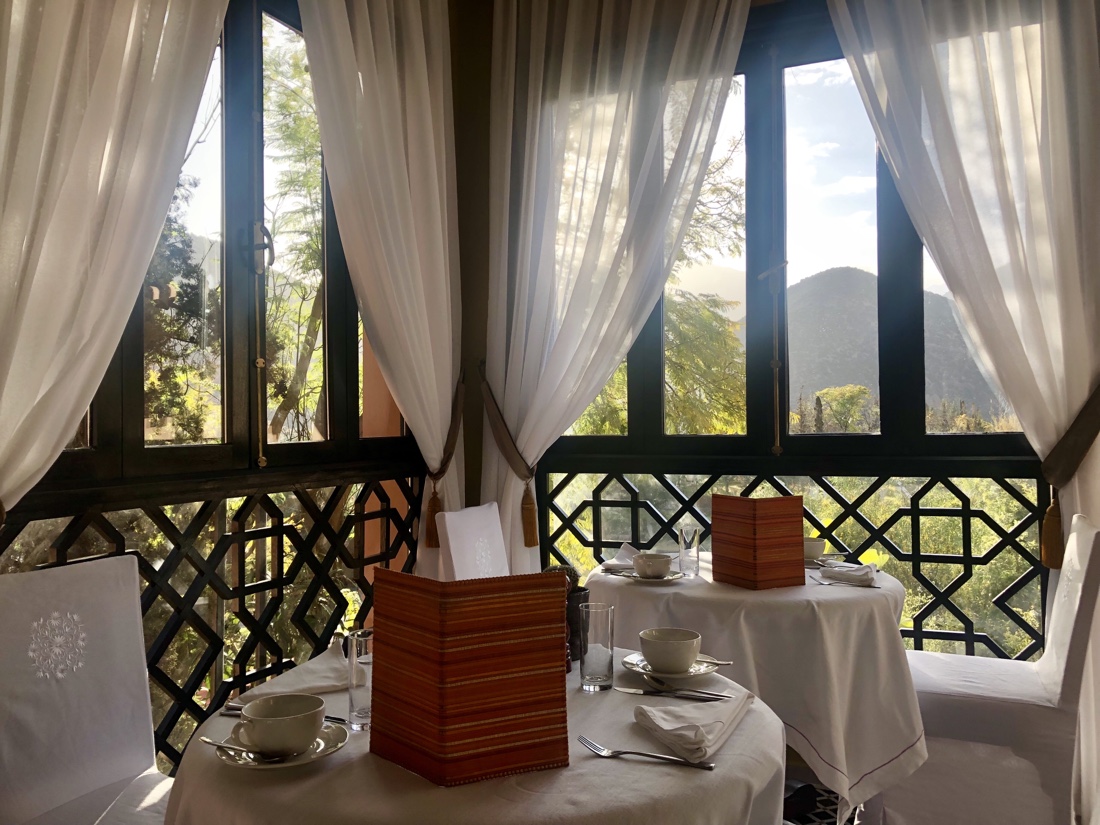
Here are a few photos to give you only a very small taste of our fabulous hotel.
The ceiling of our room 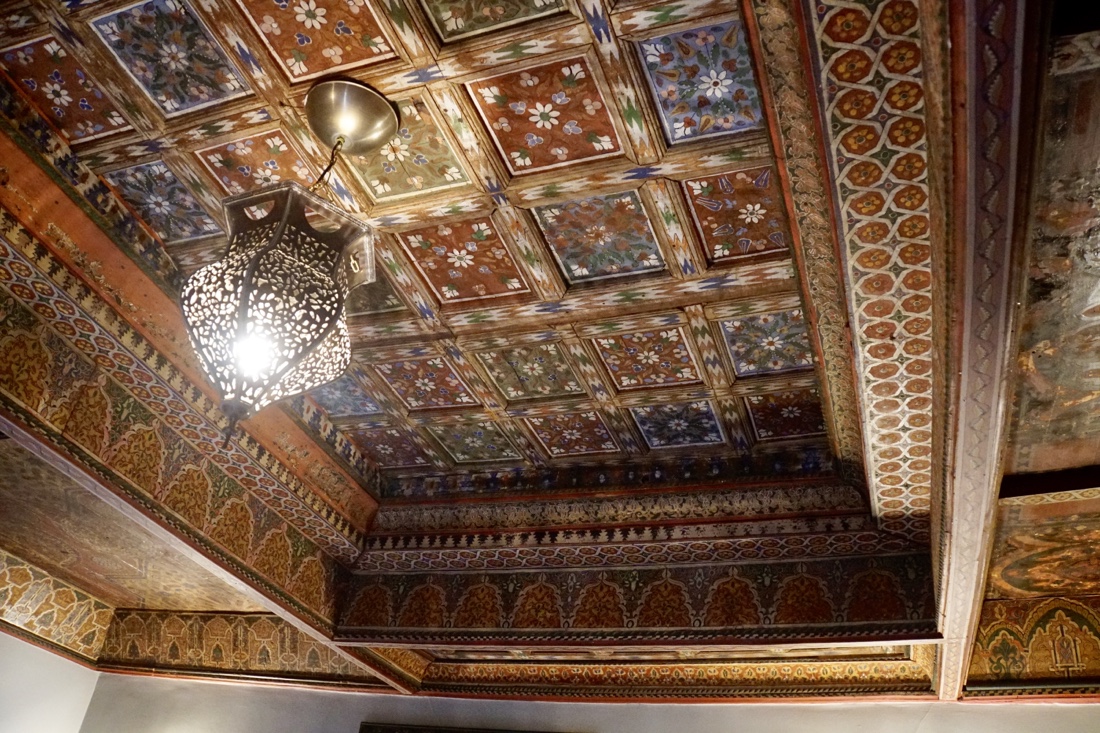
The rubber ducky with fez on, perched on the side of our tiled bathtub/shower.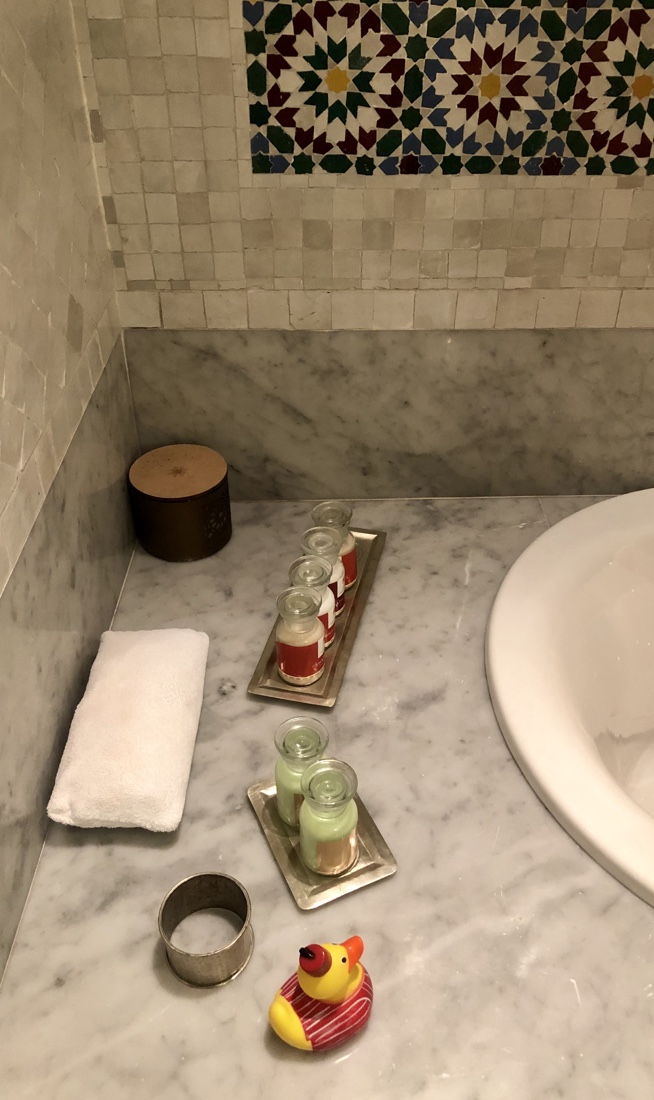
View of the pool and mountains from the balcony of our room.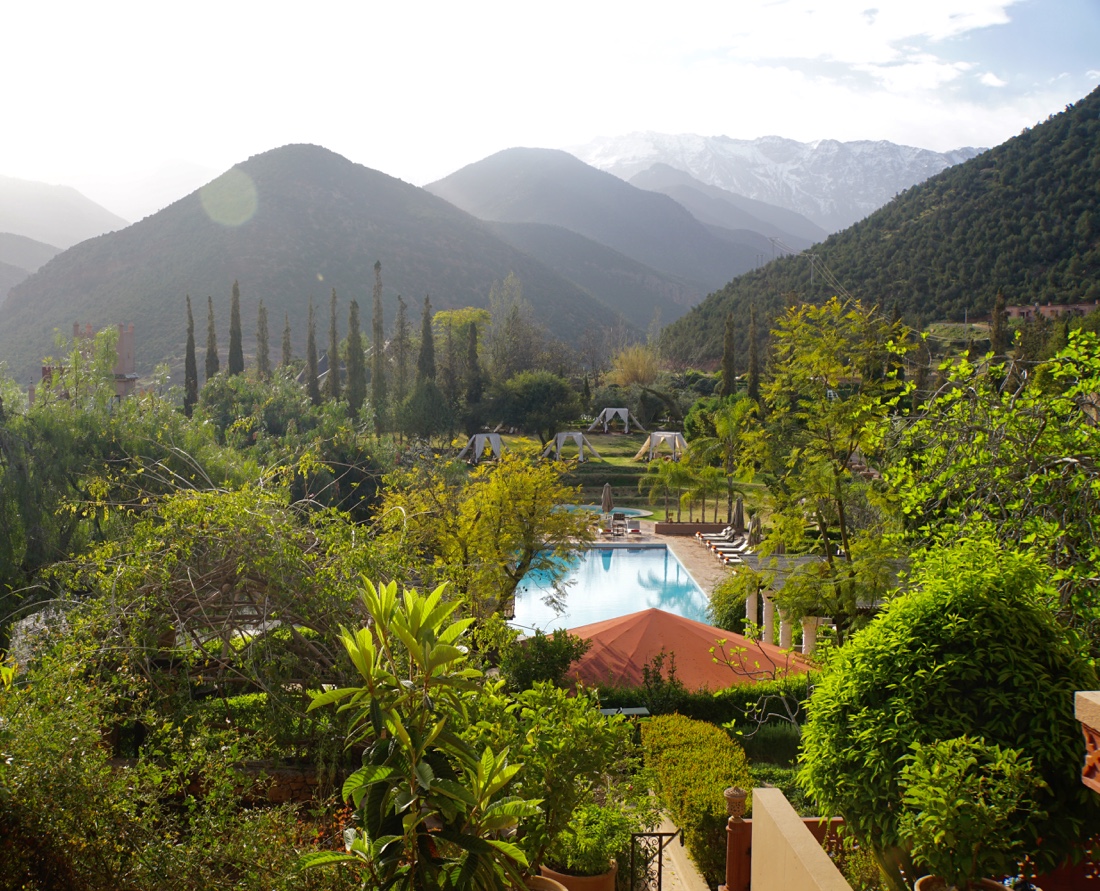
Small pool near our room,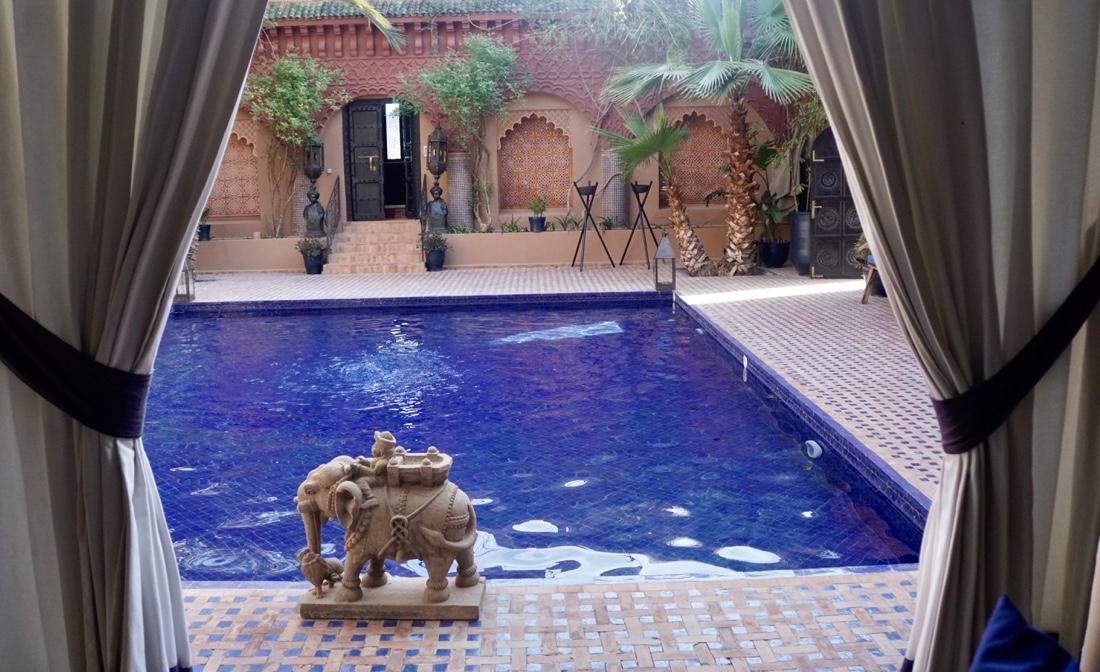
Today, we explore the High Atlas Mountains. A little bit. We let our guide, Jaouad (pronounced as if it rhymed with “road”), know that we are not going to be summiting any peaks. Jaouad takes our instructions to heart and proceeds at a very leisurely, okay, really slow, pace. 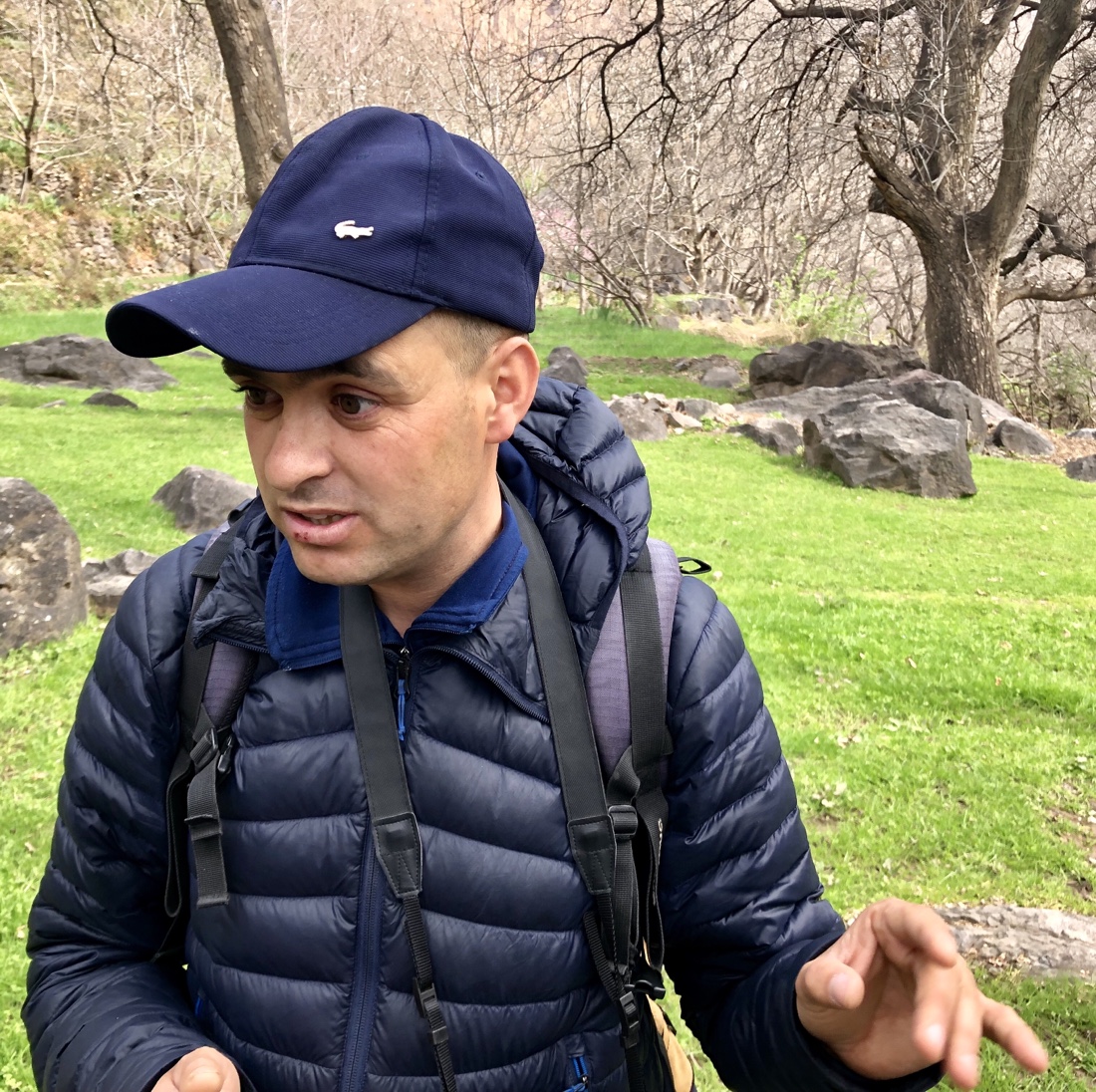
Jaouad is one of the best Mountain guides in the High Atlas Mountains, born there and graduated from the guiding school in Tabant, Azilal, which was the first guiding school in the whole of Africa. He also has a BA in English literature from Al Qadi University. His knowledge and enthusiasm make him a real ambassador for the High Atlas region. He loves to share all the information, history and lifestyle of Berbers.
We start at the village of Imlil, one of the larger villages in the mountains. There are many others hiking, ranging from serious hikers who will take six hours to summit, to folks who ride up on donkeys (who, of course, we look down upon) to young girls using selfie sticks to capture themselves with the mountains in the background.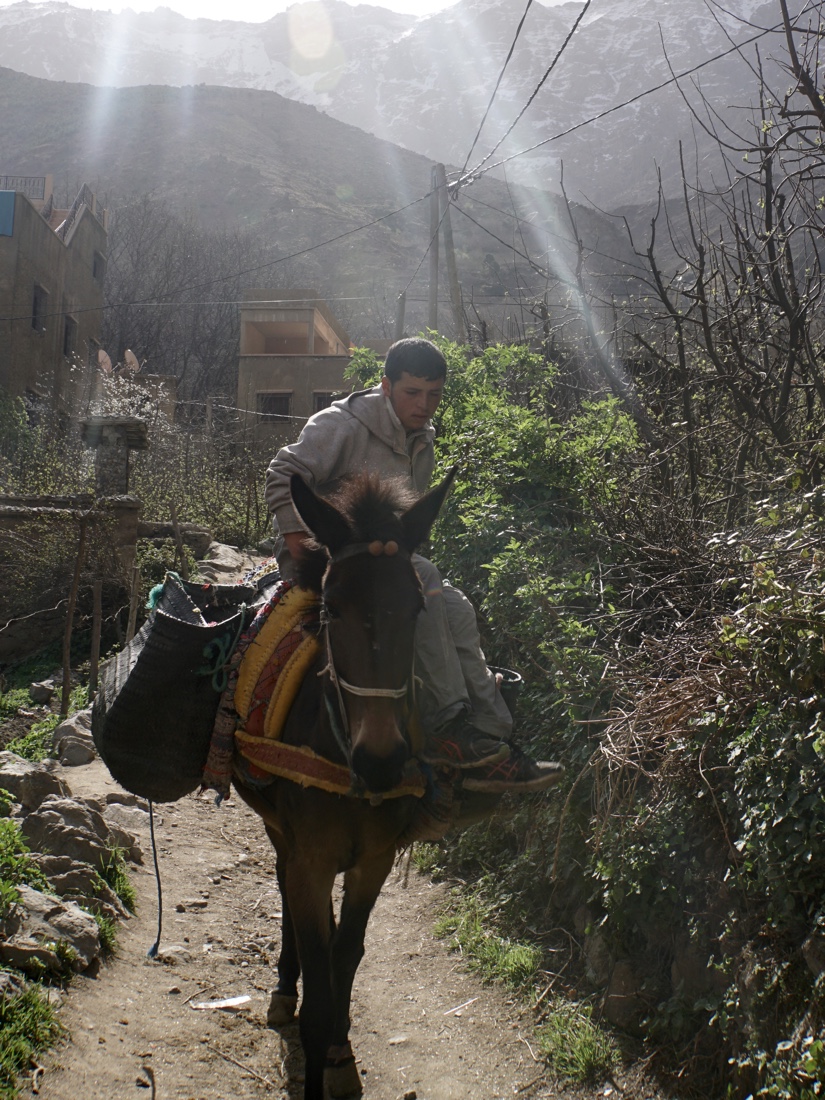 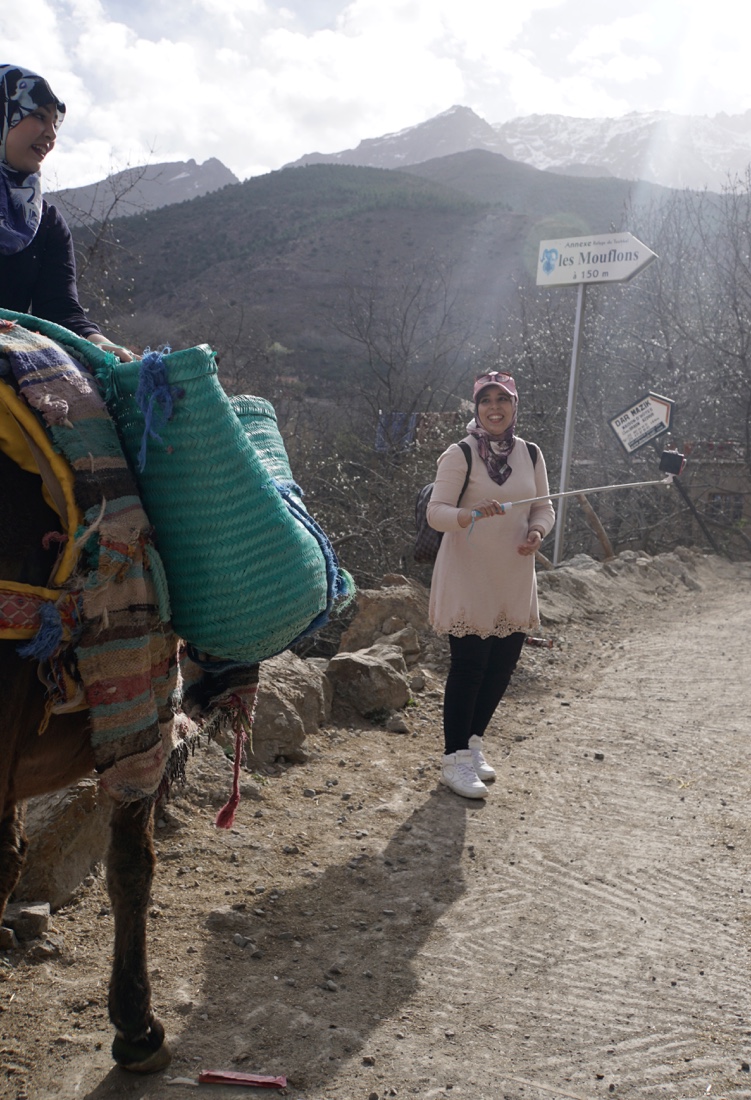 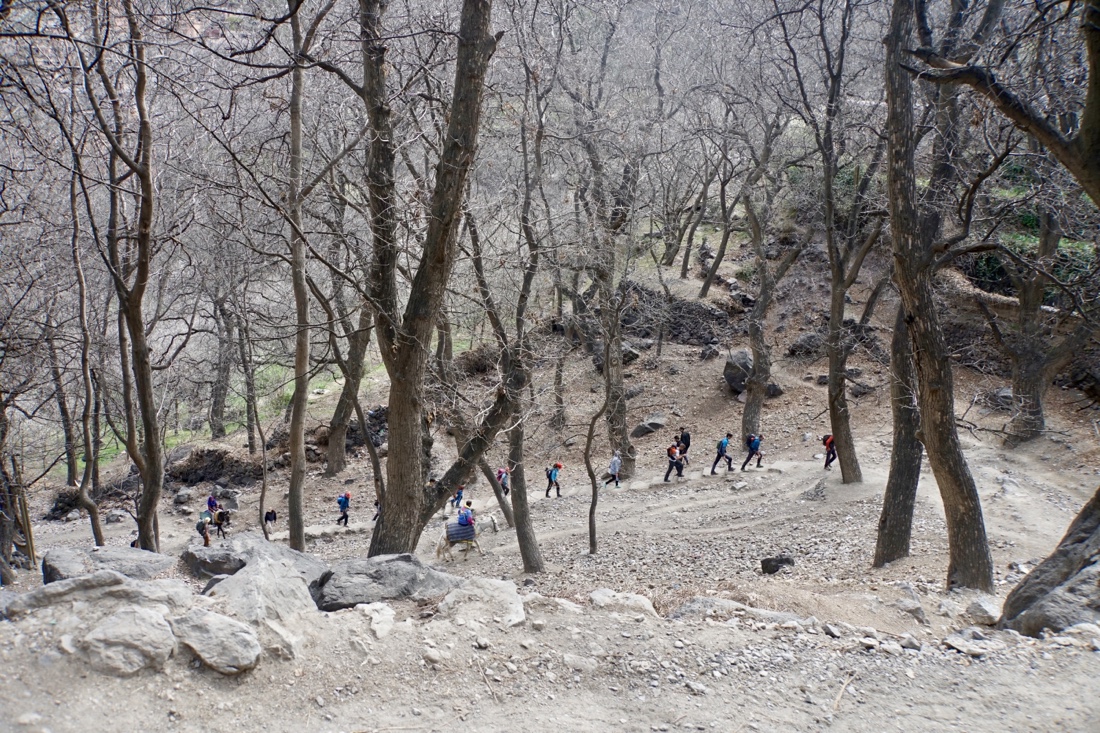
I would describe my hiking at this point as very slow uphill with frequent stops to catch a breath and nervous on rocky downhills, readily accepting Jaouad’s offer of a hand for help. This likely means that hiking the Inca Trail in Peru is not in my future. But I can live with that. Carol is better, and I accept, and resent her for, that. I guess my hiking prowess is consistent with my preference for taking moving walkways at airports. Alas, no such moving walkways exist in the High Atlases.
The several-hour walk is really very pleasant, the weather and views good. Jaouad describes the dramatic impact that tourism has had on the region and its culture. He accepts all of that, but clearly does not love it. He points out all of the different kinds of trees and plants as we walk.
We stop at a rug store and look at rugs.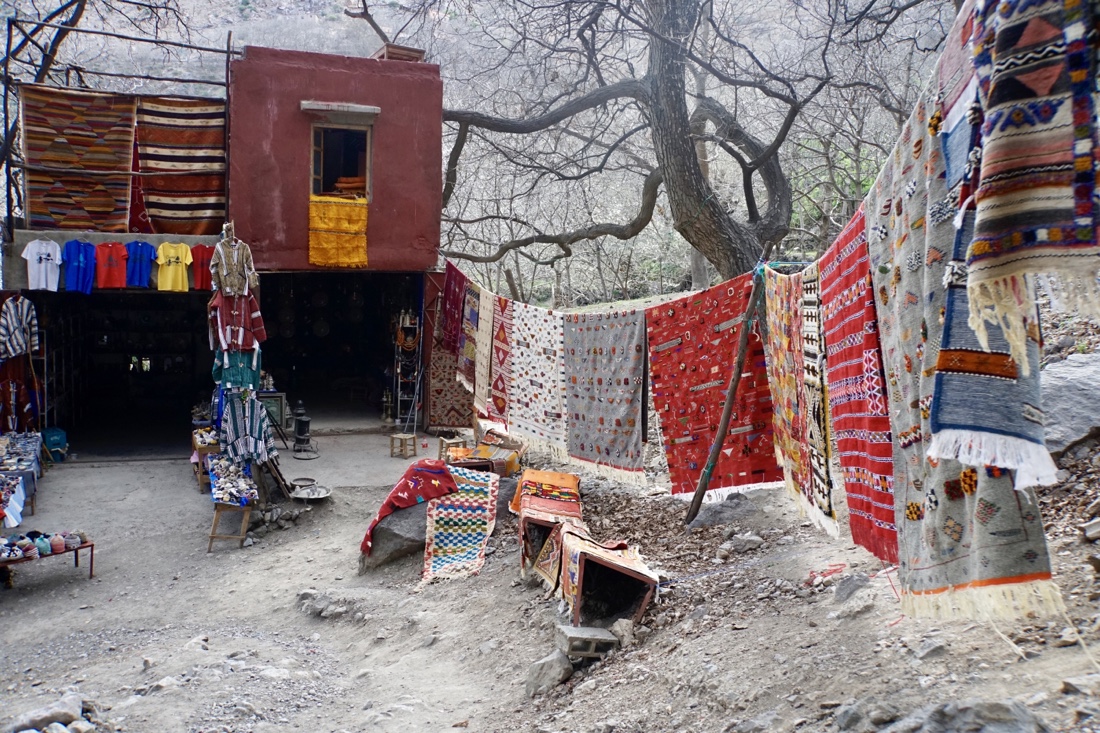 While there are a few we like, we feel that we did enough rug buying in Fes. We’d actually made the choice to go with a more established and upscale places for rugs and ceramics, instead of opting for funkier individual places, as we certainly would have done fifty-one years ago. A part of me is a bit sad at this realization. While there are a few we like, we feel that we did enough rug buying in Fes. We’d actually made the choice to go with a more established and upscale places for rugs and ceramics, instead of opting for funkier individual places, as we certainly would have done fifty-one years ago. A part of me is a bit sad at this realization.
Here are a few sights from along the way.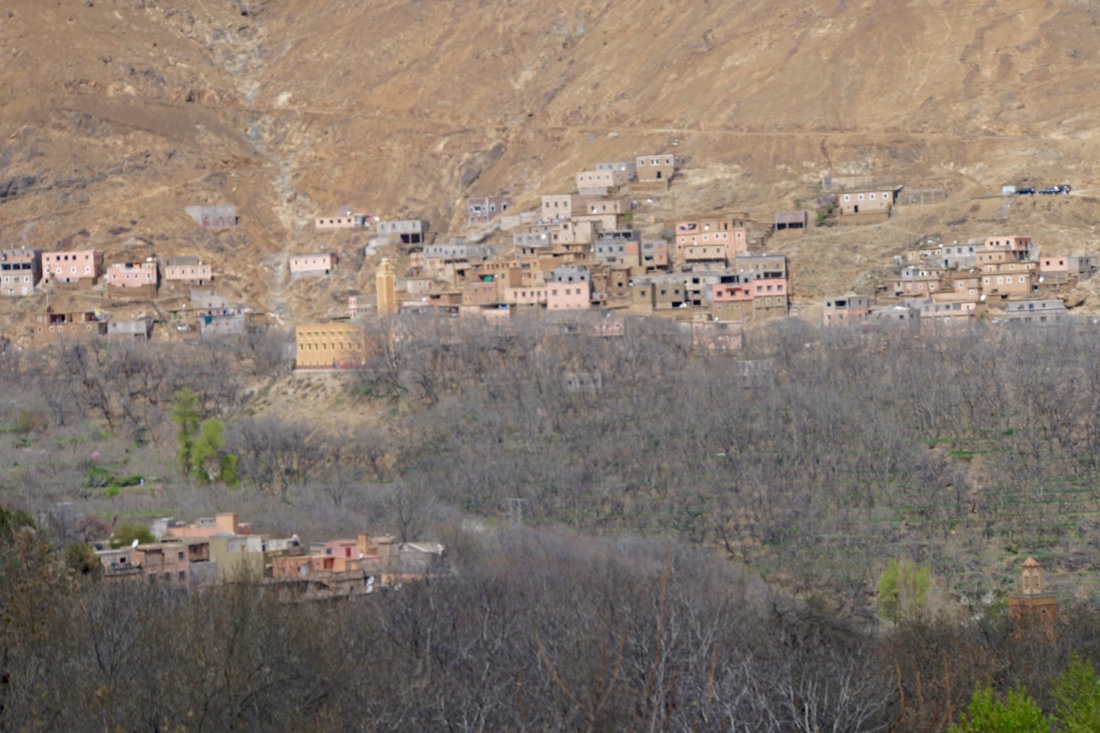 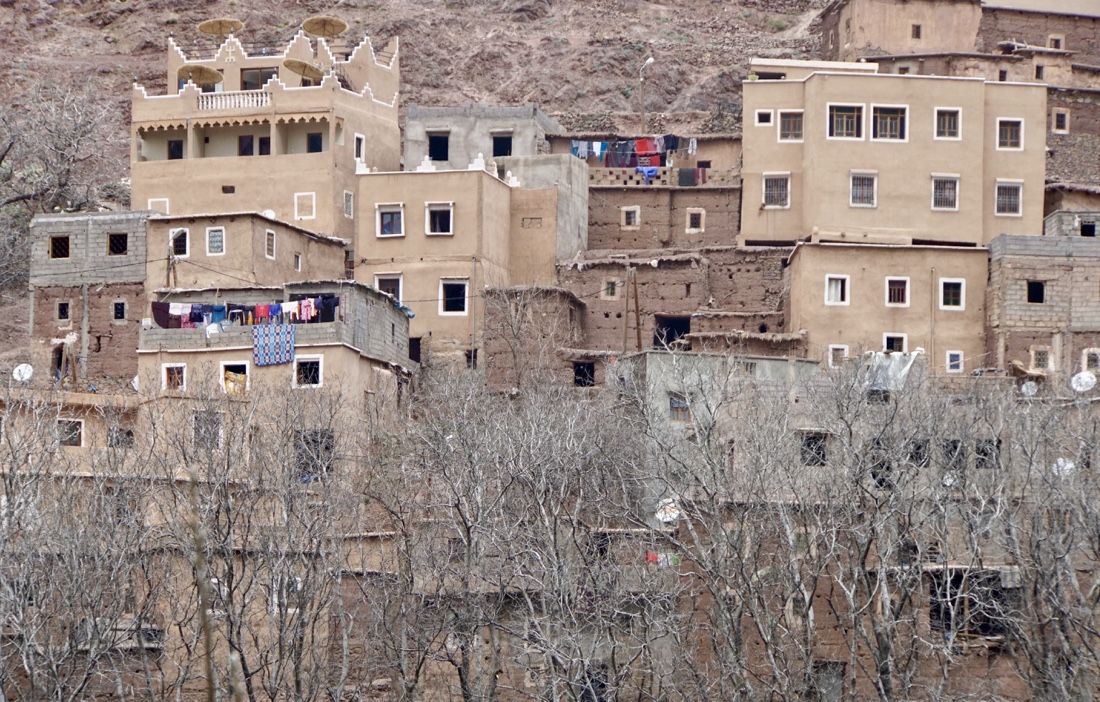 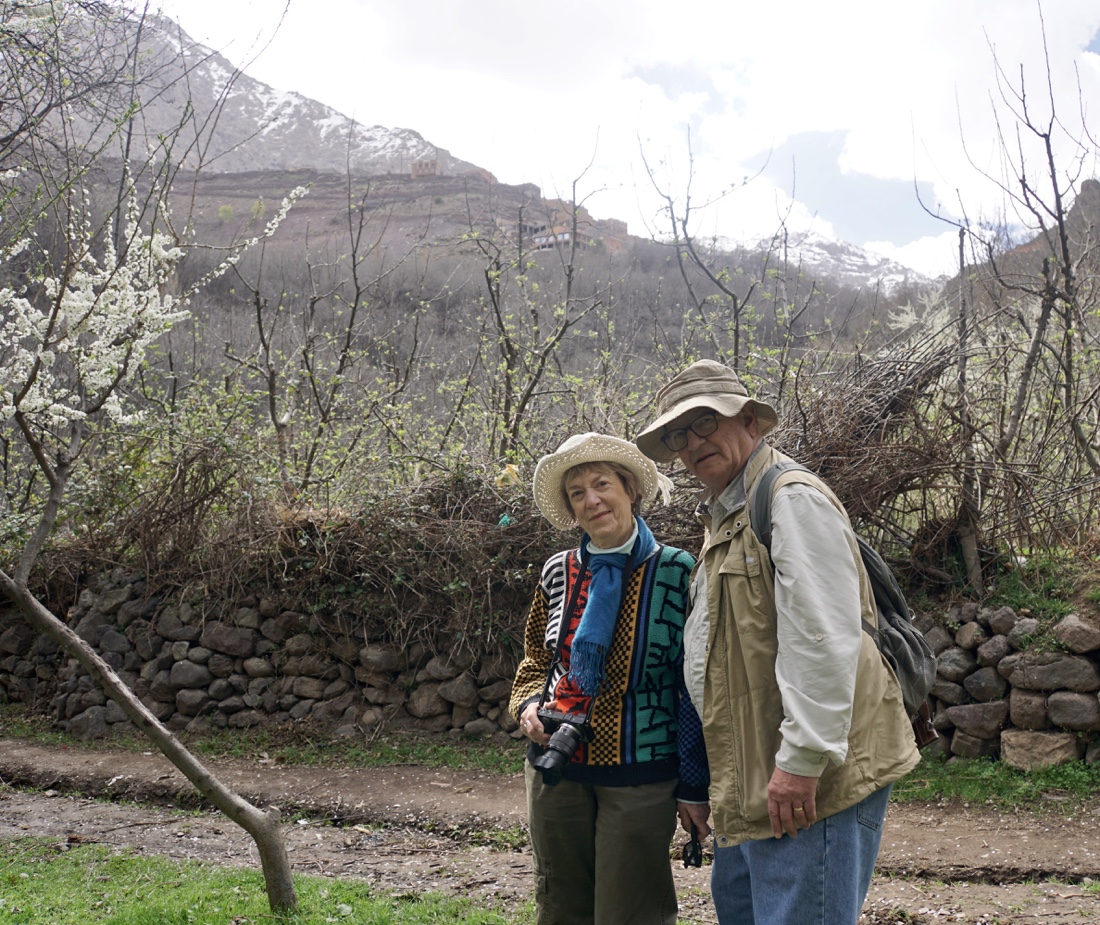
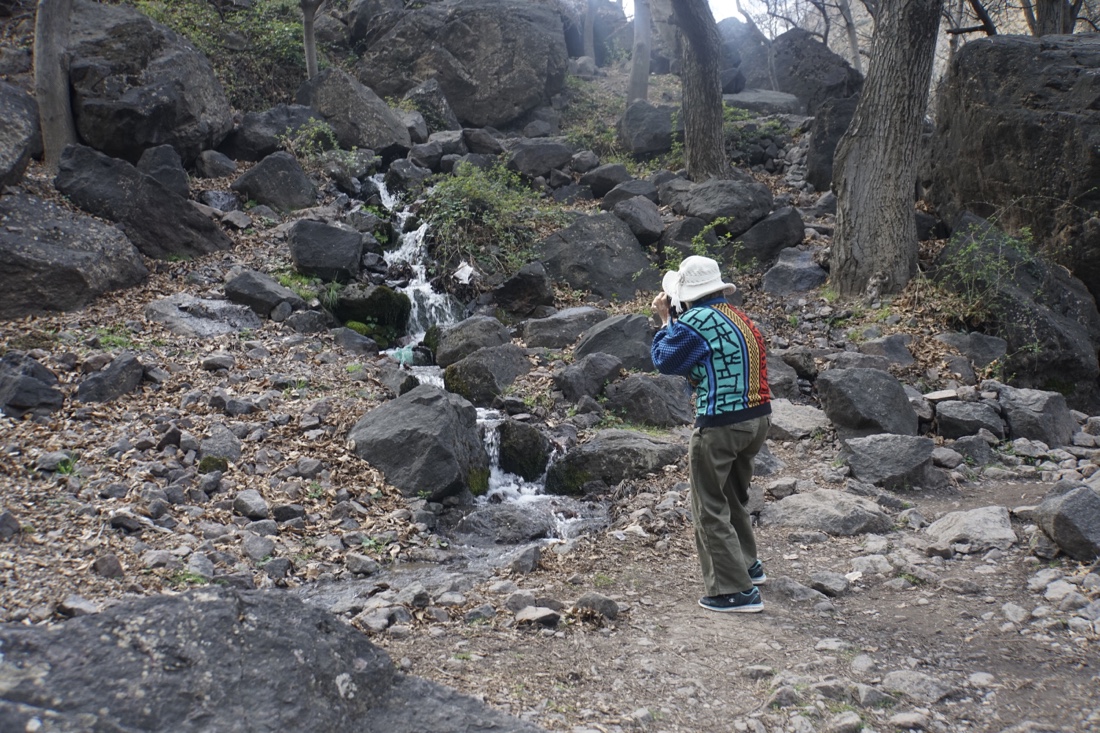 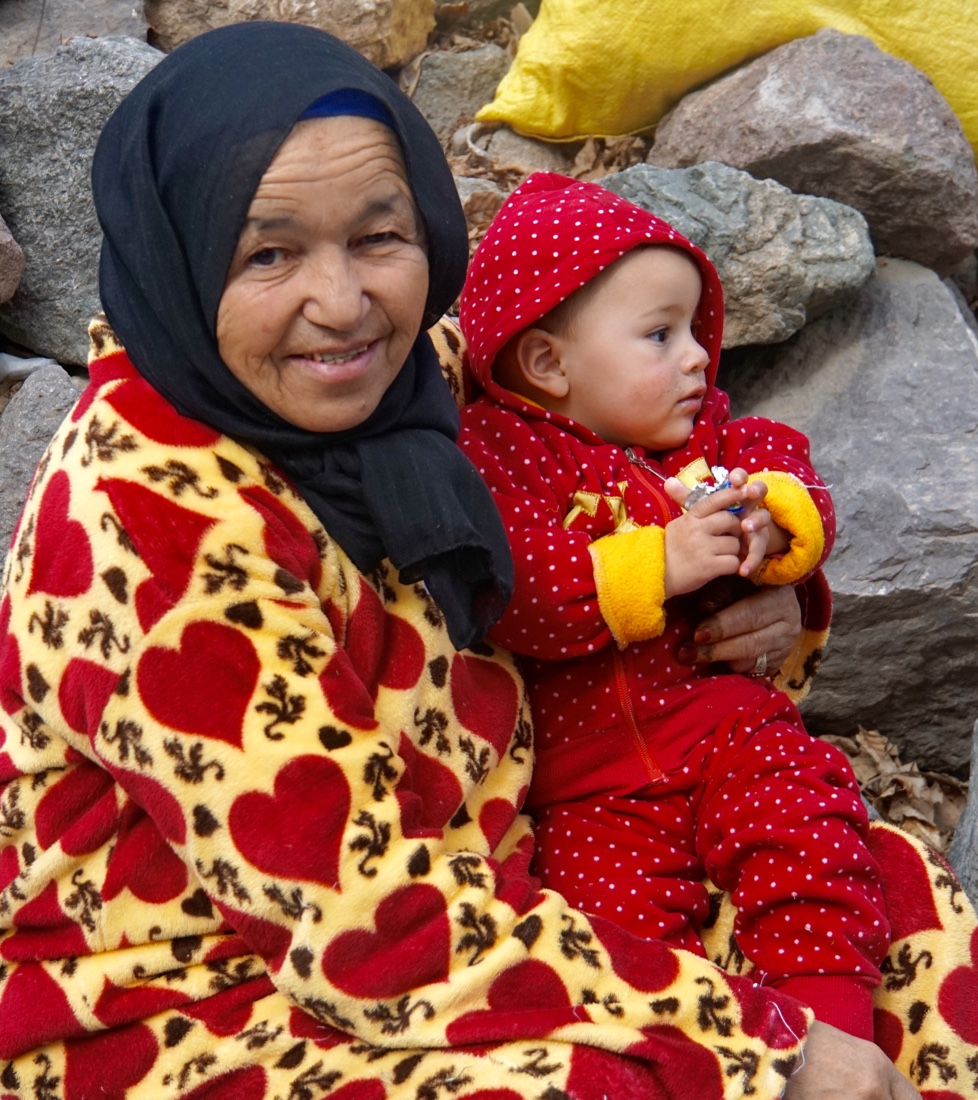 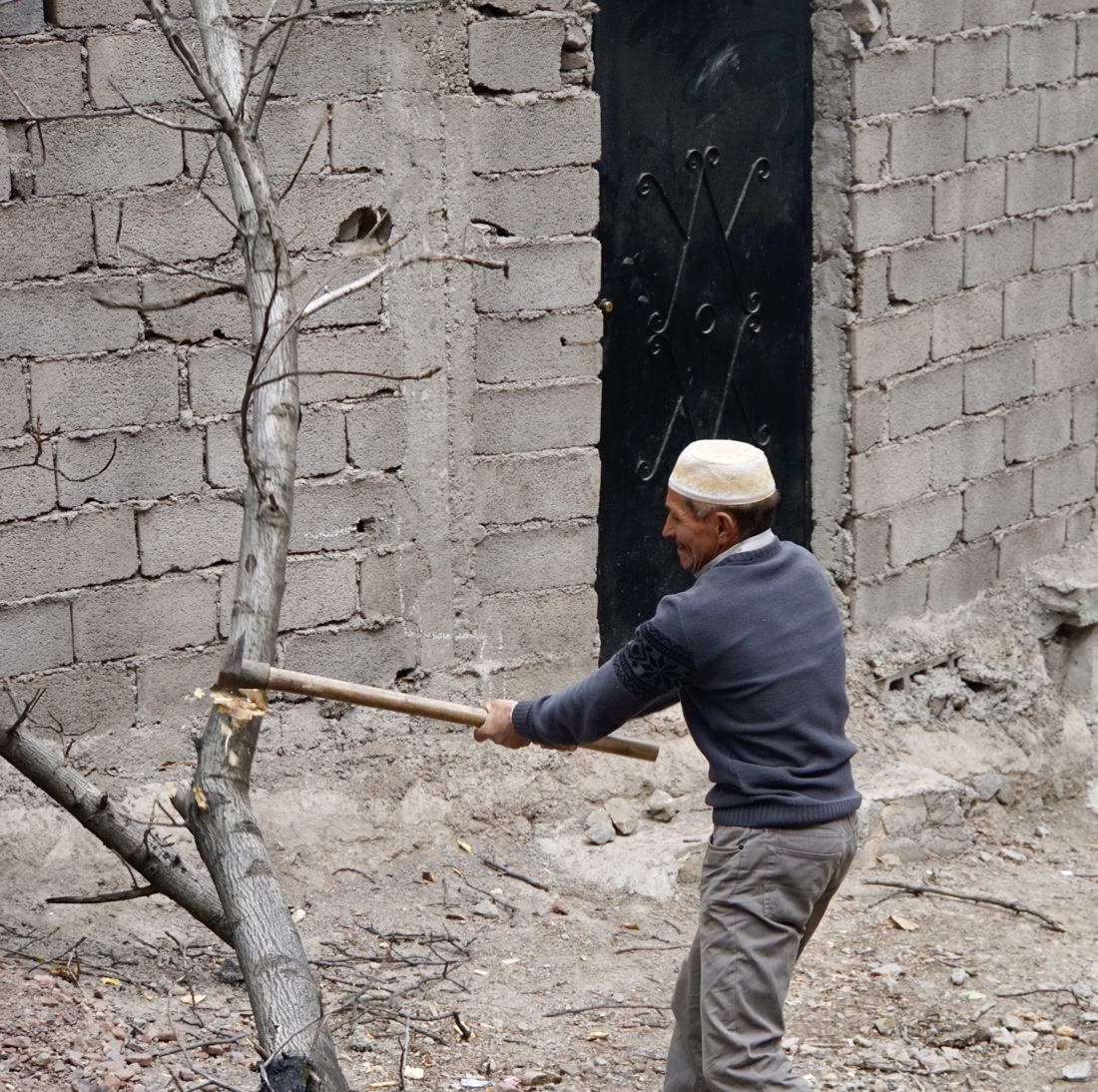 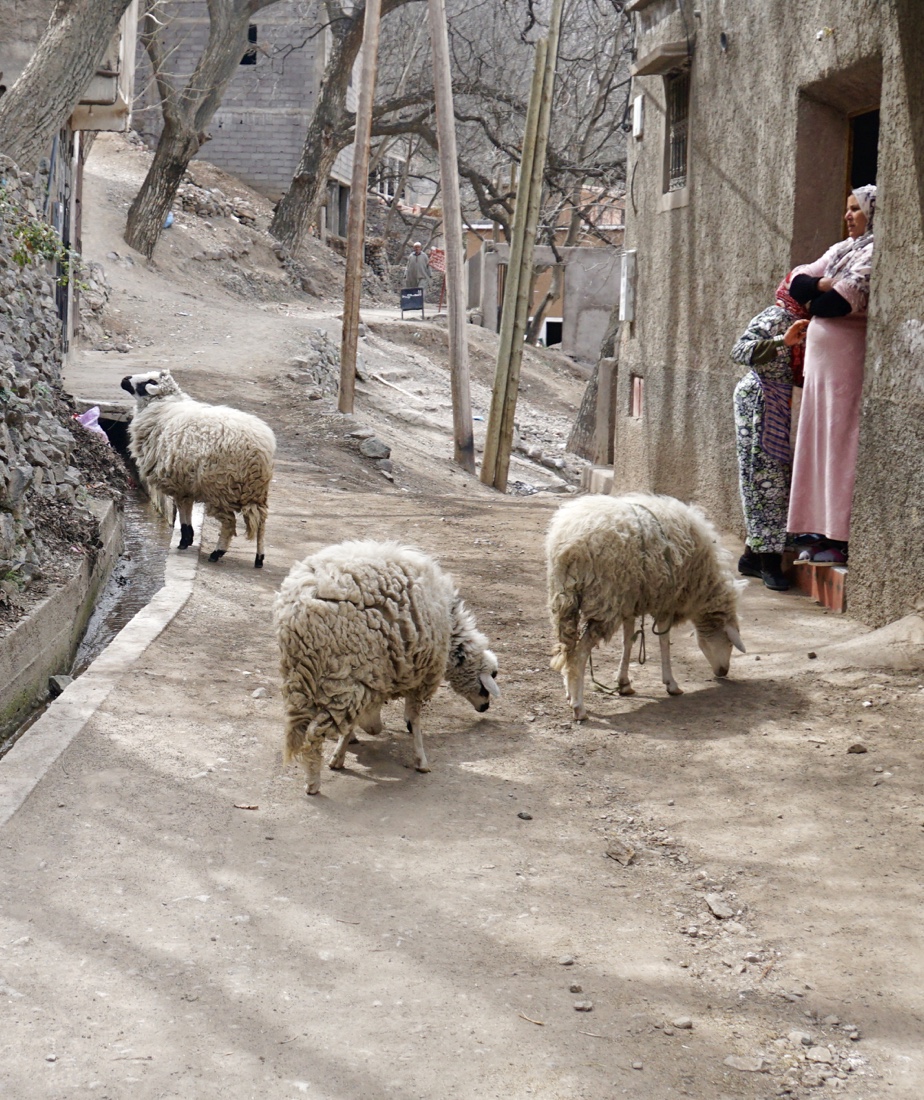 At around one we stop for lunch on the rooftop of a small hotel. When we finish, Jaouad asks whether we’d like to walk to more villages, but we demure. I offer to have Carol walk on and have our driver take me back to the hotel, but she says that she’s had enough walking. We return to the hotel, pick up a few small gifts in the lovely hotel gift shop and go up to the room, to read, blog, nap and start packing. At around one we stop for lunch on the rooftop of a small hotel. When we finish, Jaouad asks whether we’d like to walk to more villages, but we demure. I offer to have Carol walk on and have our driver take me back to the hotel, but she says that she’s had enough walking. We return to the hotel, pick up a few small gifts in the lovely hotel gift shop and go up to the room, to read, blog, nap and start packing.
We have a half bottle of white wine (free, from our minibar) on our balcony, as the sun sets. Then, we walk the fifty or so feet from our room to the restaurant, where we have a very tasty dinner.
March 16
Sadly, this is our last day at Dar Ahlam. After breakfast, we’re driven to an almond grove, where our guide, Fouad, takes us on a 45-minute walk that lasts for an hour and 45 minutes, winding through the shade of the trees and into what once was the old city, in which Berbers and Jews lived together.  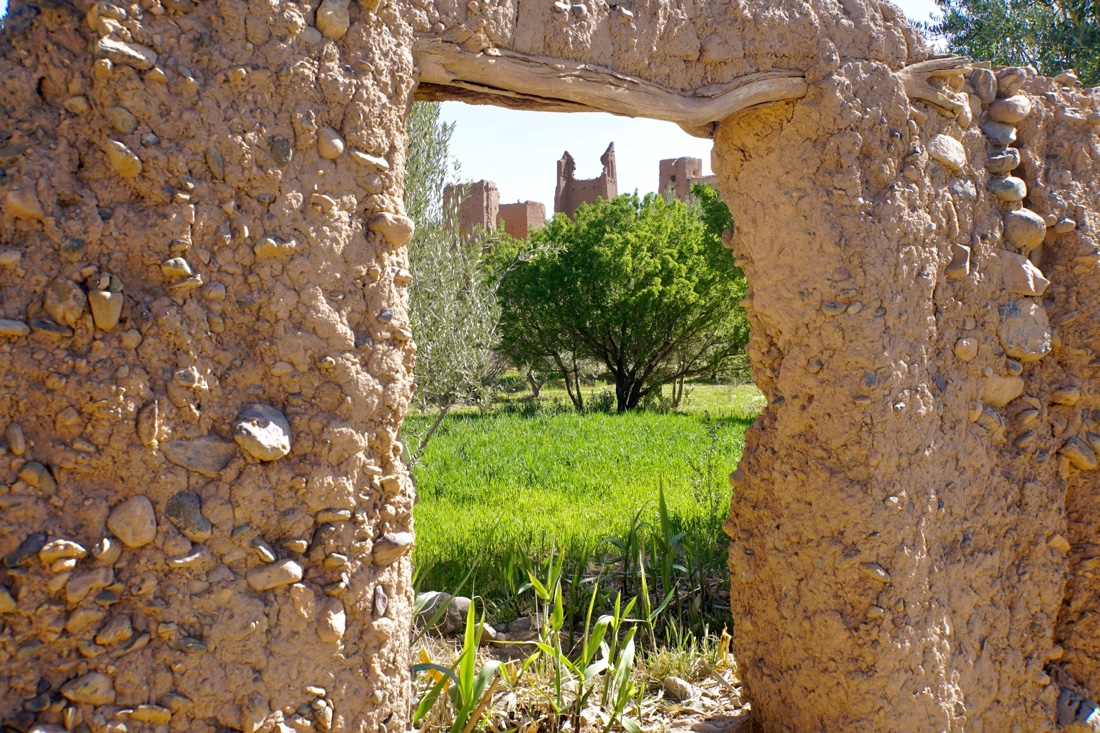 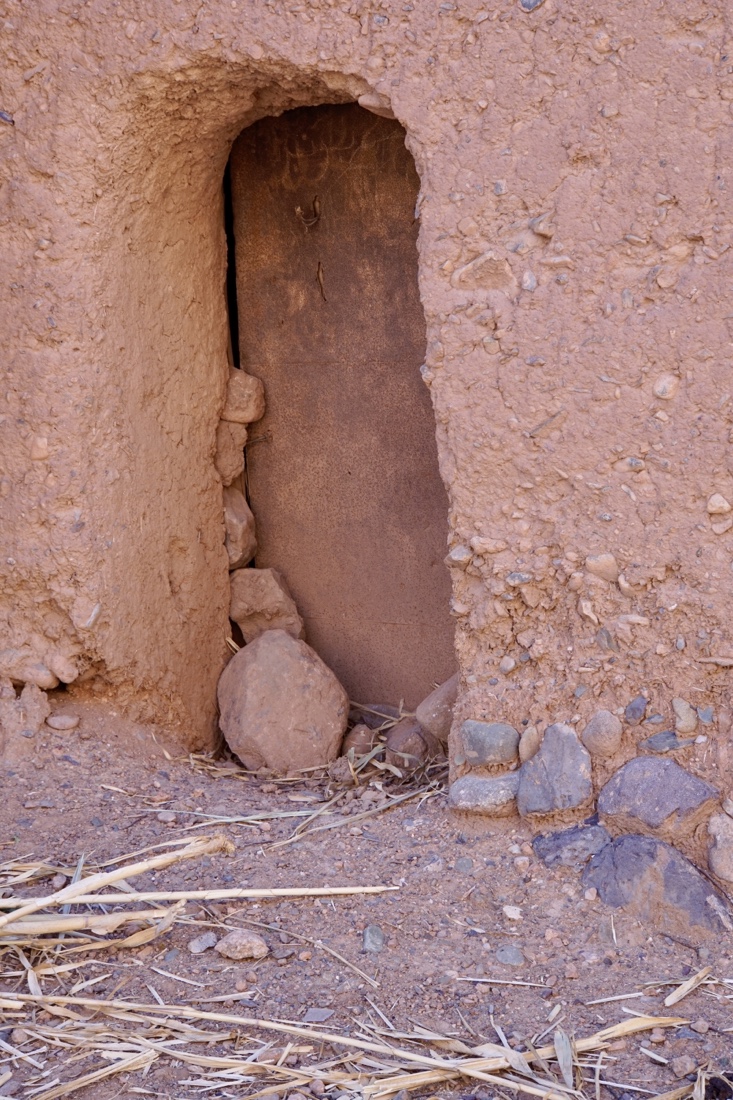
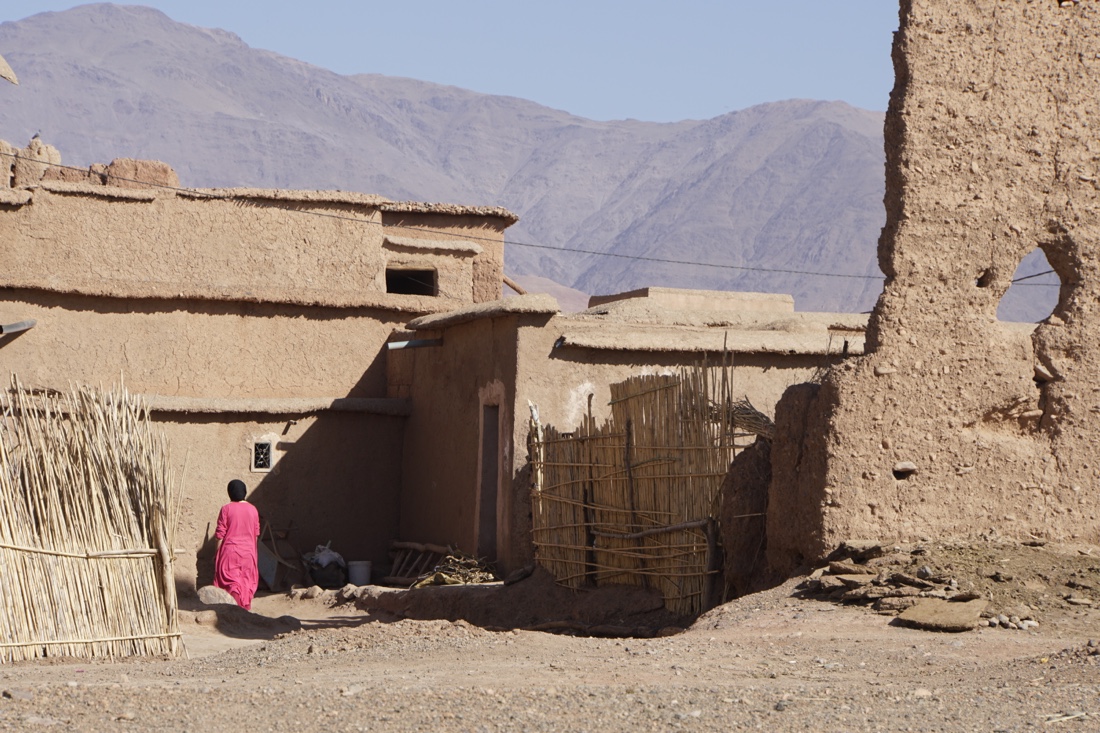 We are invited in for tea and bread made that morning by a young woman and her cute 3-year old nephew. We are invited in for tea and bread made that morning by a young woman and her cute 3-year old nephew.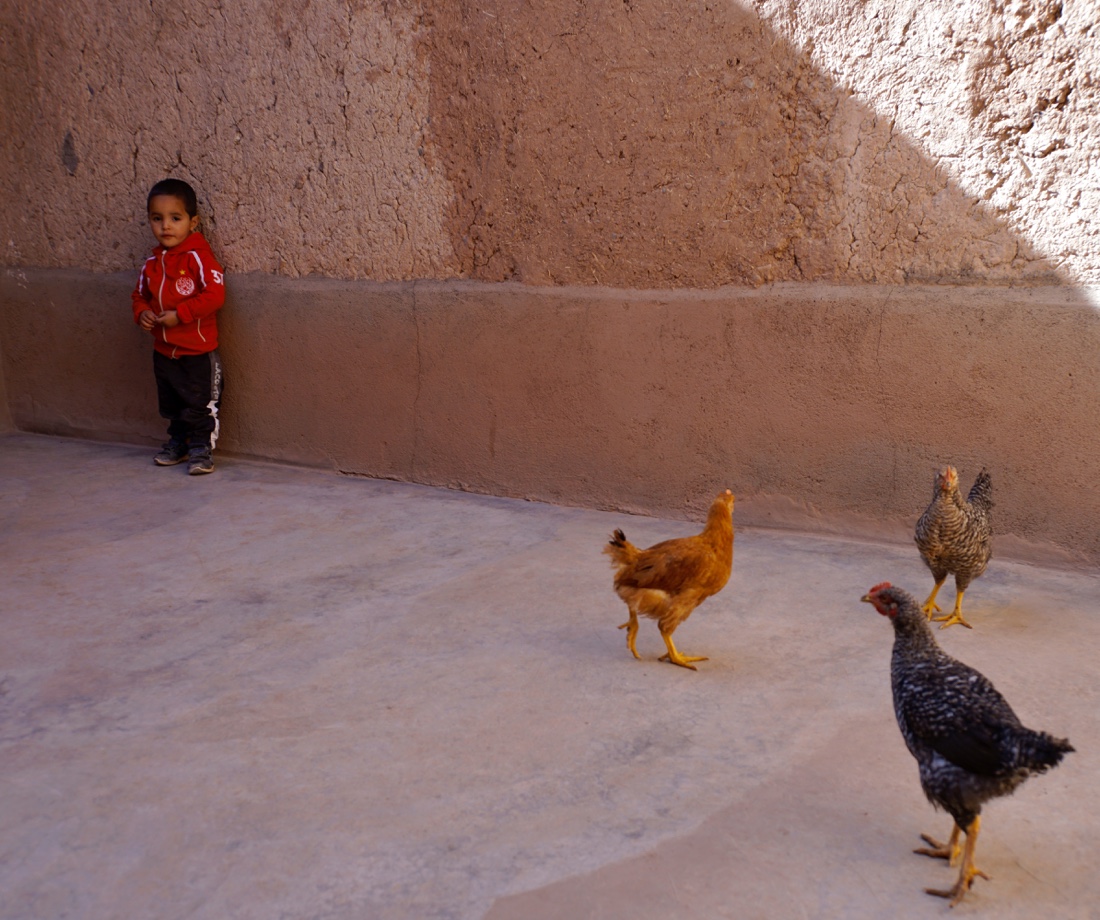
We get to see the house, including the well and the kitchen.
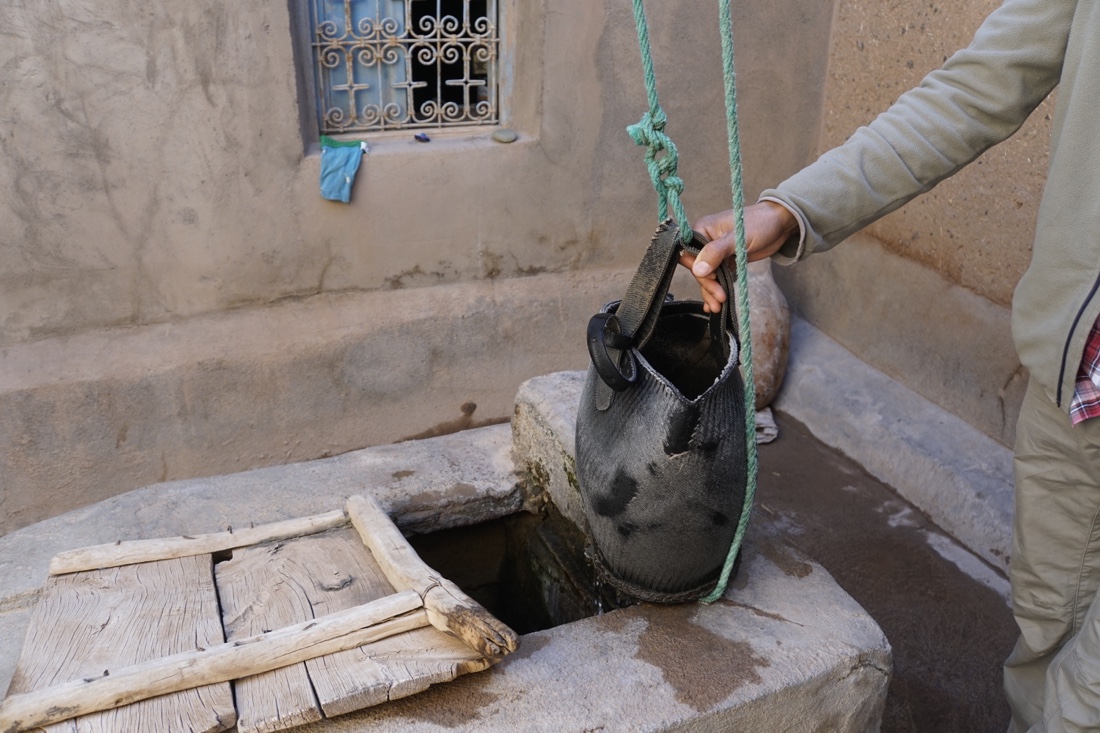 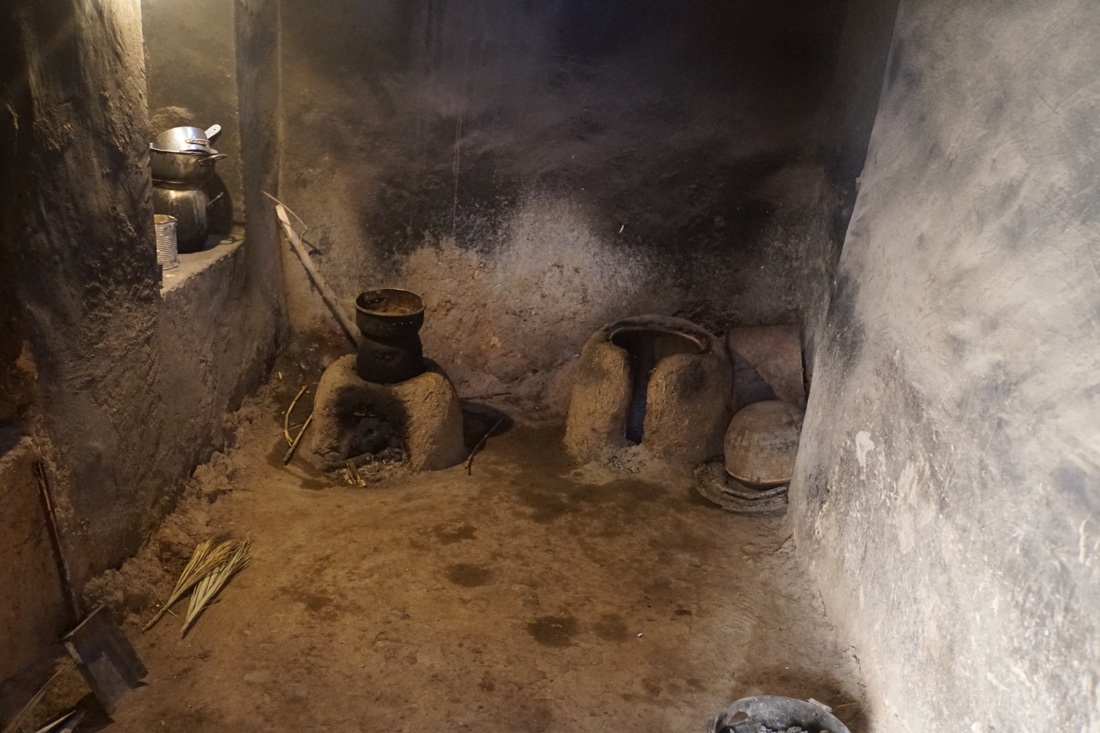 Afterwards, we run into a fellow who talks about old times in the area and tells us that Jewish people who have moved to Tel Aviv still come back to visit. Afterwards, we run into a fellow who talks about old times in the area and tells us that Jewish people who have moved to Tel Aviv still come back to visit. 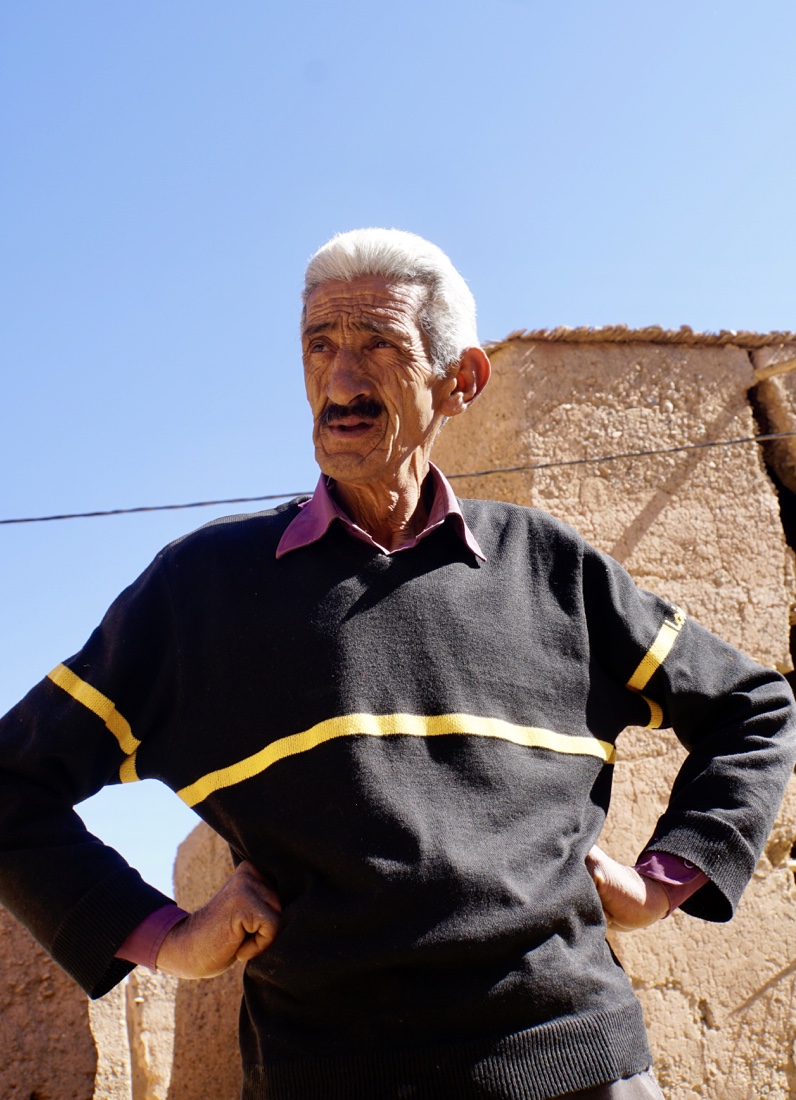 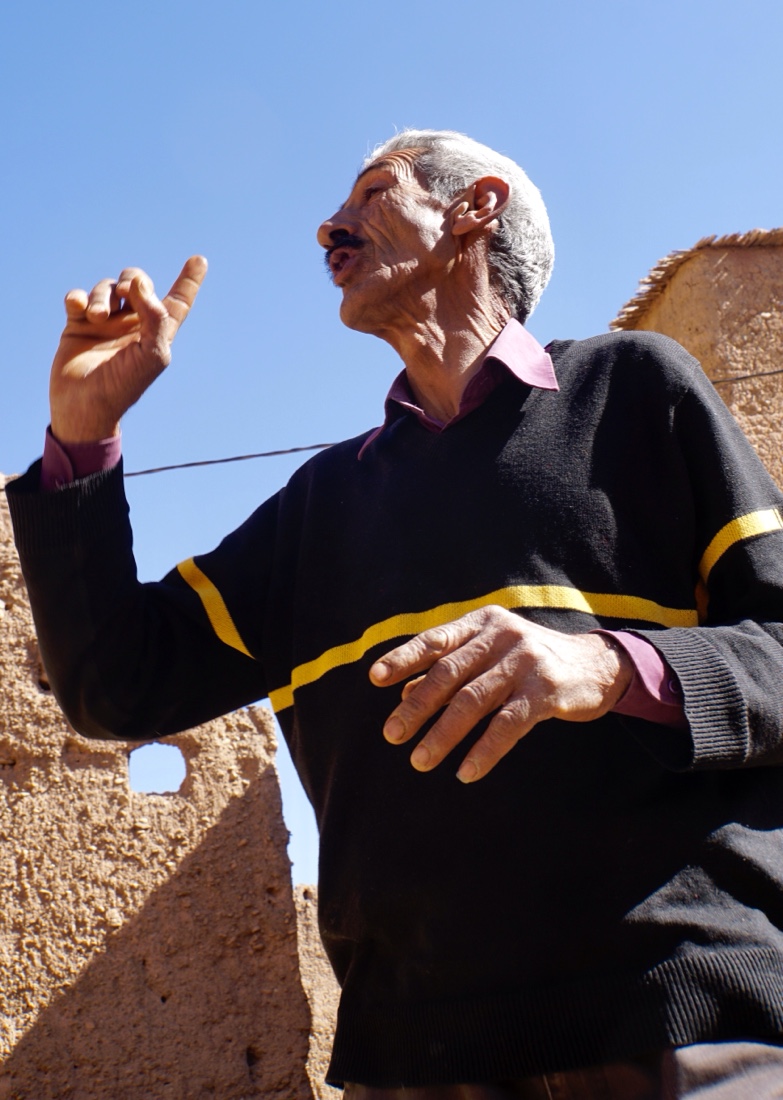
The walk was lovely until near the end, when I hit a slight slope of mud and fell. Greater injury to my pride than myself, though I’m definitely going to need to launder my clothes before wearing them again. Fouad gets handsful of water from a stream to help wash me off.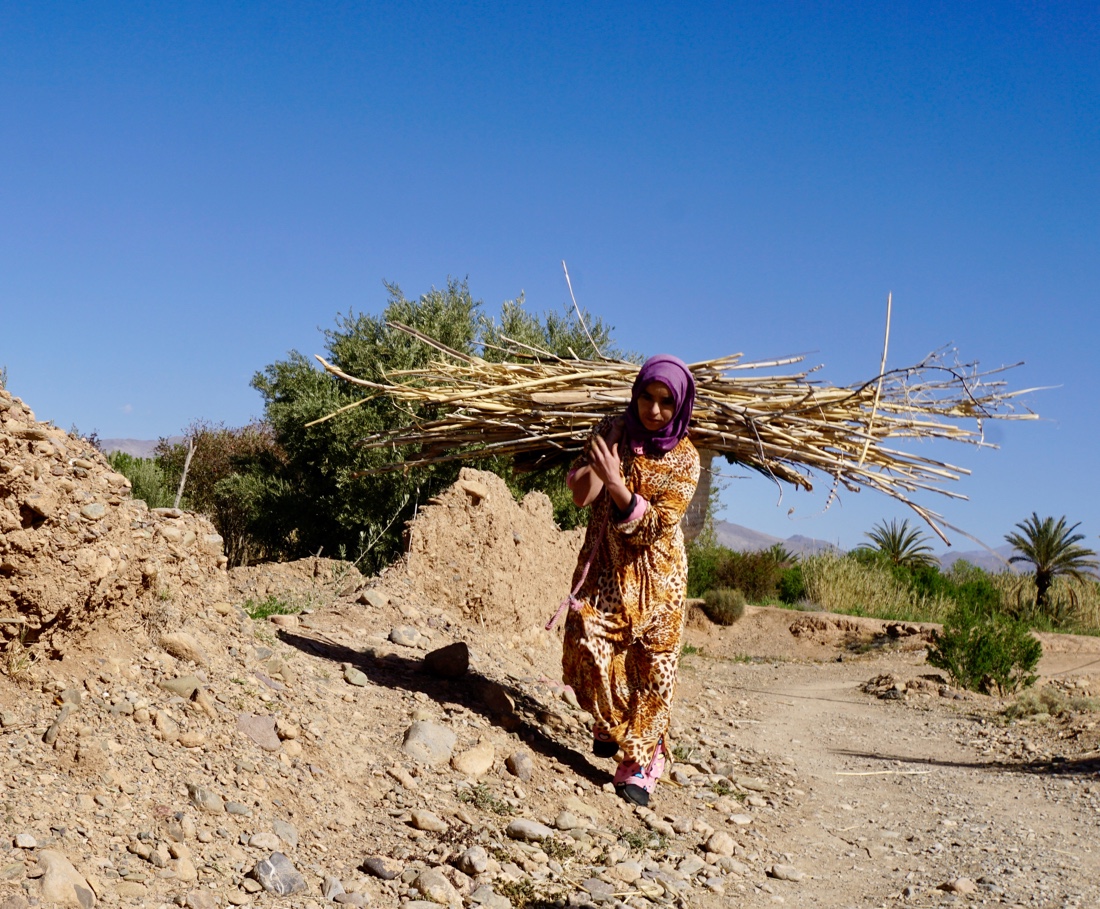 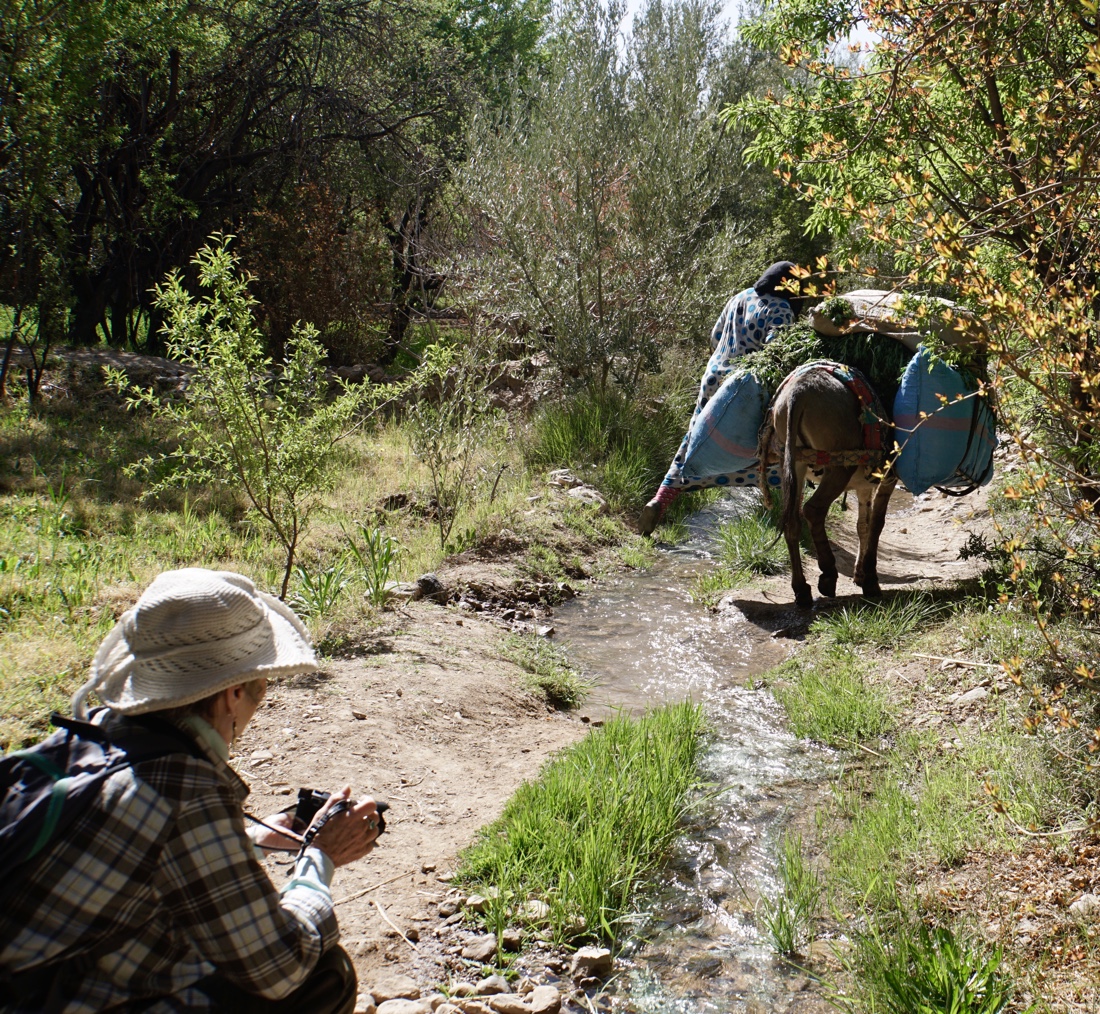
Our travel agent, Ahdina Zunkel, raved about a shopping experience she’d had with a husband and wife team, so we get our driver to stop in Skoura and we visit Aziz and Manar, located in the Ait Moro Hand Association shop. Turns out that Manar was not his wife, but somebody working in the shop the day Ahdina visited, who was not around today. Oh, well, win some, lose some. Aziz shows us some carpets and other artifacts, but we escape unscathed.
We return to Dar Ahlam, where Mungo and Romily, hearing of my fall, offer to have my shoes cleaned and to provide ointment for my scraped knee. We’re ushered out to a luncheon table set for us in Olive Tree Alley.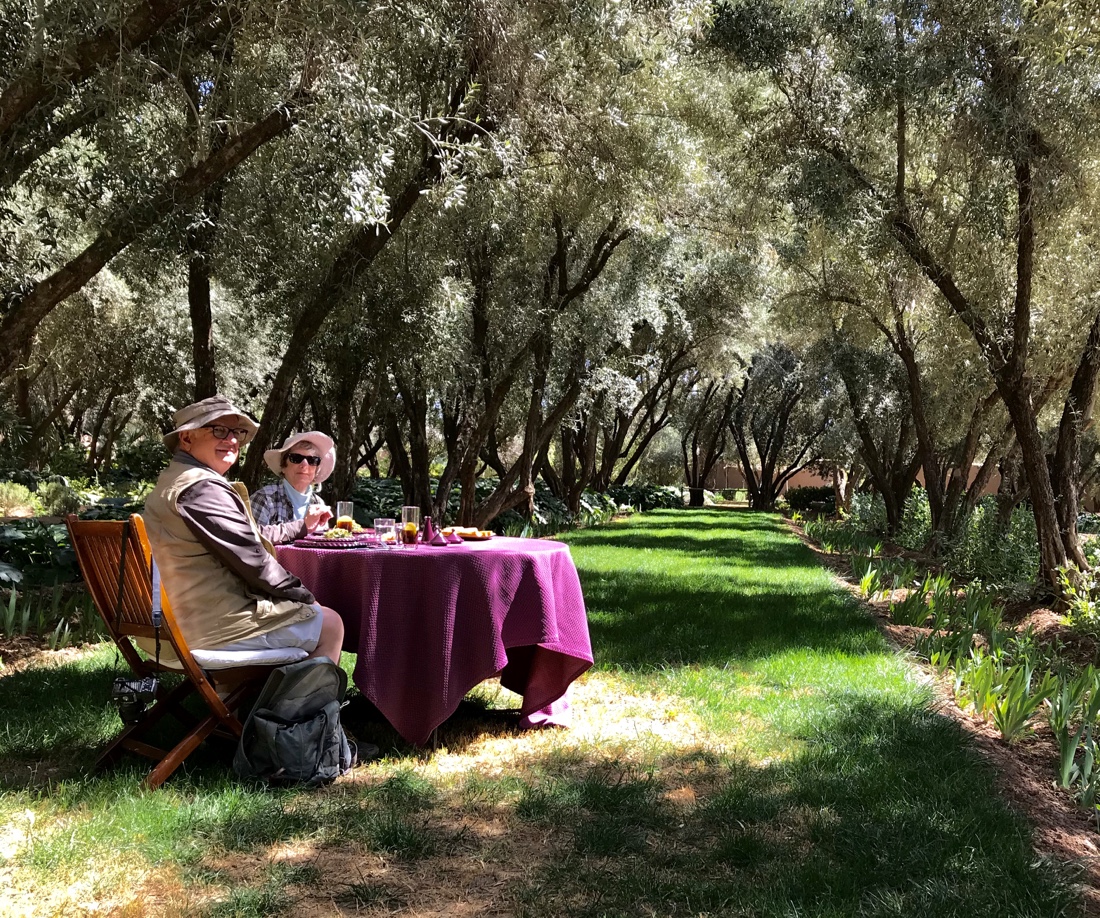
This place has it all over, say, Days Inn. I know that the description must sound obnoxiously pampered. What can I say? It is. The entire place has an unstudied elegance, service is fabulous and the grounds are lovely.
We’re allowed to keep our room until 5PM, at which time we’re driven to the airport by Abdul for our 40-minute flight from Ouarzazate to Marrakech in the early evening. We are met at the Marrakech airport and driven 1 hour 20 minutes to the High Atlas Mountains by our driver, Moustaffa.
We arrive late at Kasbah Tamadot in the most indulgent and private of spaces, Sir Richard Branson’s retreat, with its spectacular backdrop of snow-lined peaks.
Kasbah Tamadot was the former home of Luciano Tempo, the renowned antiques dealer and interior designer. Luciano filled Kasbah Tamadot with a huge range of items – tables, sculptors and ornaments collected from India, Indonesia and North Africa. When Sir Richard Branson bought Kasbah Tamadot in 1998, he also inherited Luciano’s 1000 square meter warehouse, filled with pieces of Luciano’s collection that have been used to furnish the Kasbah today.
We checked in and went up for soup (Carol) and dessert (moi) in the restaurant. Both our room and the place look fabulous, but we’ll be able to judge better in the light, tomorrow. I wouldn’t base my entire assessment on this, but the fact that the contents of the minibar are complimentary is not a bad proxy.
March 14- 15
To continue where I left off, after lunch yesterday, Carol opted to go on a walk, and I decided just to enjoy this lovely place, relax and blog, inside and out. Passed on the thought of swimming as a bit too energetic.
Went upstairs to the room for a welcome shower and rest. The stairs up to the room provide sufficient exercise for my taste. After drinks in the Grand Salon, we’re shown into another small candle-lit room, where we are served dinner.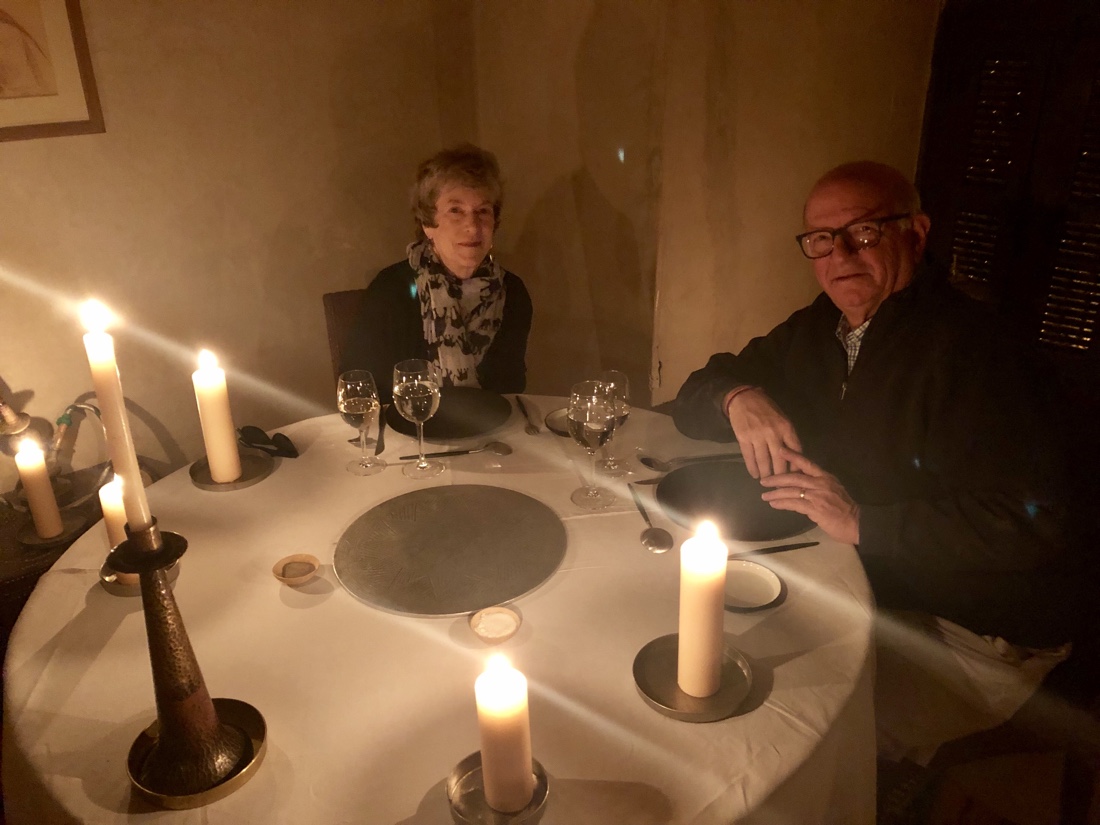
This morning, we’re down for breakfast, which we’ve chosen to have indoors to avoid the morning chill. We have a range of activities to choose from and opt to take a walk by 9th and 17th century Kasbahs. Our guide, Abdul (nice the way our travel agent has paired drive/guide names, first two Younes and now two Abduls) gives us some good information on the differences between 9th and 17th century Kasbahs, and on the roles of Kasbahs. To be perfectly honest, though, and to mark myself as a true Philistine, I don’t much give a damn about whether I’m looking at a 9th or a 17th century Kasbah. I’m far more interested in his description of how these were part of the caravan trade, salt from Morocco for gold from Timbuktu, and how these “guest houses” enhanced trade by providing traders with up to three nights free accommodation. Anyway, here’s the 9th and 17th.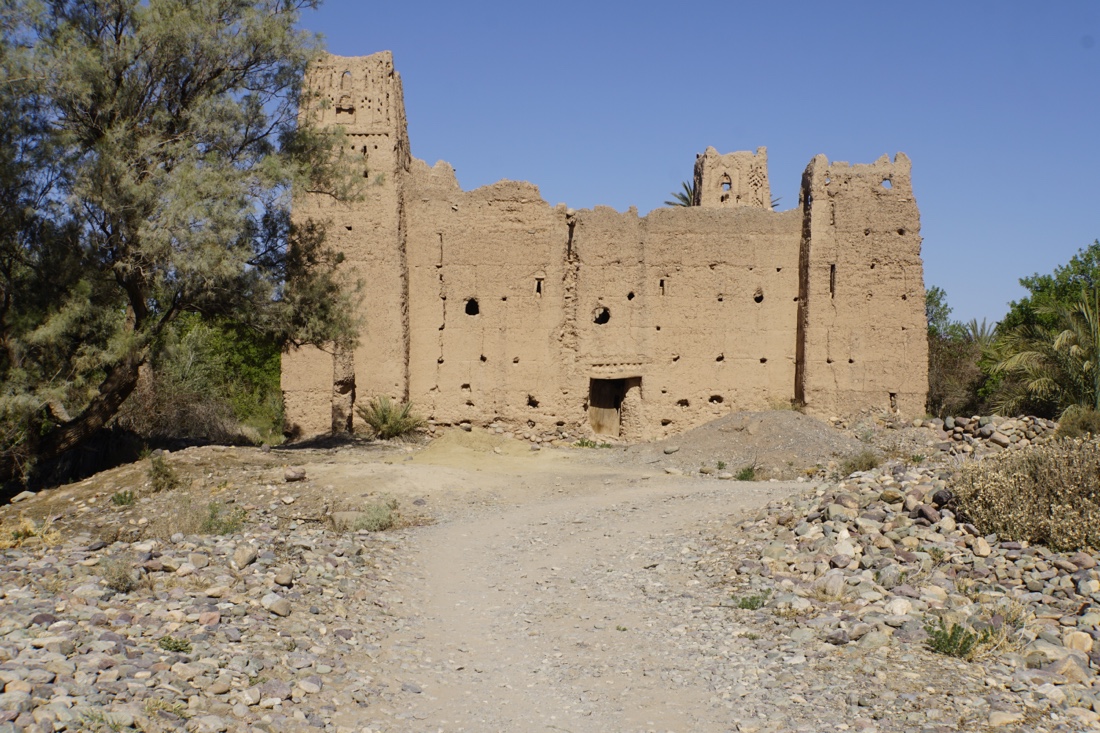 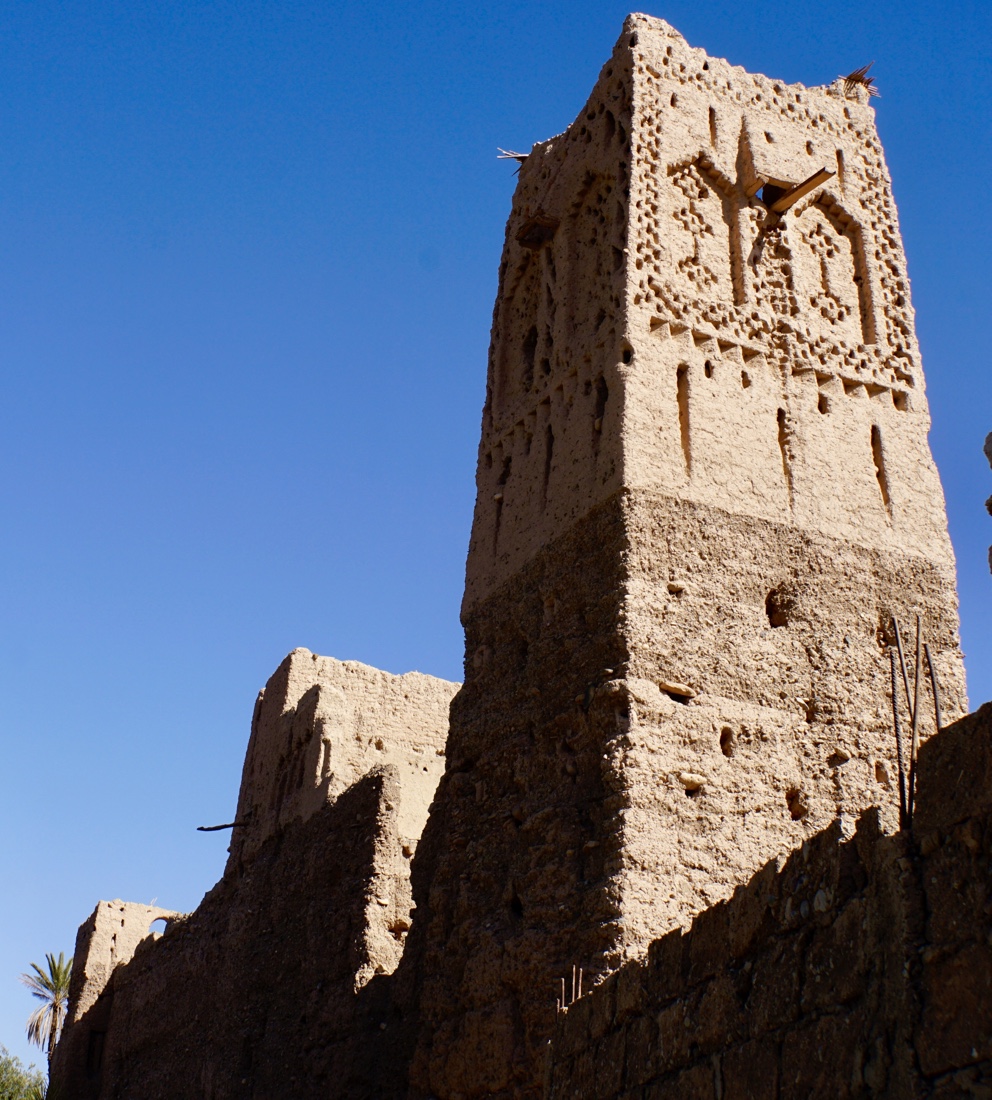
We walk along a stream fed by underground water and Abdul tells us about the system that allows land owners temporarily to divert 3-24 hours of water, depending on their land size for irrigation purposes. Asked how this is monitored, Abdul says, simply, “its the system”, everyone understands and abides by it because they are looking out for the whole community. He talks about how people need to adjust cultures when they move into the city and a philosophical discussion ensues about not disturbing “people’s bubbles,” marriage and the changes being wrought by modernity. All of this is far more interesting than the difference between Kasbahs from different centuries.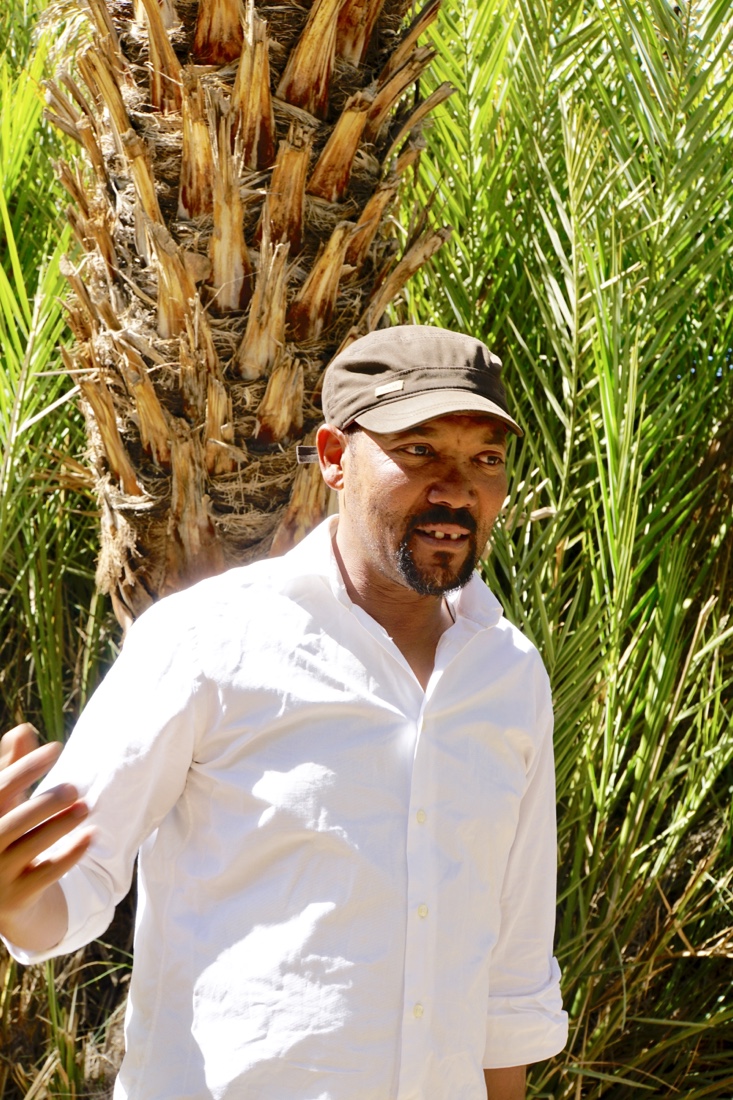
We stop for lunch at a completely isolated spot on a small lake. Nobody else around, except that our hotel has set up a lunch tent, a toilet tent and provided three people to cook and serve us lunch.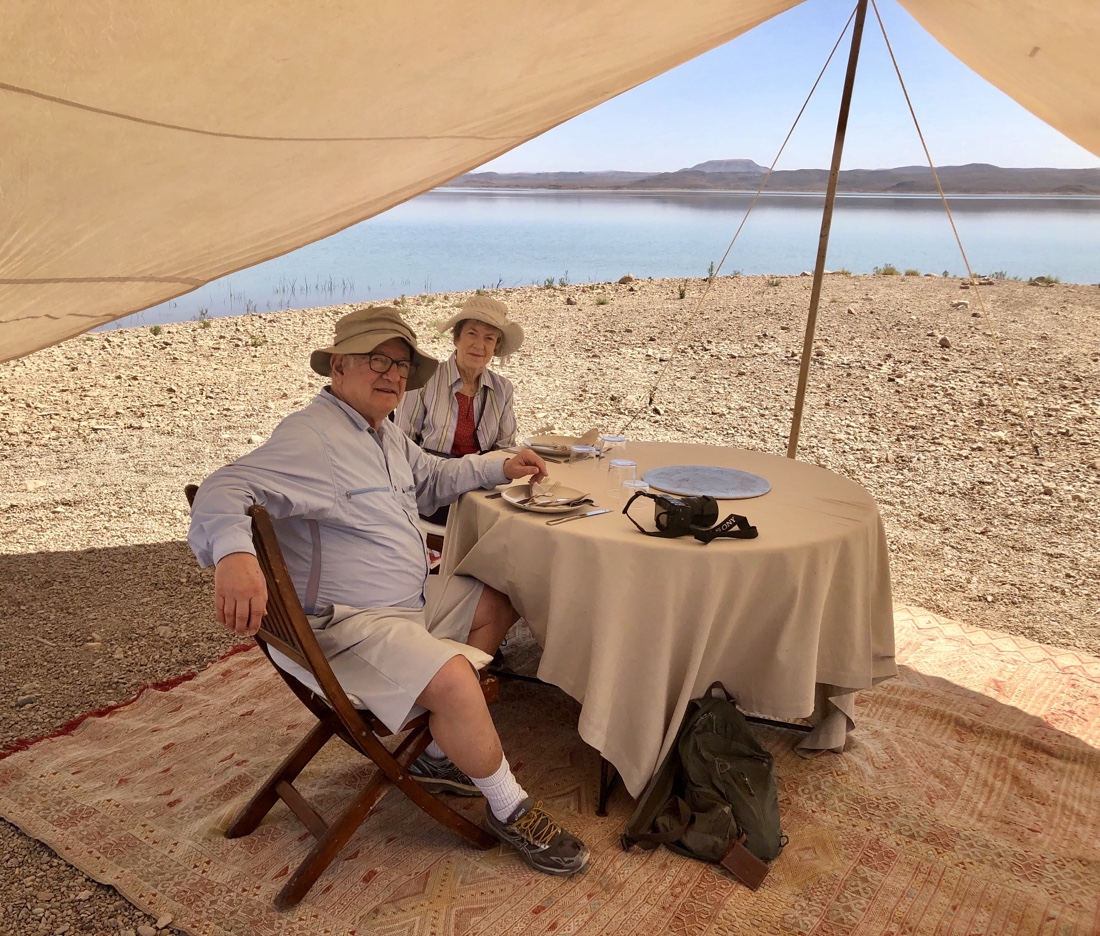 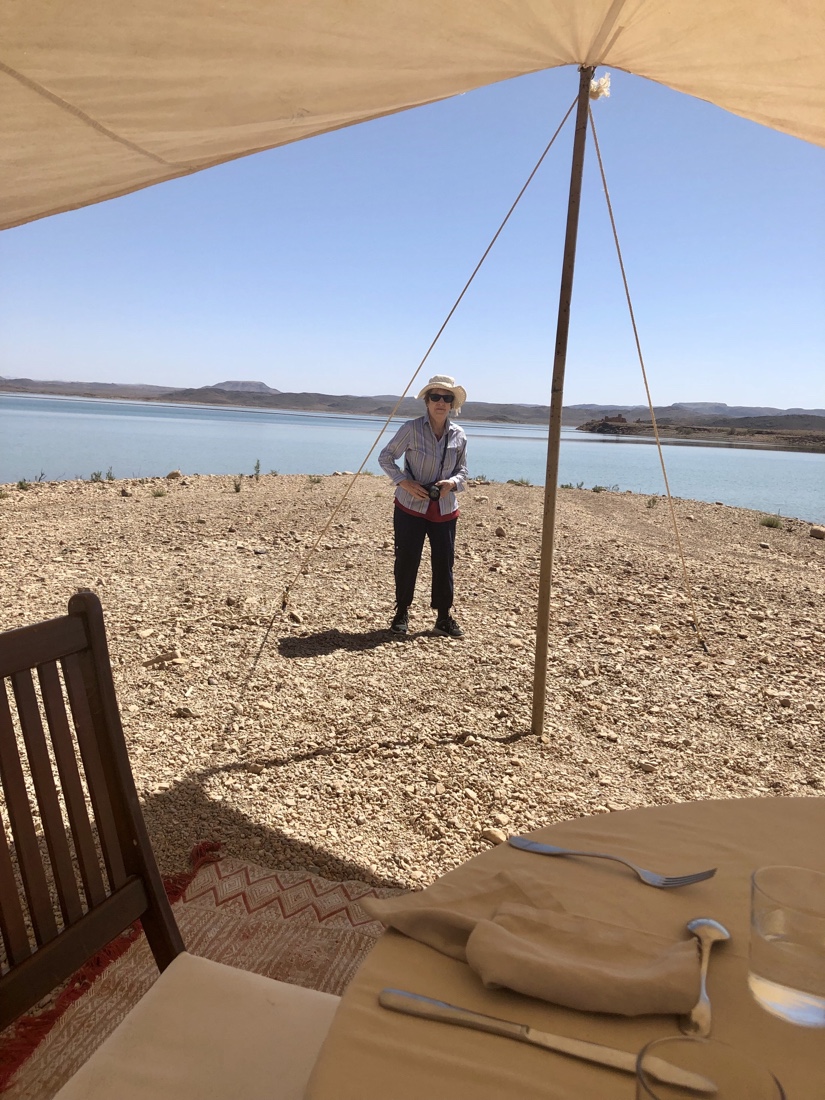 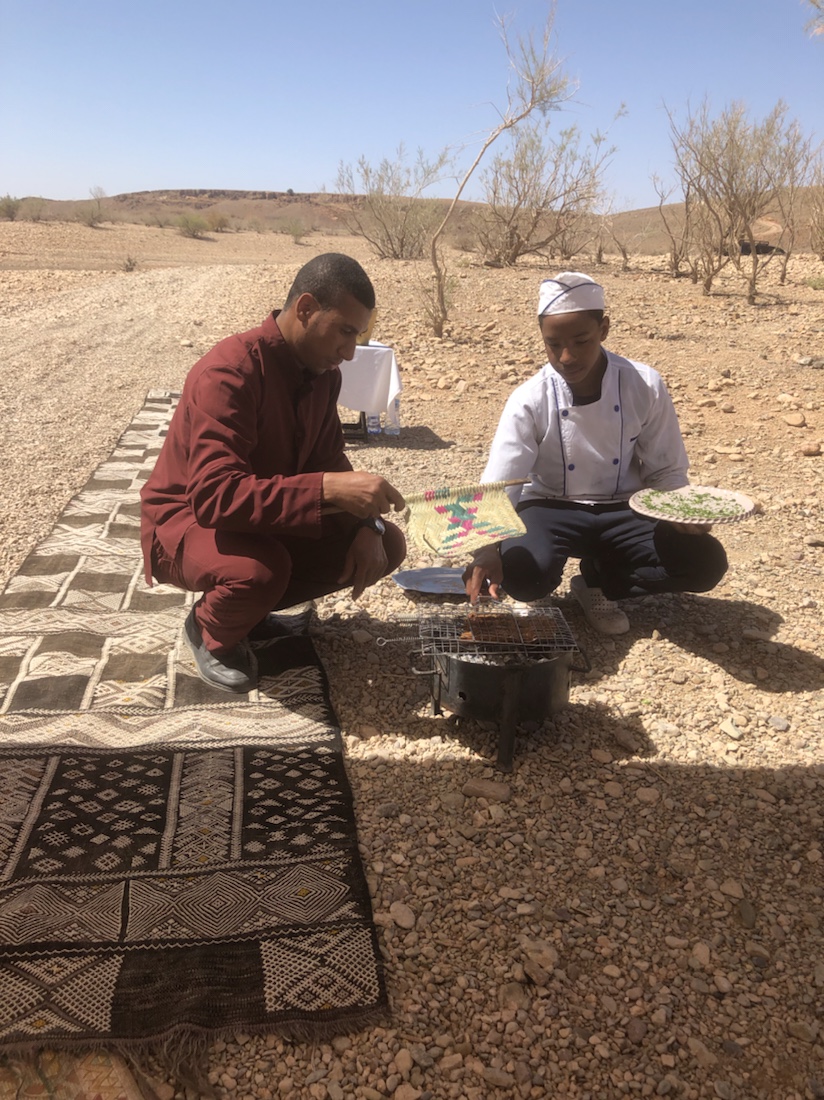
After lunch, we’re invaded by a large herd of goats, with goatherd.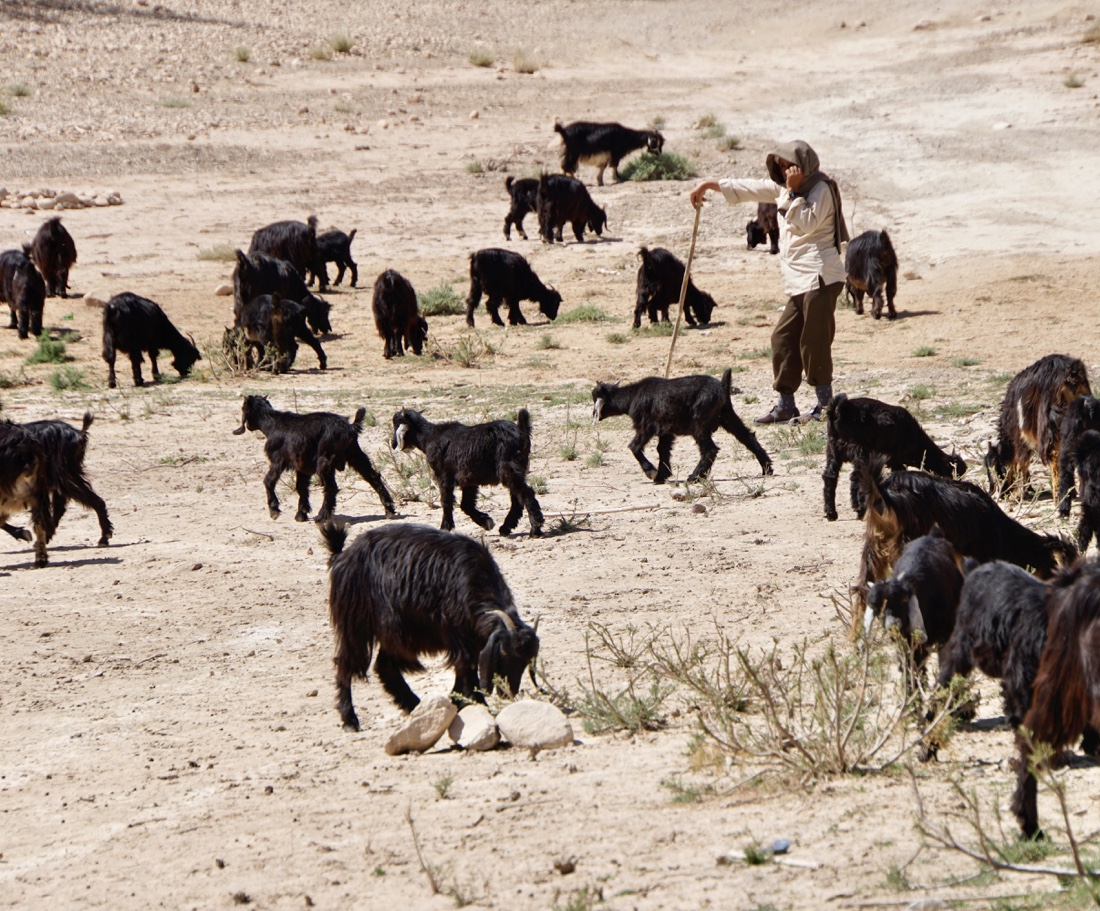
Along the way today, we see a few interesting people and a large solar tower.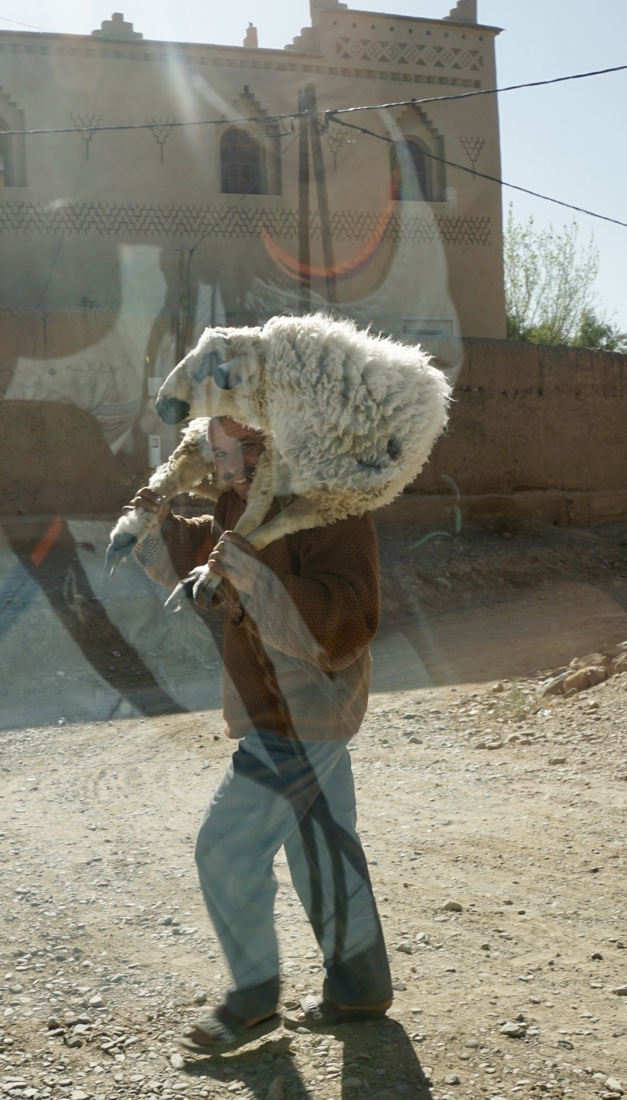 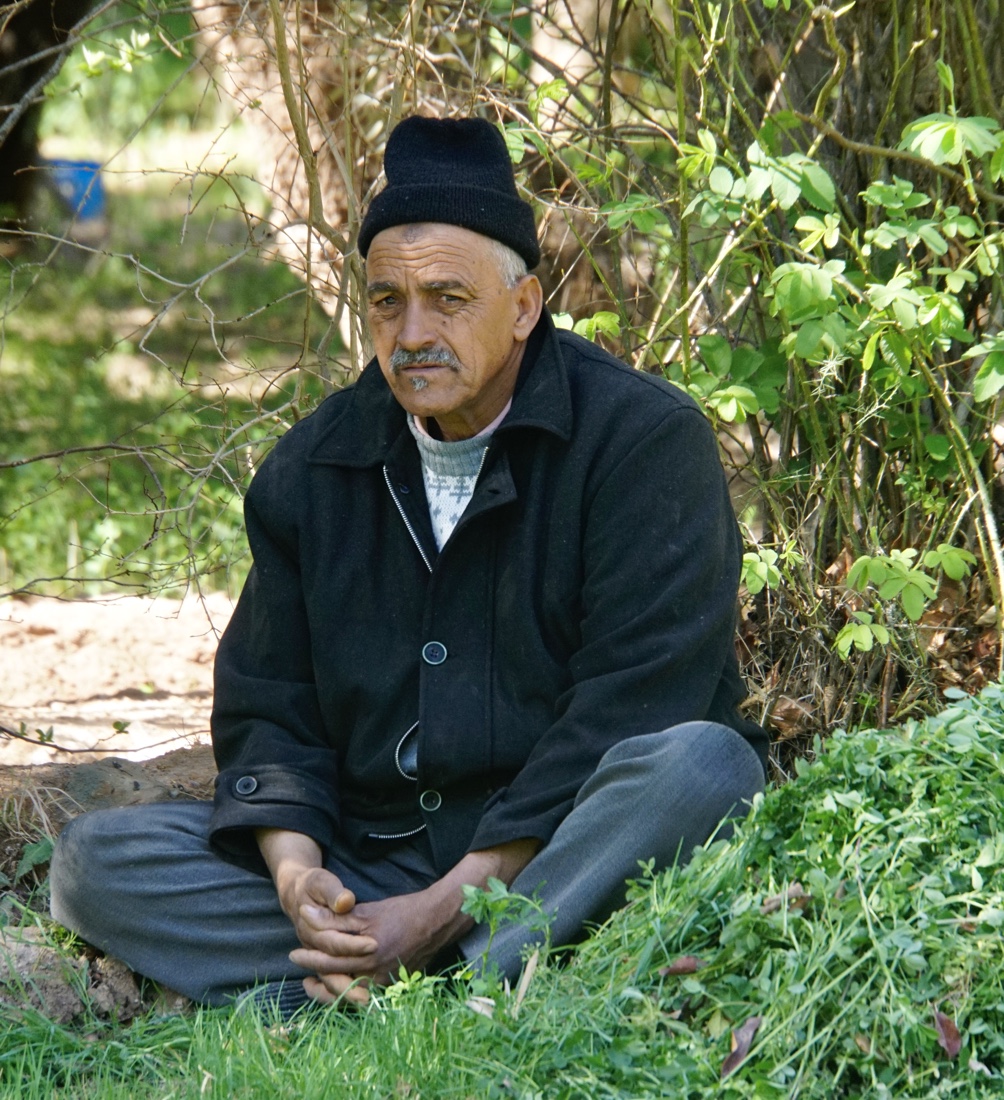 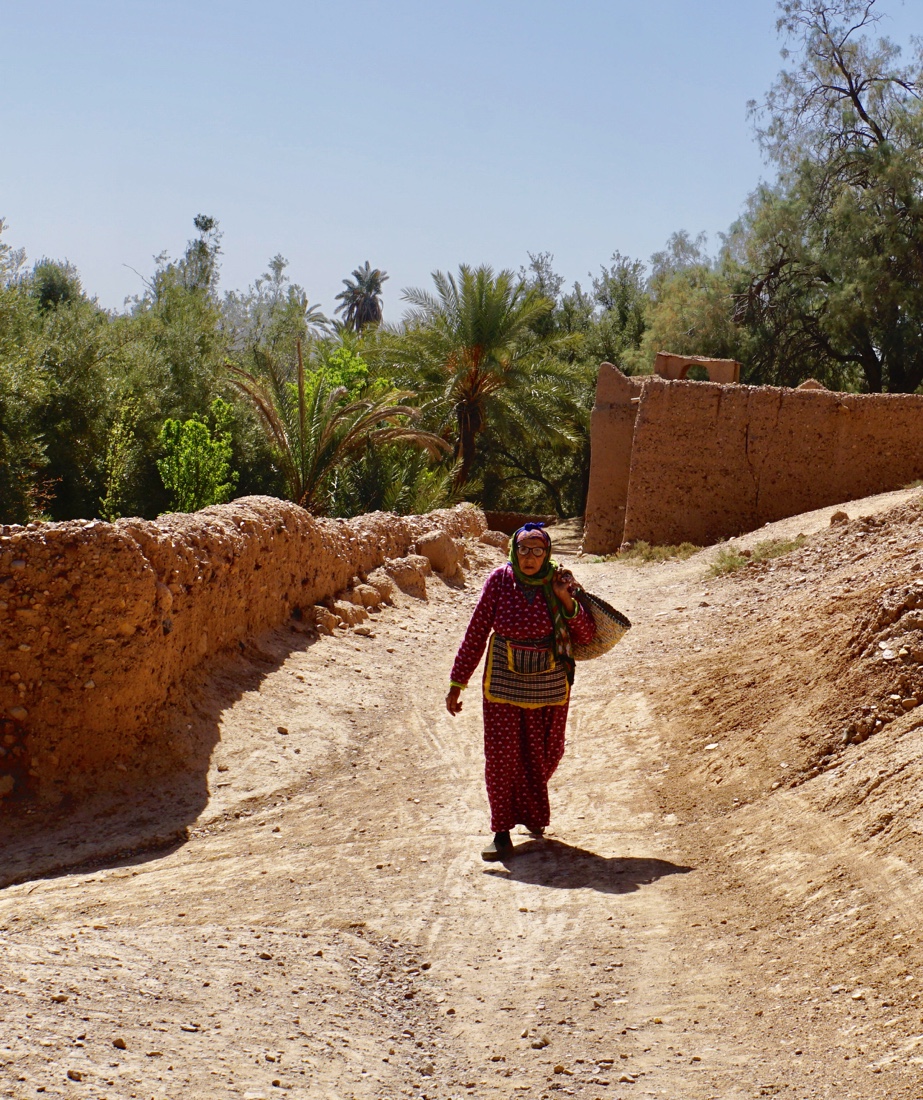 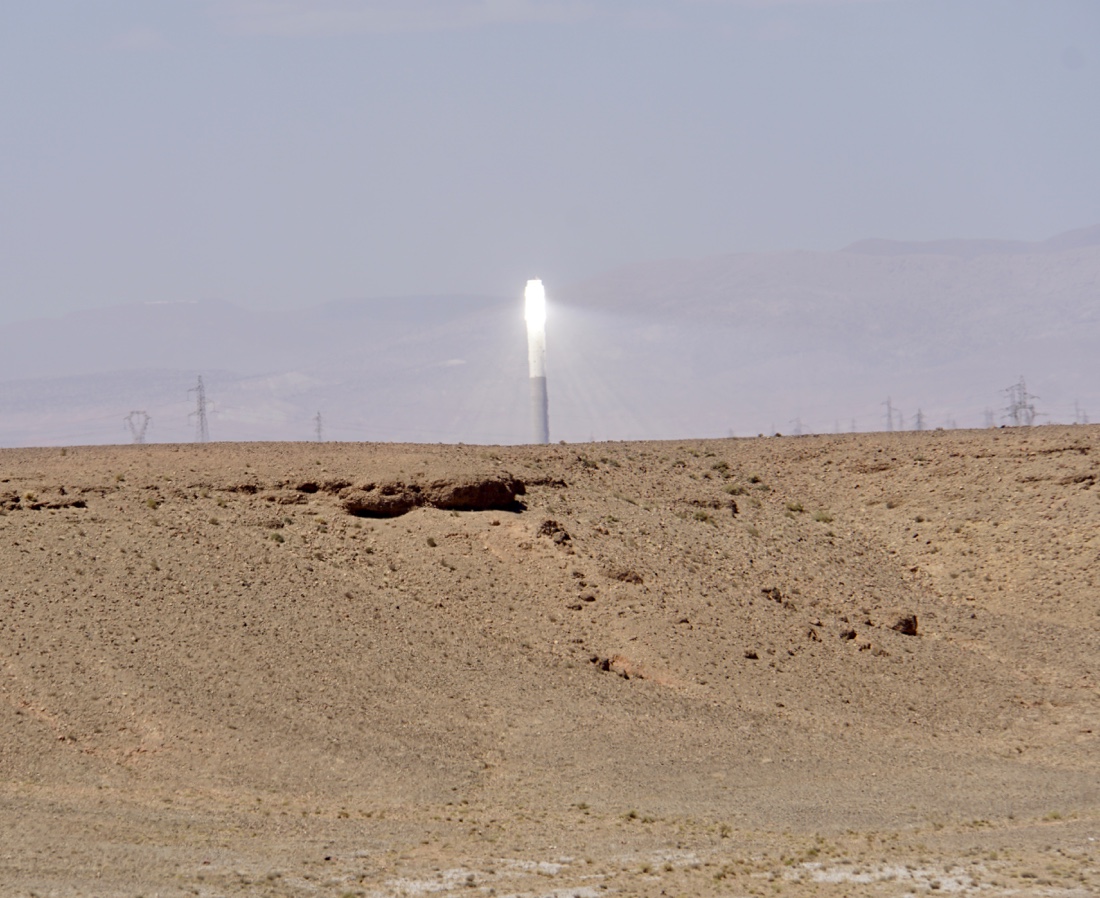
We return to the hotel to relax for the rest of the afternoon. I got in a swim at the lovely, long and cool pool.
Drinks in the Grand Salon. Had a long conversation with Mungo, who with his wife, Romily, are the charming co-hosts here. They’ve been running very high end places in the Phillipines and in Southeast Asia in the 8 years since their graduation from university, before coming here. We discussed places around the world, as well as Dar Ahlam.
Dinner tonight was served to us outside, in a courtyard, by candlelight and with live music. Dinner was excellent. This place is an amazing experience.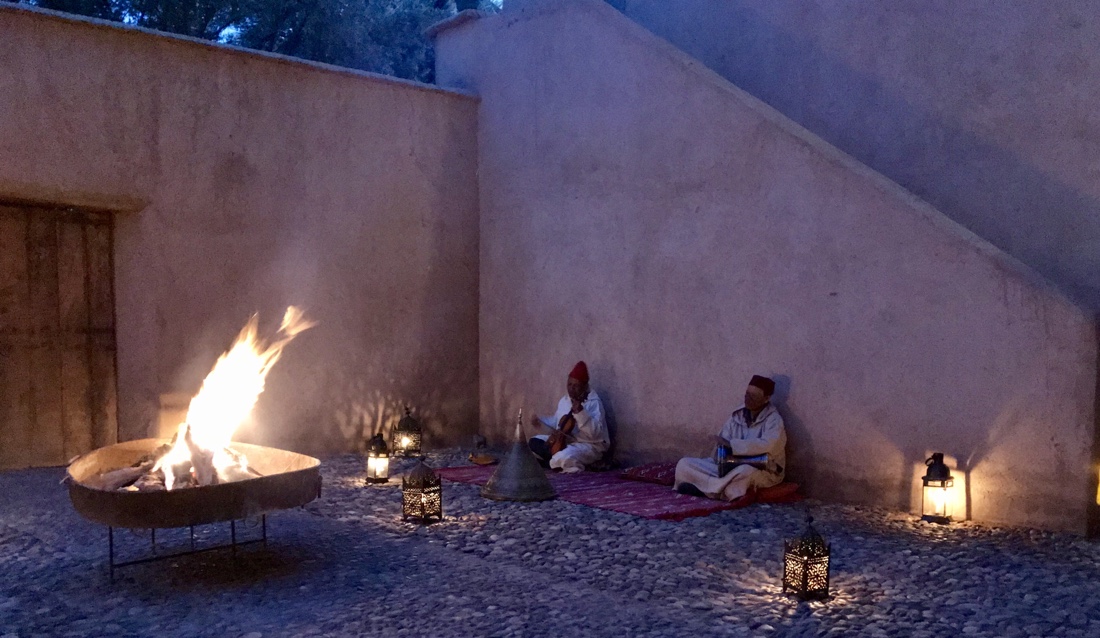 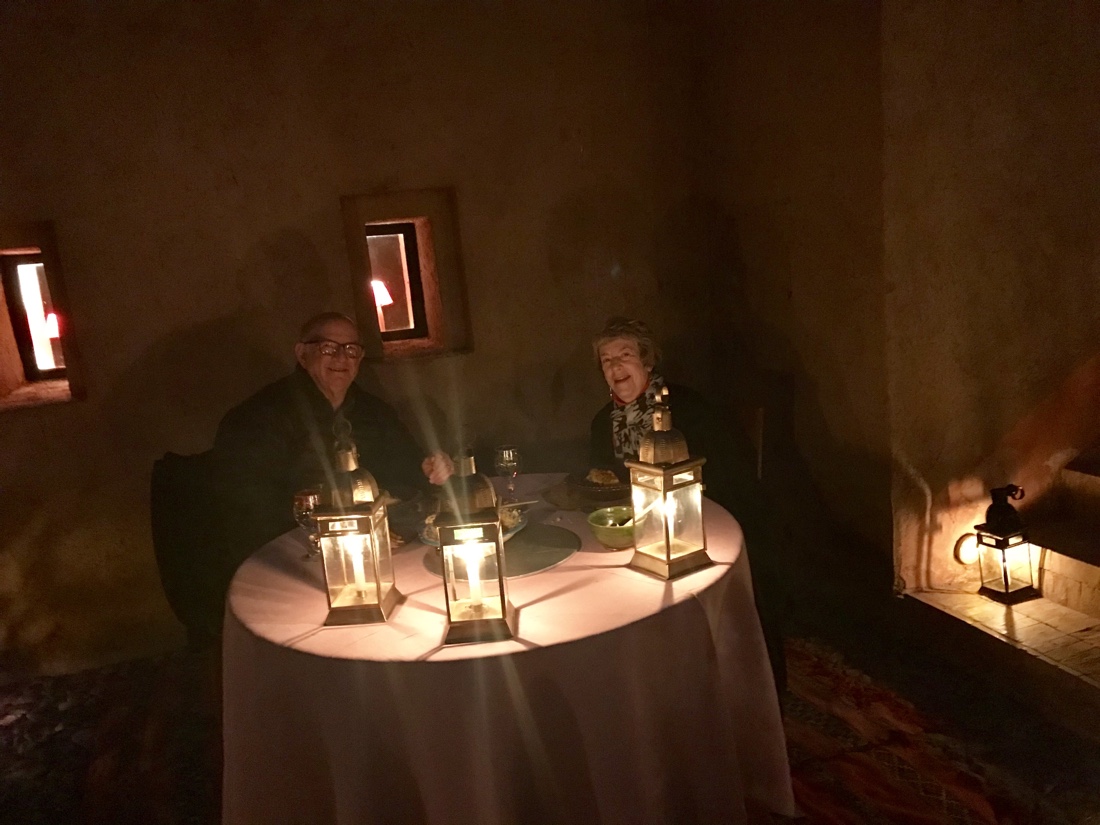
March 13-14
After a lovely breakfast alone by the side of the pool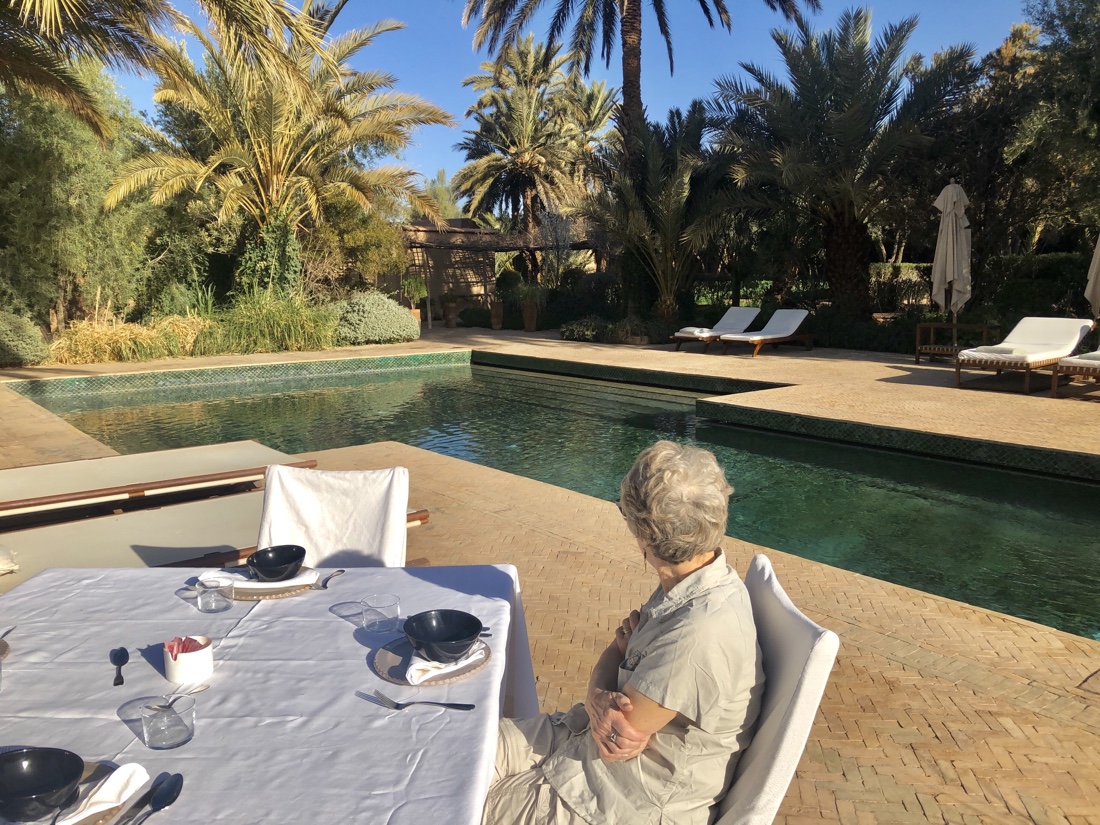
we are driven approximately five hours (turns out to be over six) to the desert. A burgeoning movie industry appears to be booming and we passed by two new movie studios.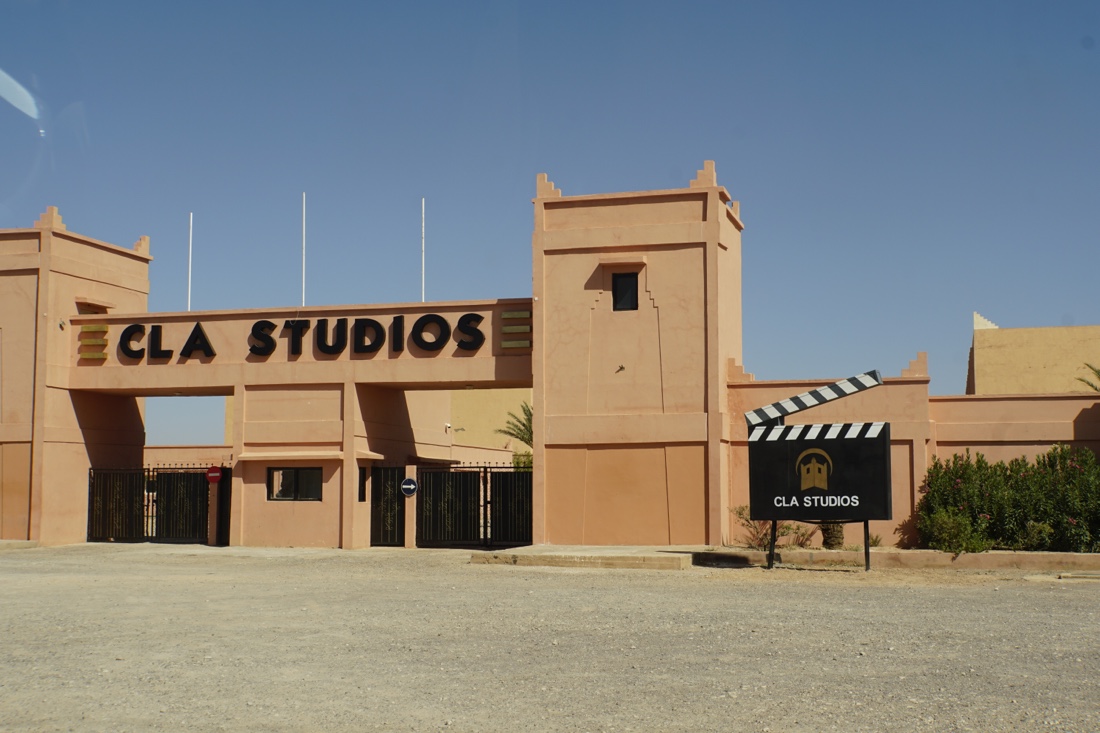
After several hours, we stopped for a picnic lunch (with a cute brother and sister around; their mother did not want her picture taken, but encouraged the kids) 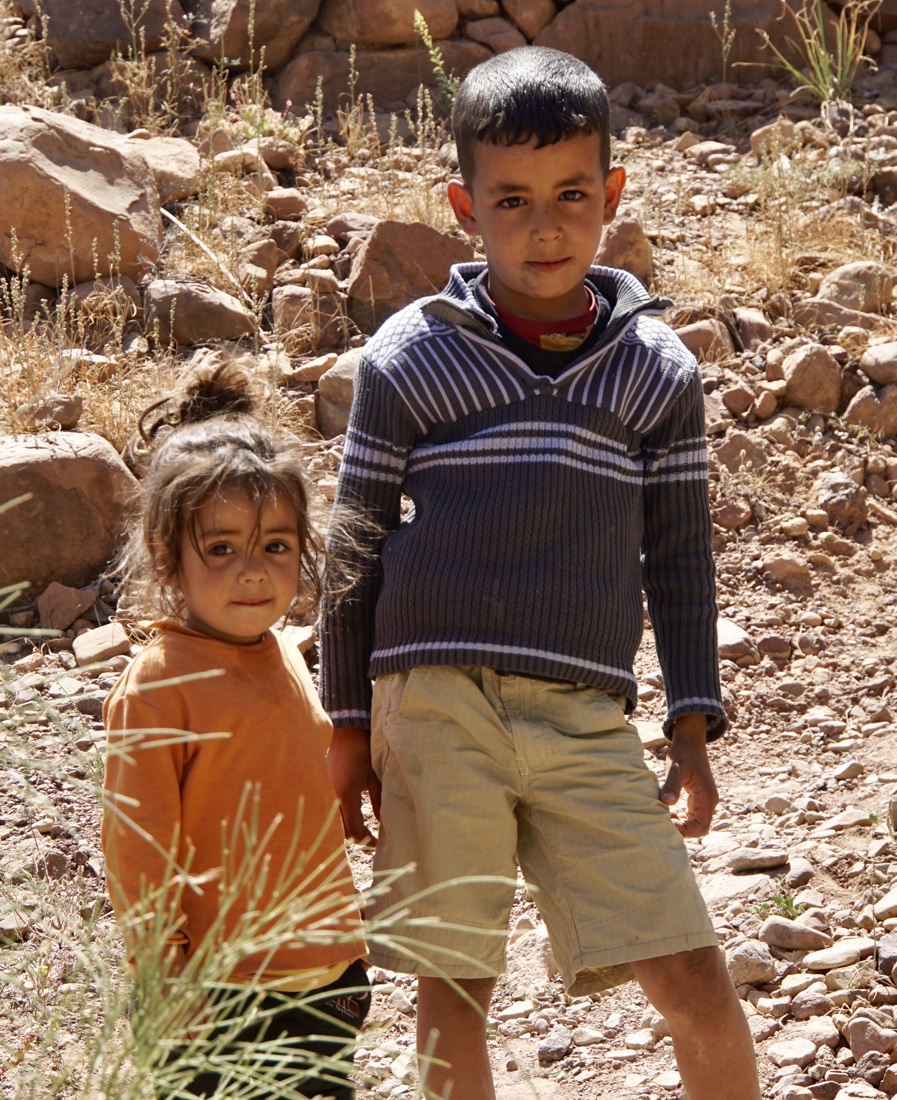
Two women passed near our picnic area. They had been collecting grass to bring back to sheep, who were housed indoors, and did not mind a photo, but wanted a coin, which I gave to them.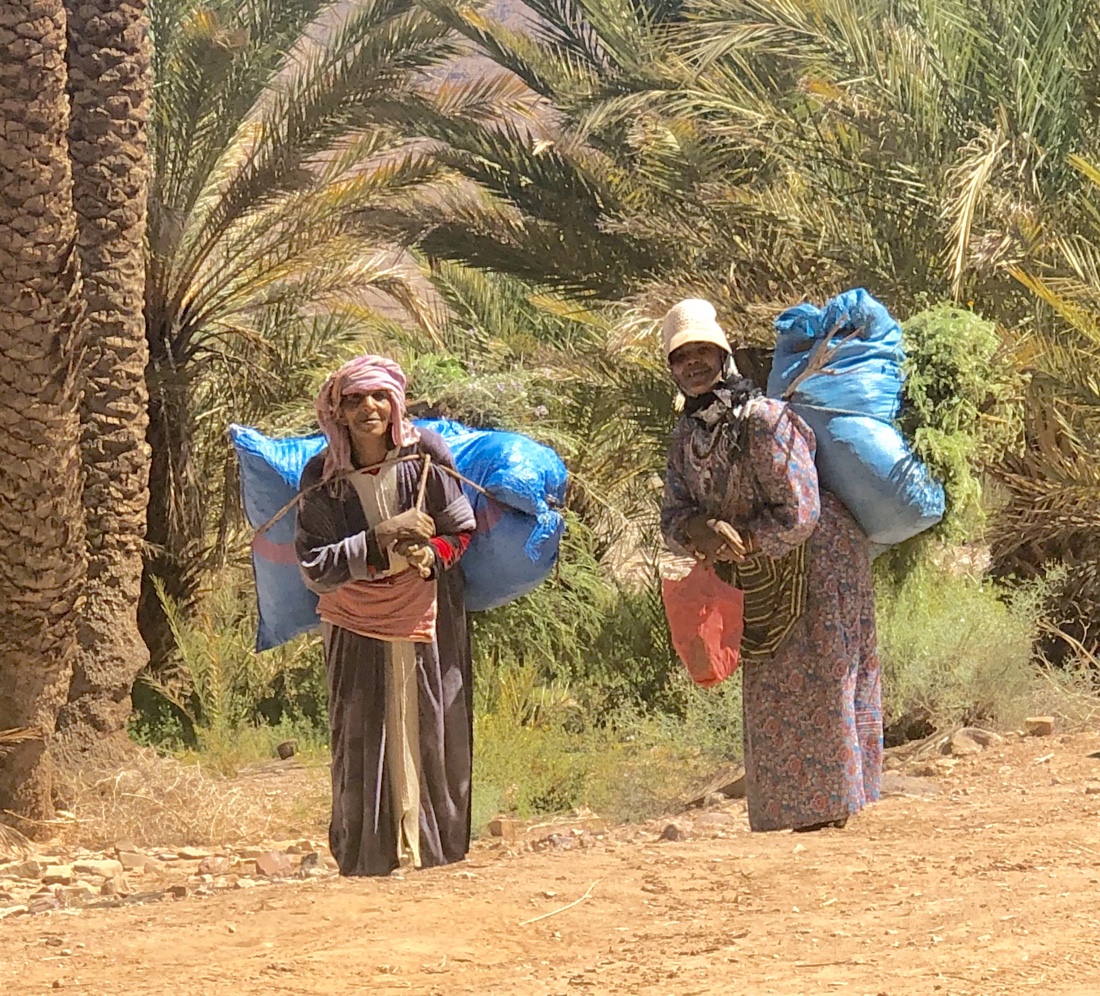
We also stopped to see some fossils from the bottom of what had once been a lake.
and at a recently-inhabited nomadic tent site (note chicken still around).
Carol, as you can see, has gotten into photography.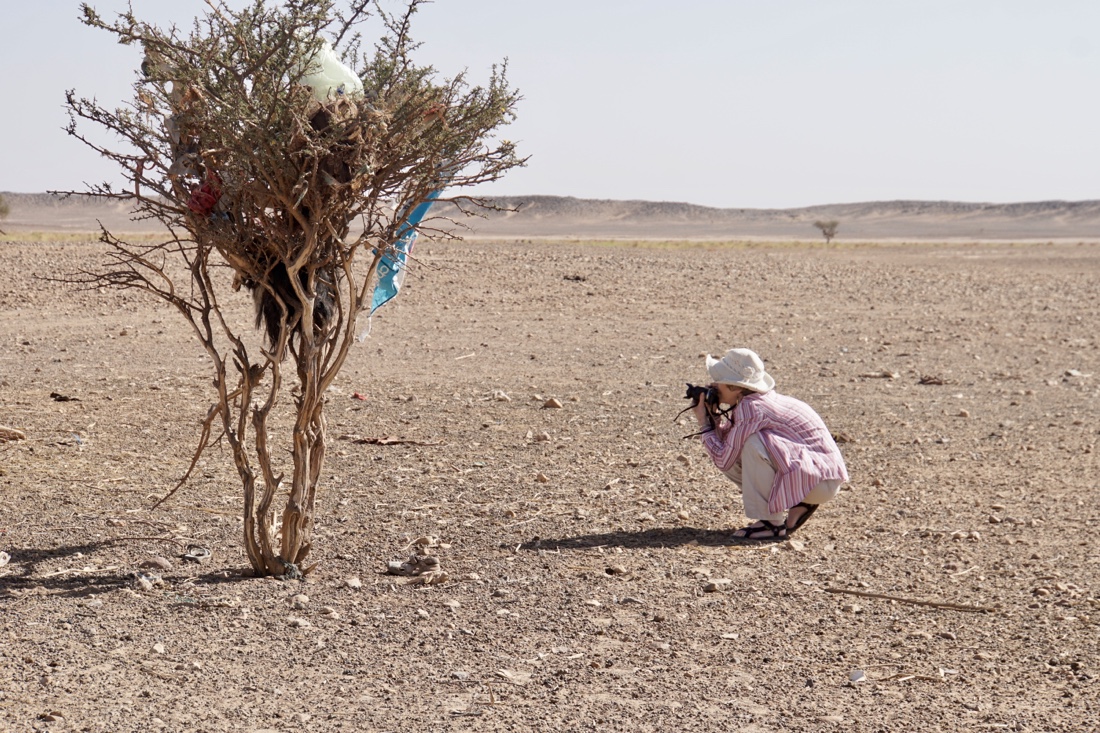
We arrive at the sandscape of Desert Camp Iriki, where we are greeted and immediately served tea.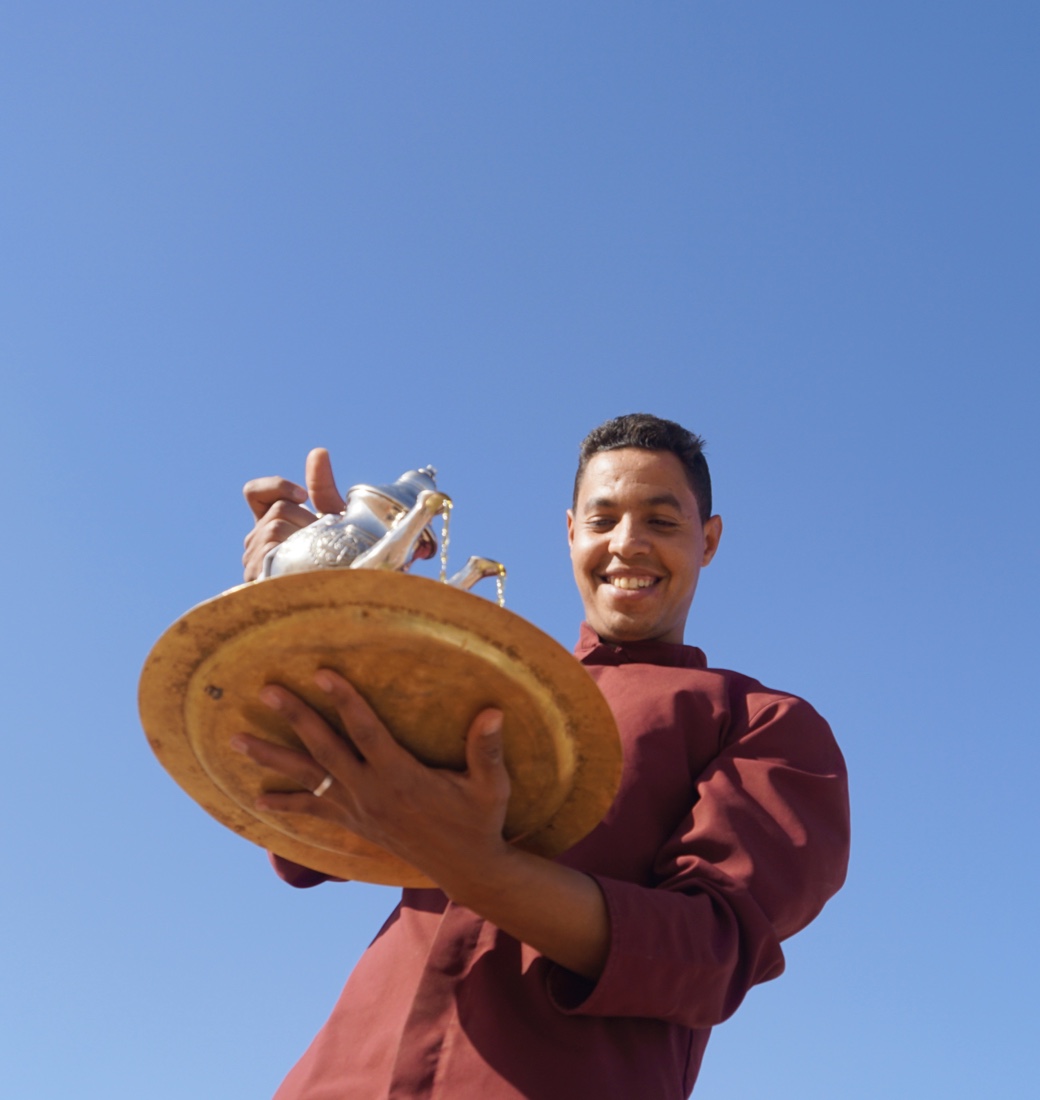
We’re shown to our tent where, as our itinerary puts it, “In the midst of the sand dunes your luxury tent is a retreat filled with African reed mats, Berber cushions and vintage camp decor, plus an en-suite bathroom with toilet, mirror and sink.”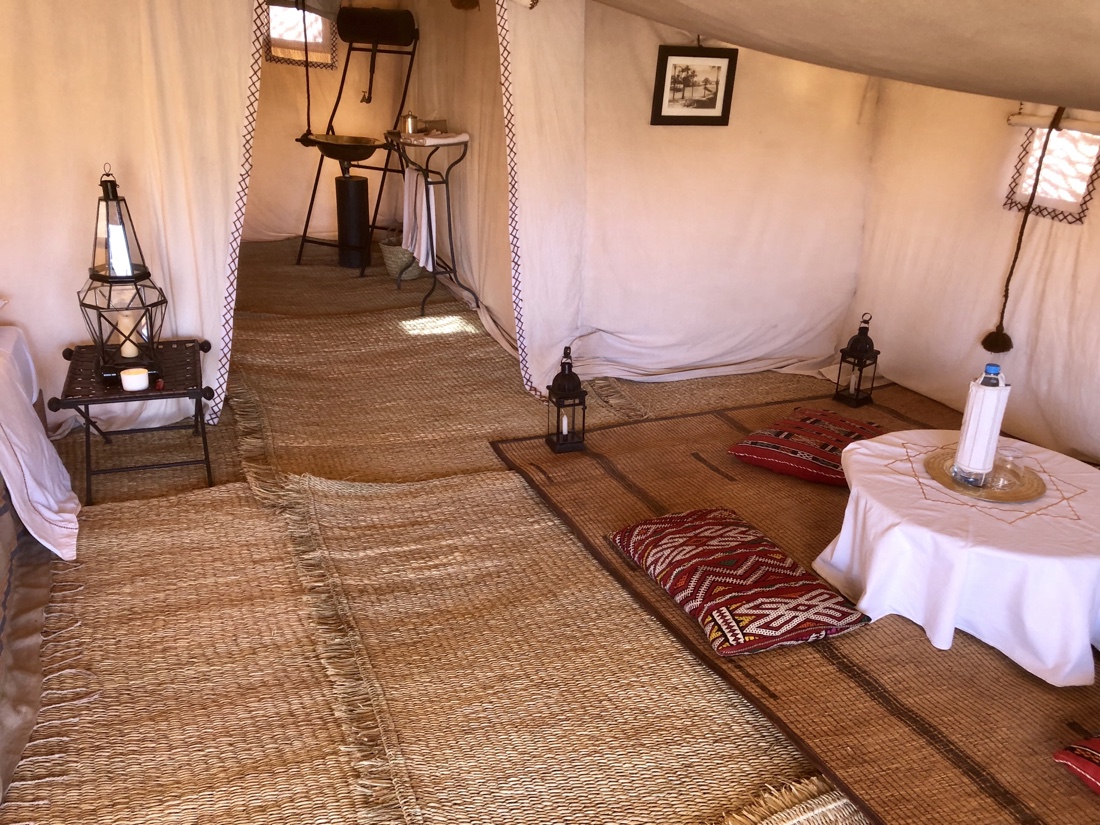
We watch the sunset from atop a dune, aperitif in hand, then stroll back along the path of lanterns to our dinner by the campfire. 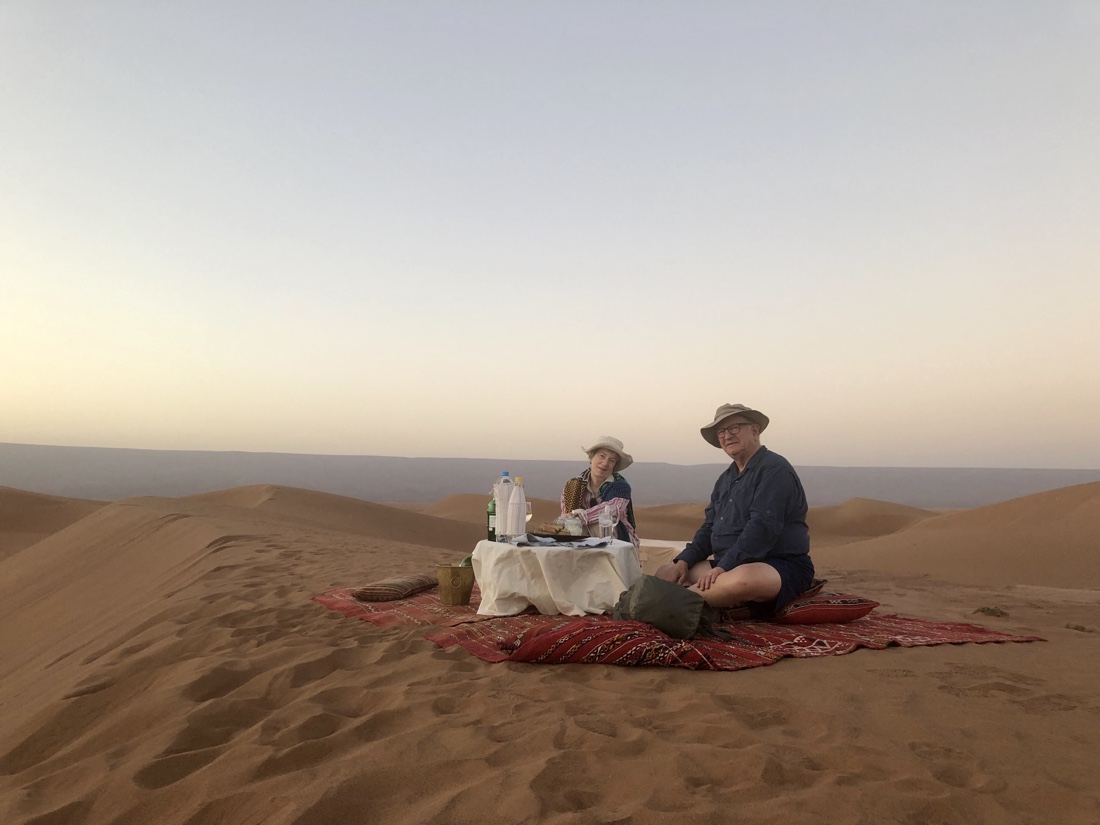 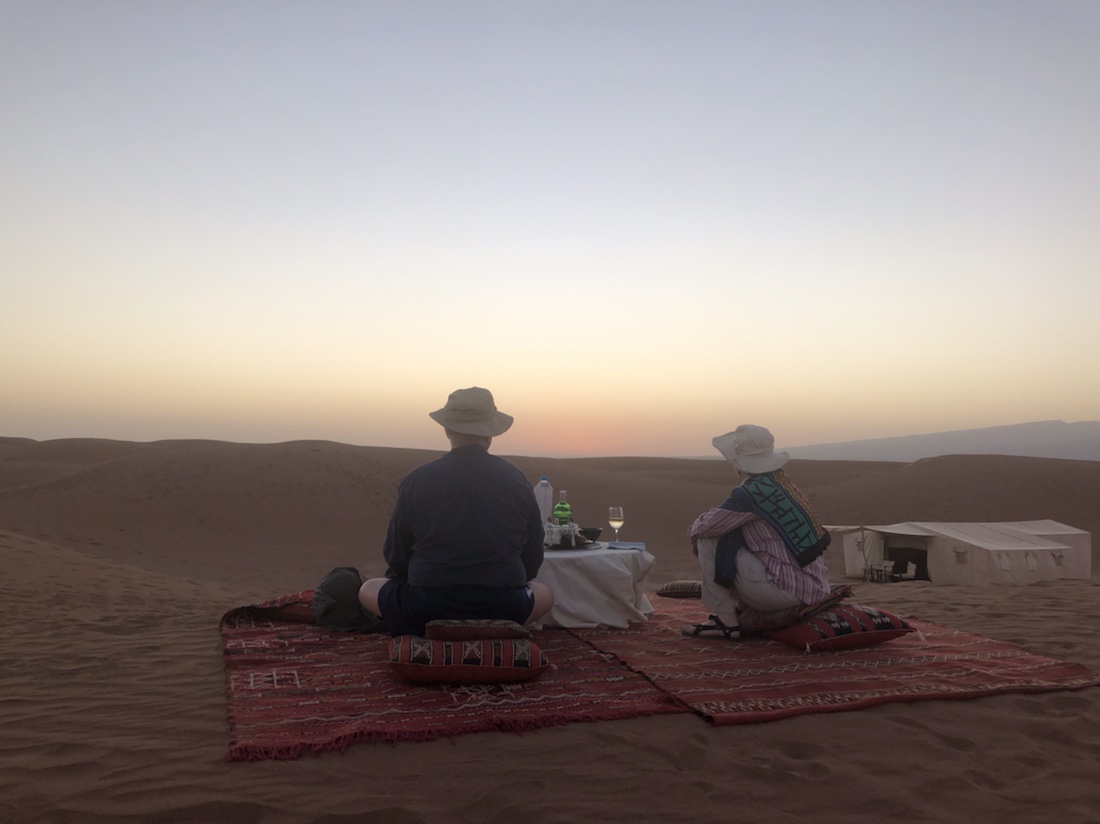 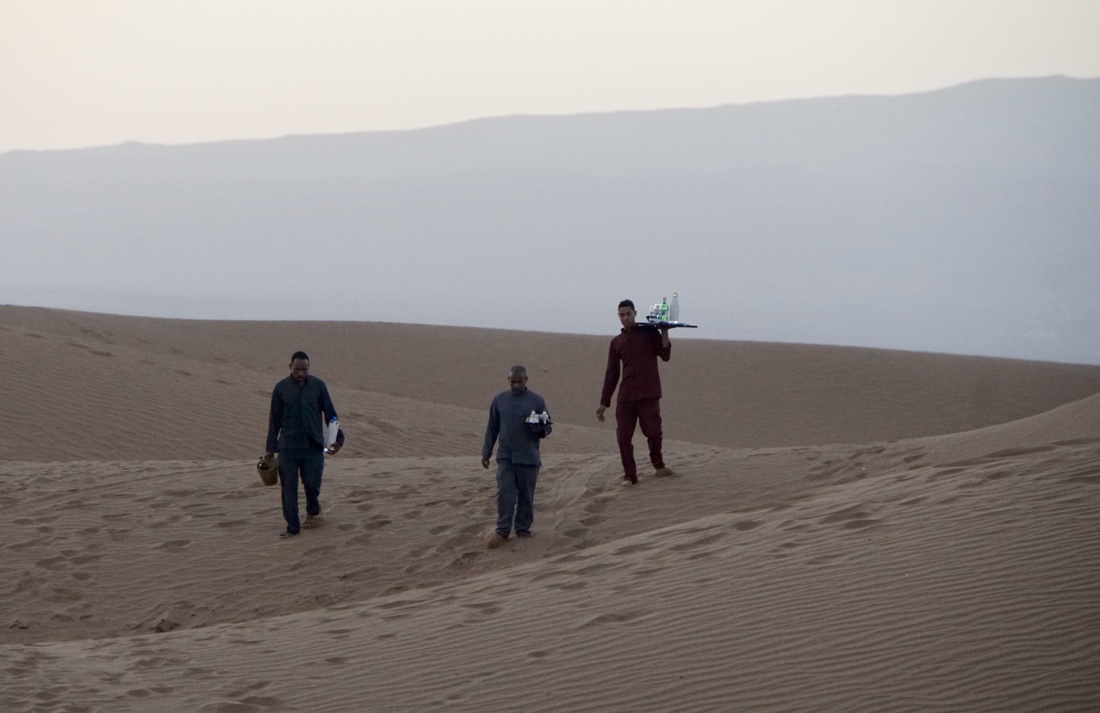 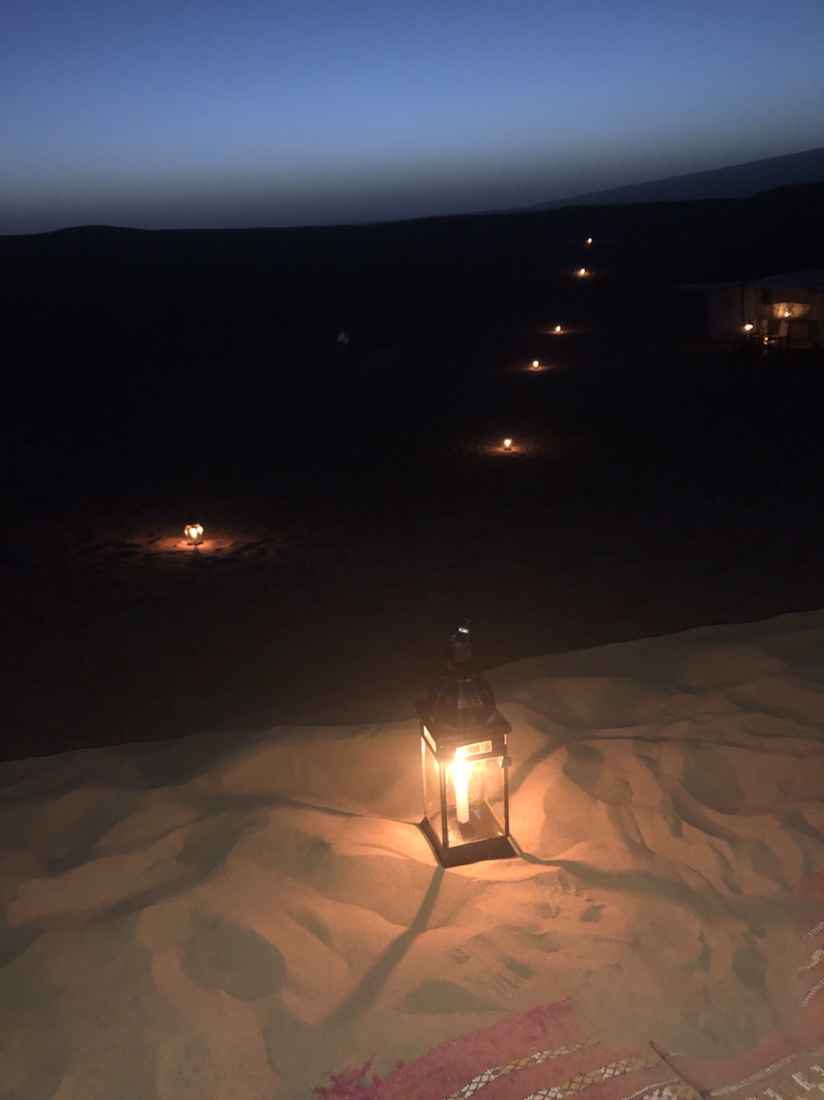 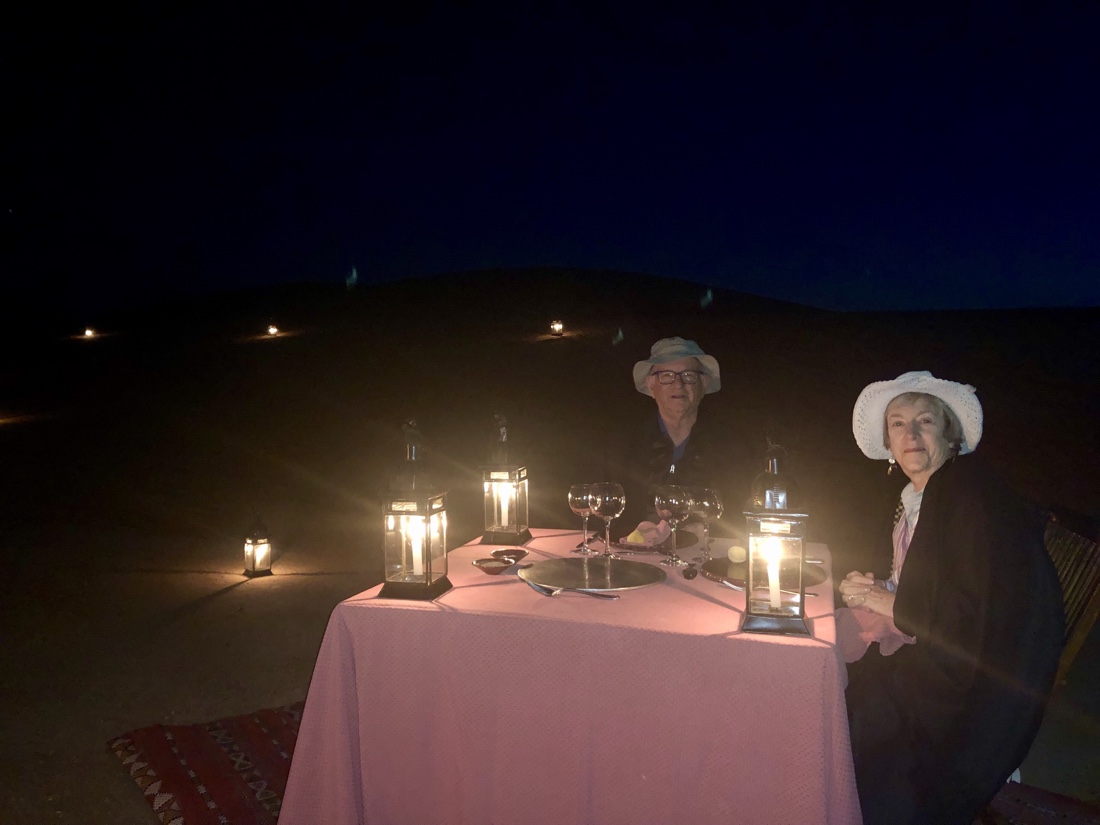 Stargaze tonight and then rise with the first hints of the brilliant North African sun to enjoy a breakfast table poised on the rippling sands; tough, huh? Stargaze tonight and then rise with the first hints of the brilliant North African sun to enjoy a breakfast table poised on the rippling sands; tough, huh?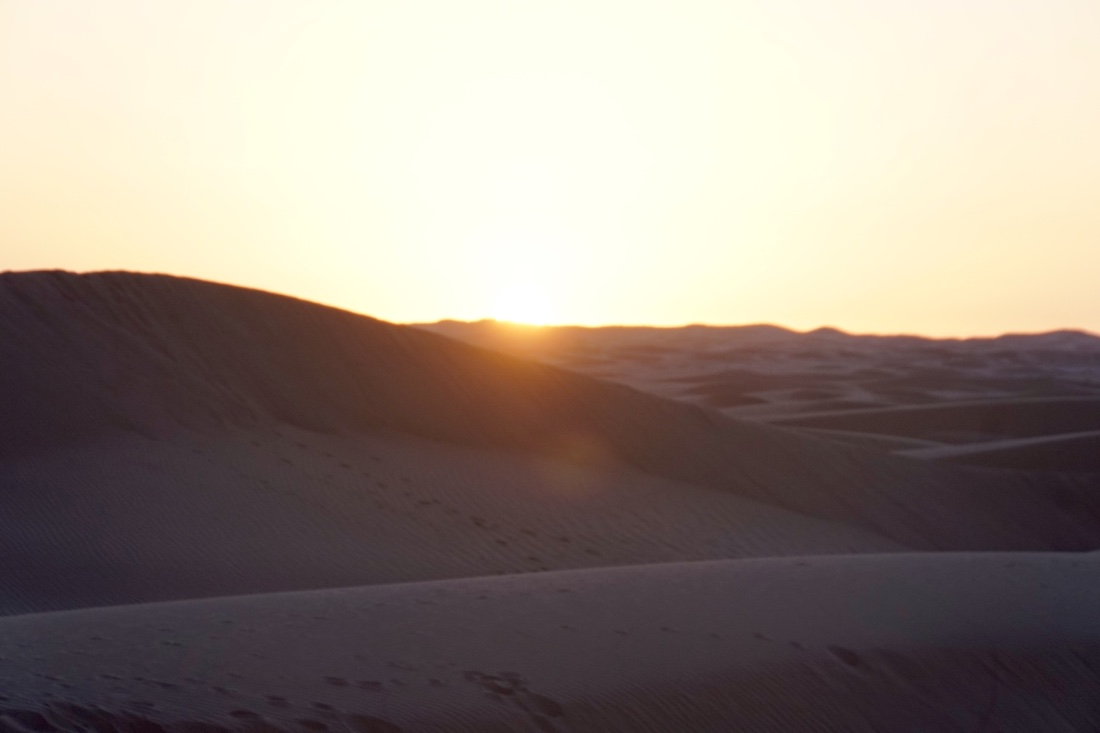 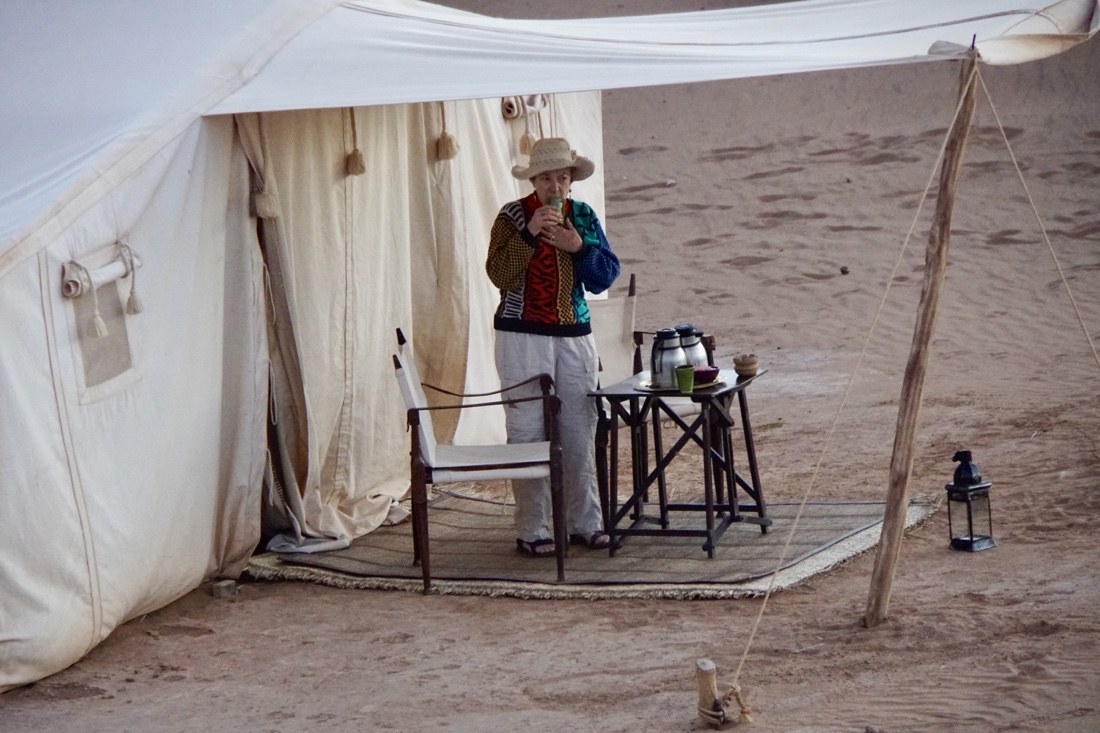
A native woman descends the dunes.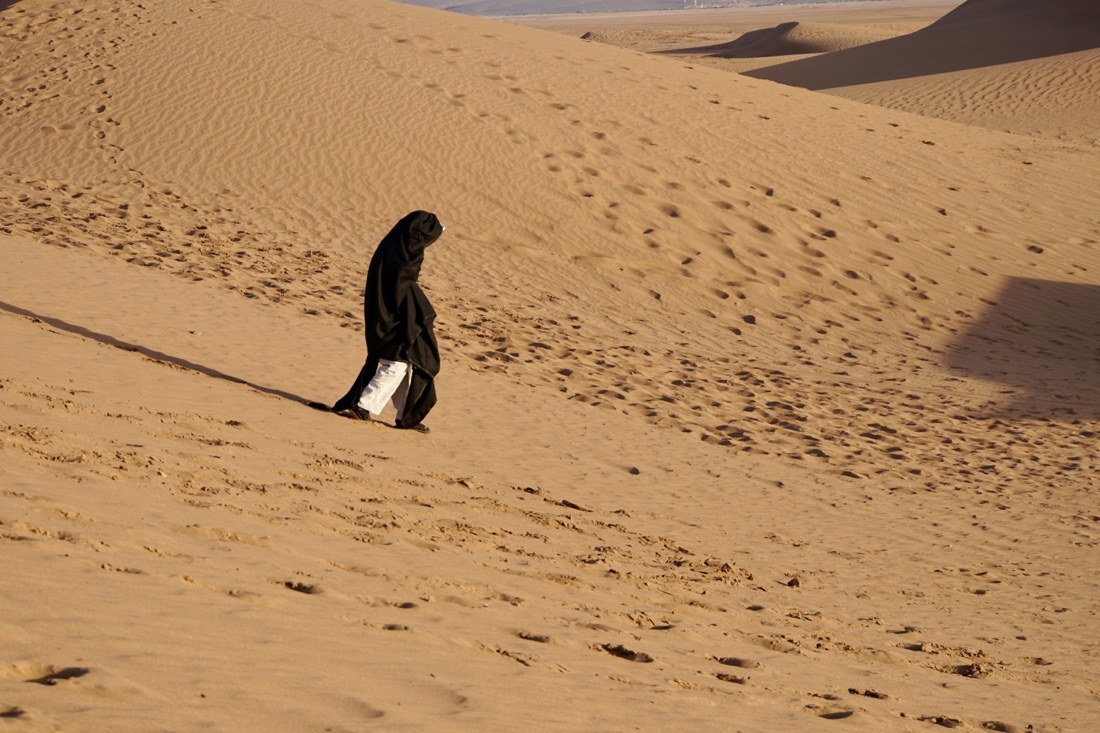 It’s Carol, wrapped in a blanket to protect herself from the chill morning air. It’s Carol, wrapped in a blanket to protect herself from the chill morning air.
After breakfast, we travel the five hours back to Skoura, passing some nomads tending their goats. We arrive at the fabulous Dar Ahlam Kasbah at which we are staying. Pictured below are the grand salon and a lunch they have set for us in the garden. We arrive at the fabulous Dar Ahlam Kasbah at which we are staying. Pictured below are the grand salon and a lunch they have set for us in the garden.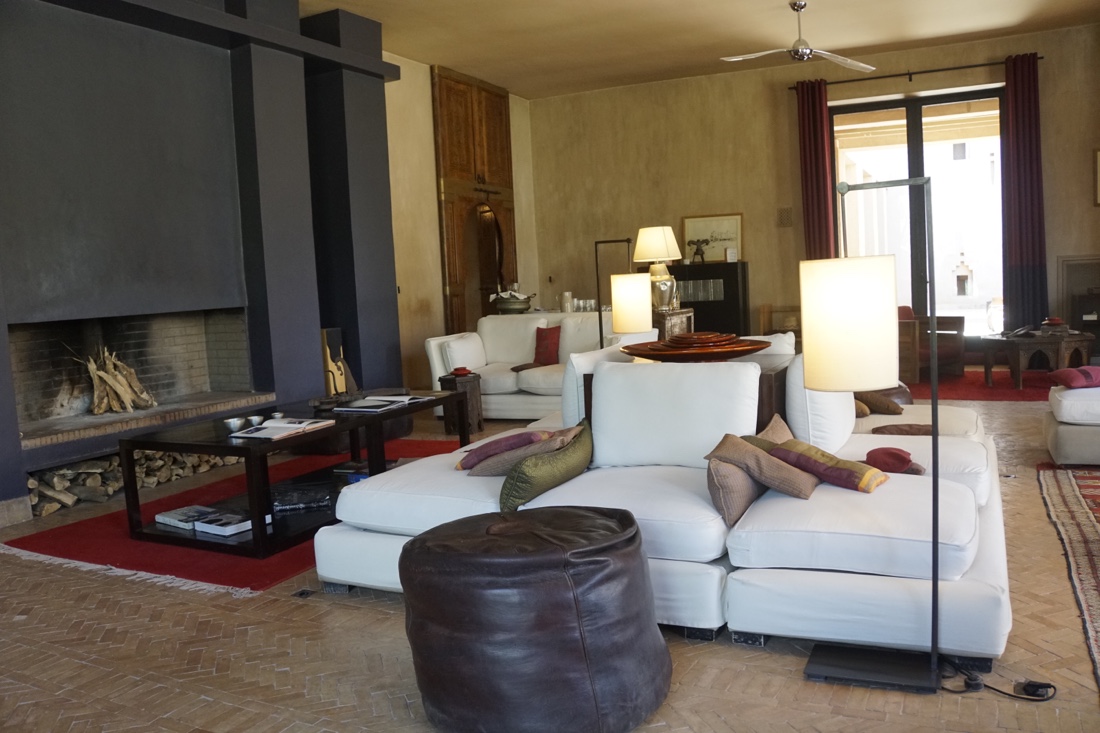 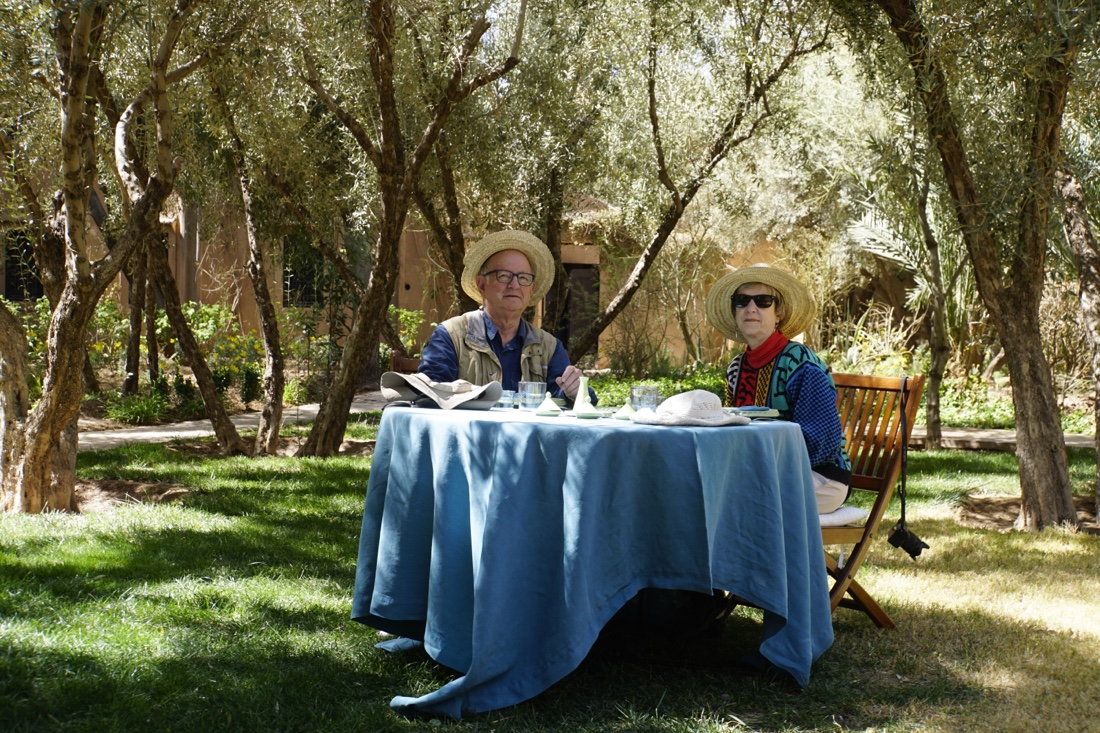
Though the desert stay had its moments, if we had it all to do over again, we’d have remained at the Kasbah. Basically, it’s eleven hours of driving for a couple of meals and sleeping in the desert, amid the dunes. Having been to Namibia and seen the dunes there, these dunes do not even remotely compare in grandeur and impact. We’re happy to be back at the Dar Ahlam Kasbah, where I’m posting this after lunch, and will finish off the day in tomorrow’s post.
March 12
We started our day walking through the streets for about 40 minutes, observing and photographing. We both love doing this. Carol is getting into photography, too. Below are photos we took of people throughout the day.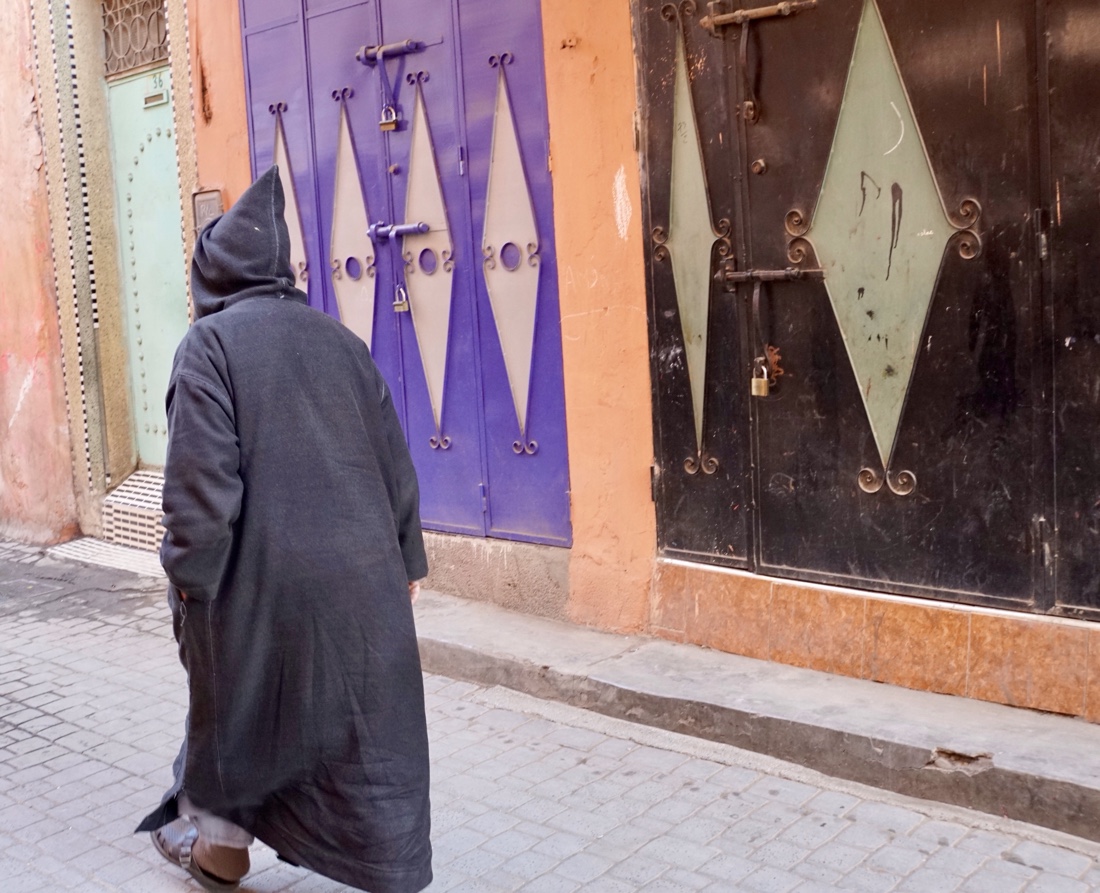 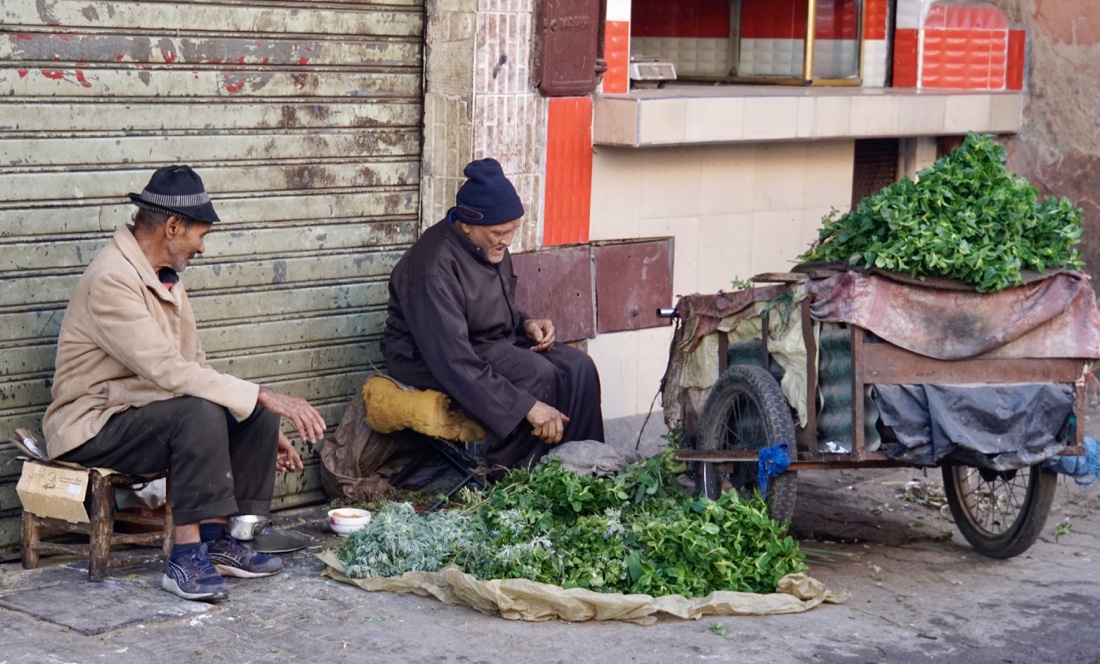 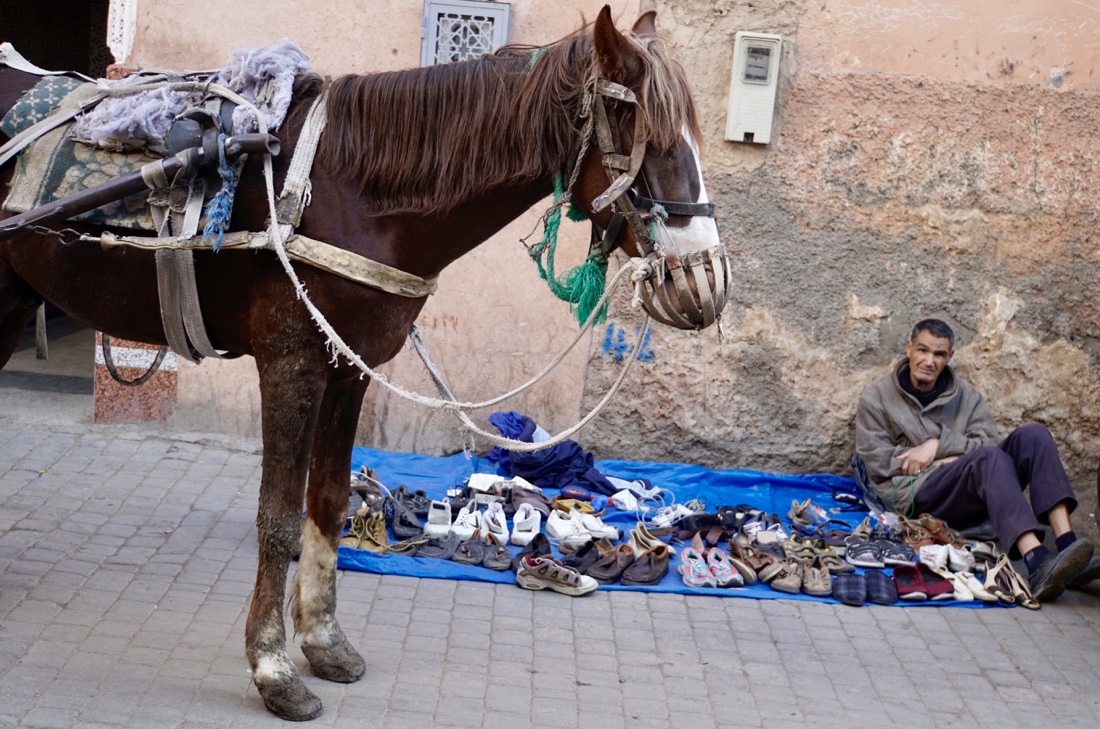 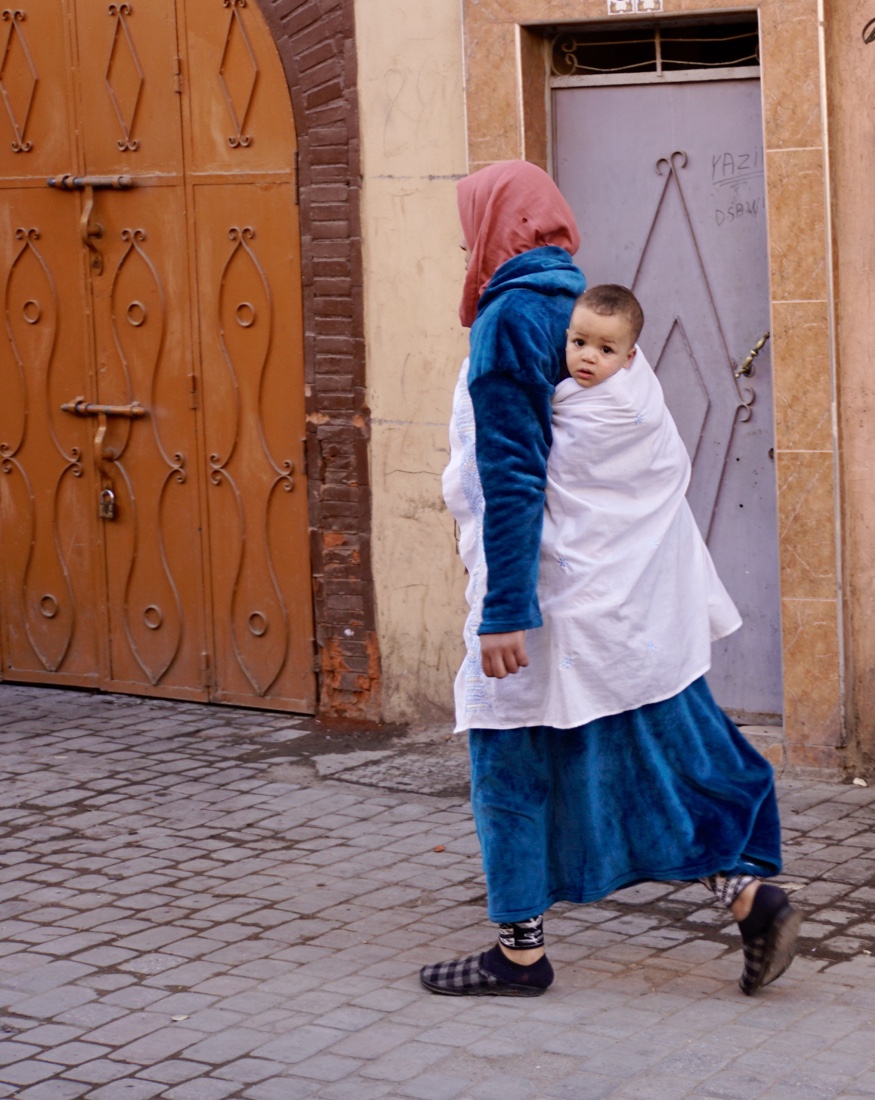 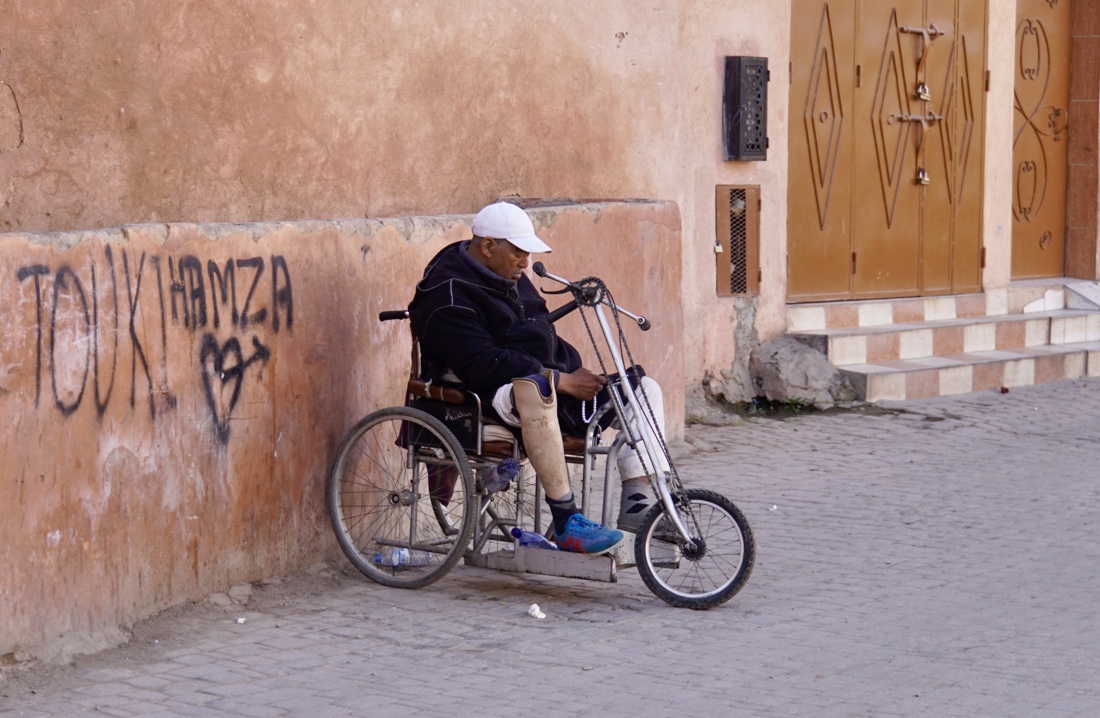 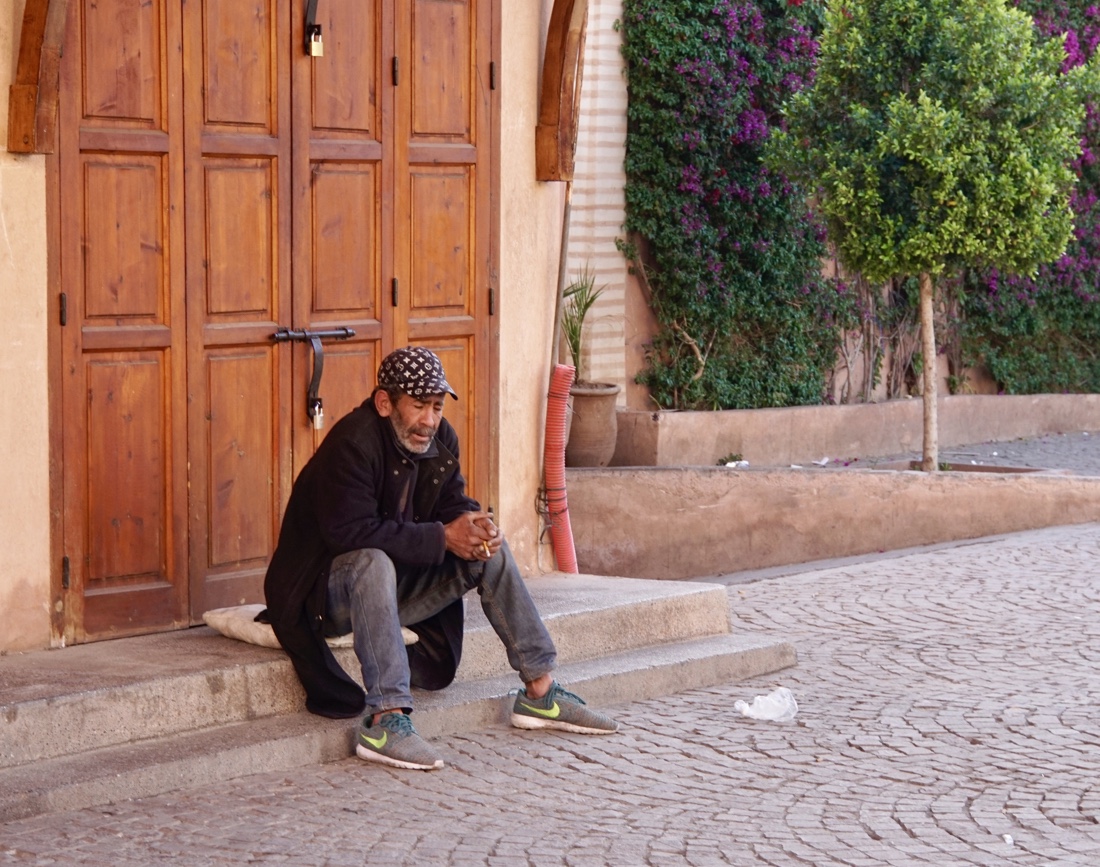 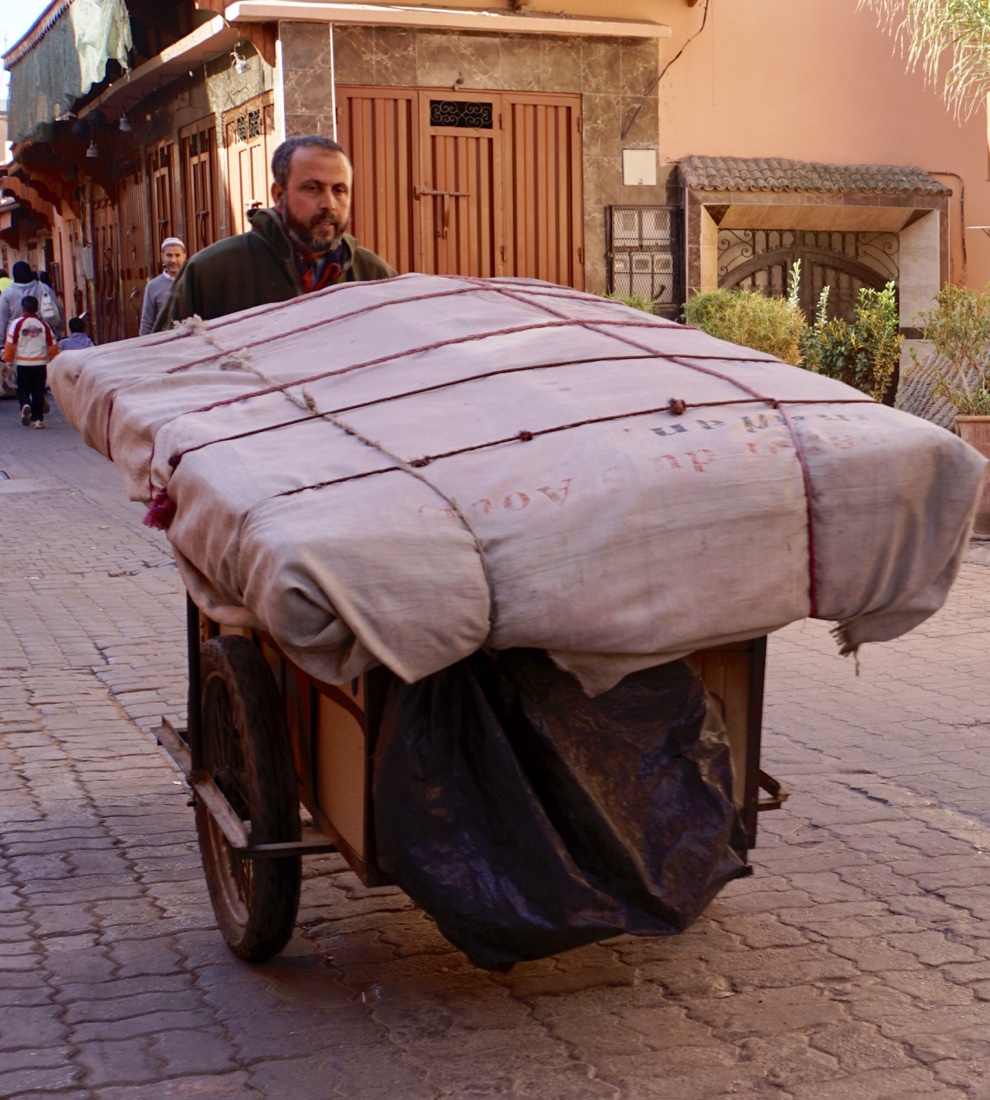 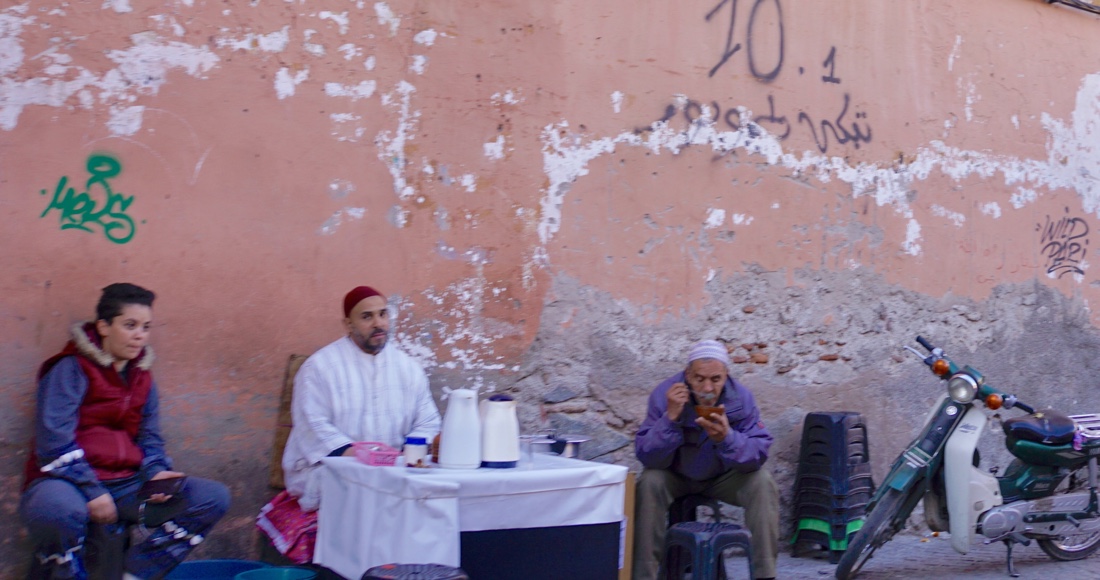 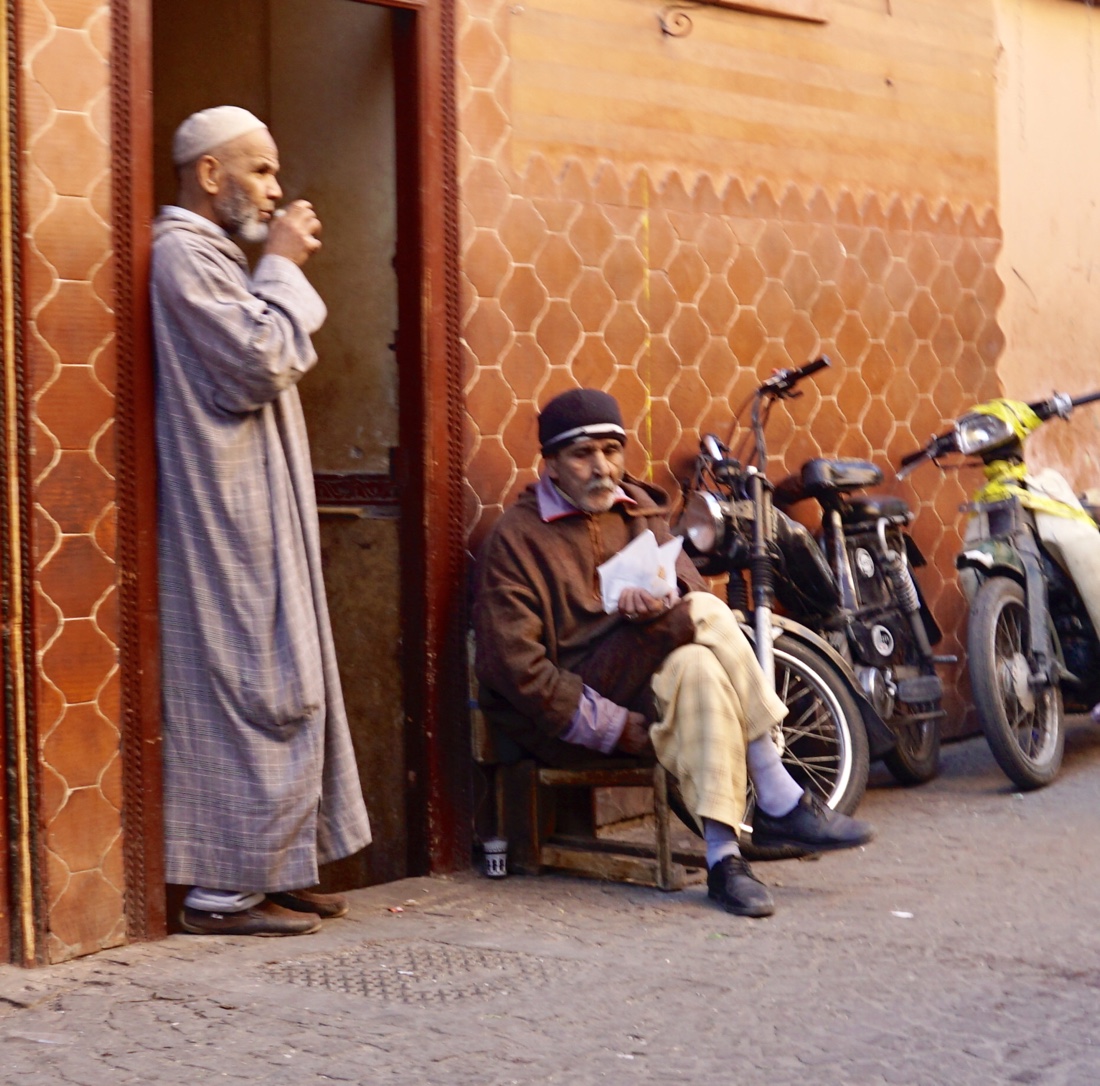 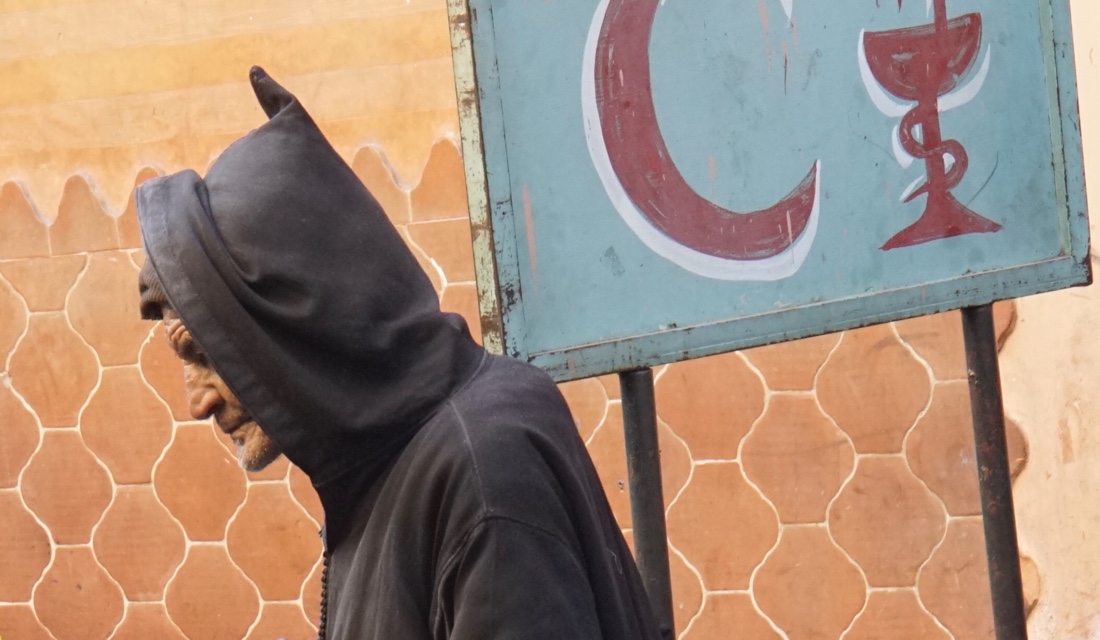 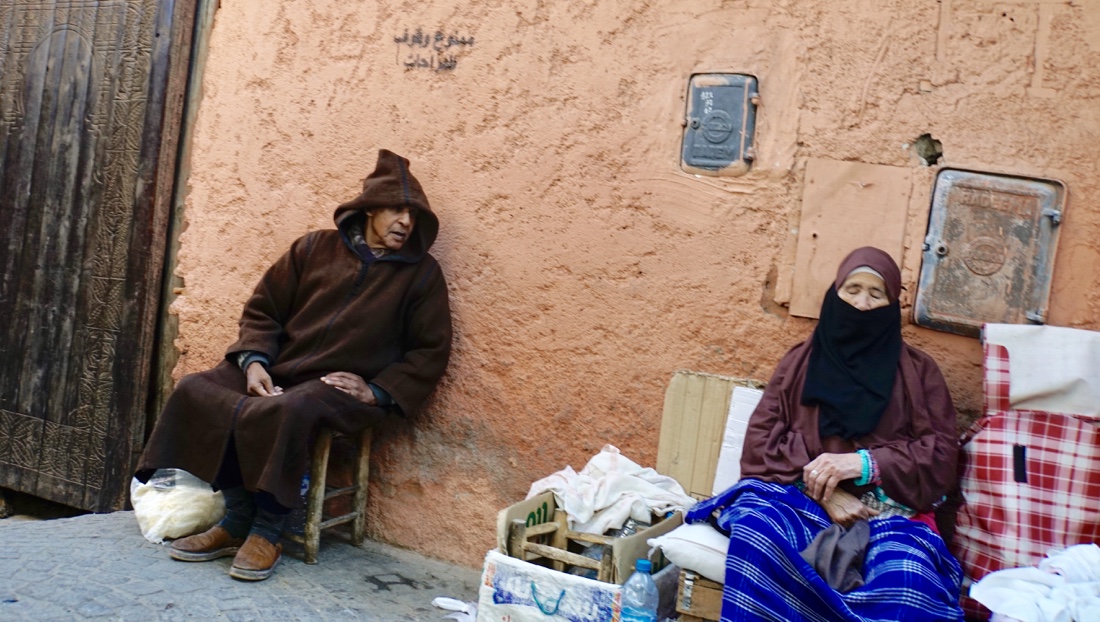 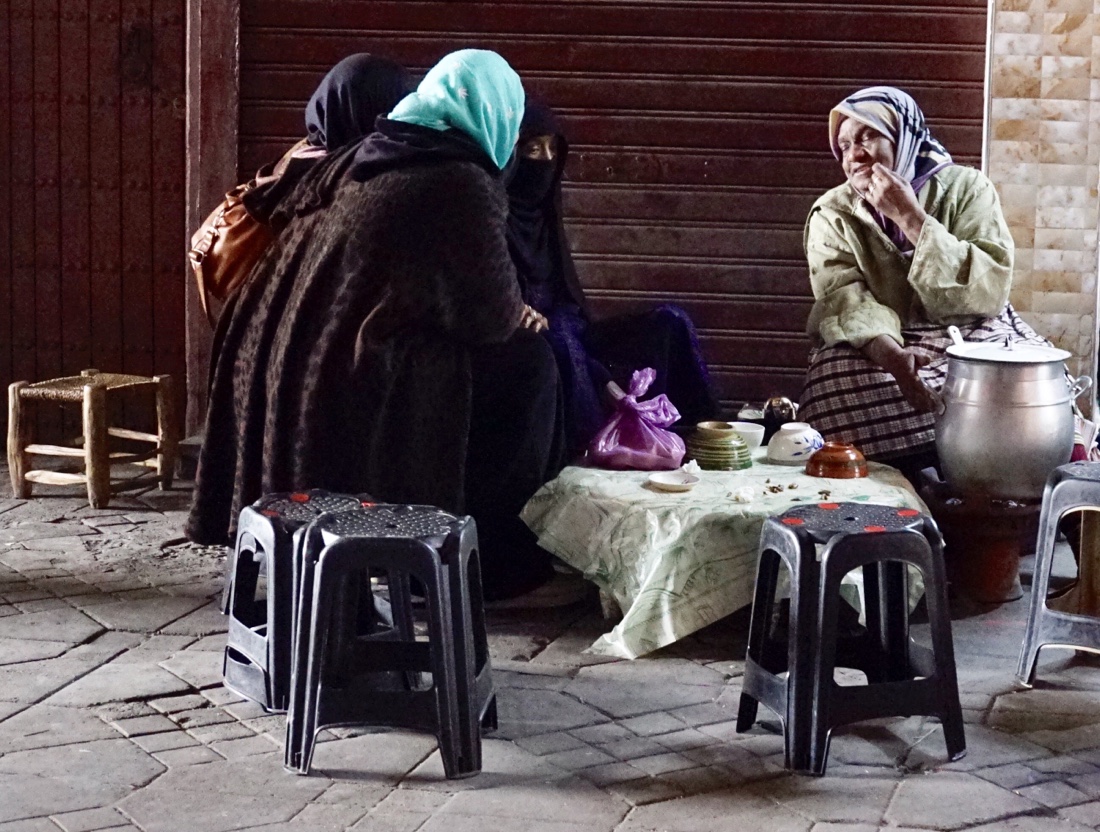
We are then driven to the famous necropolis of the Saadian kings, the Saadian Tombs. It’s worth braving the crowds to experience these amazing tombs. 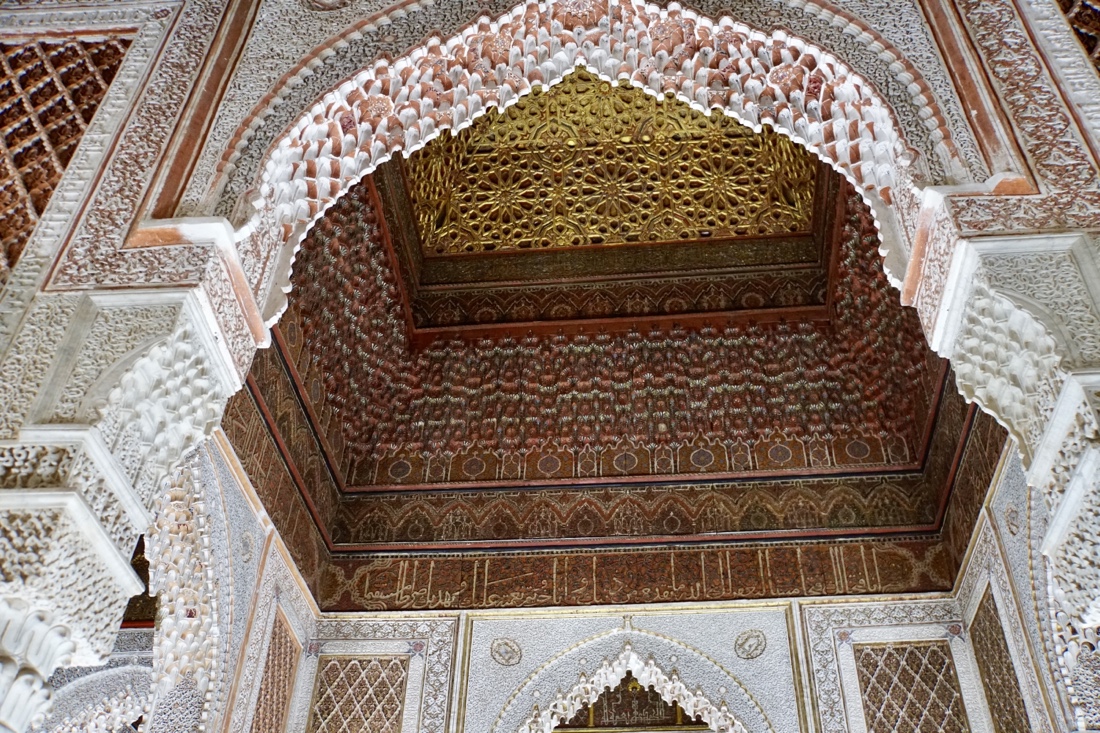  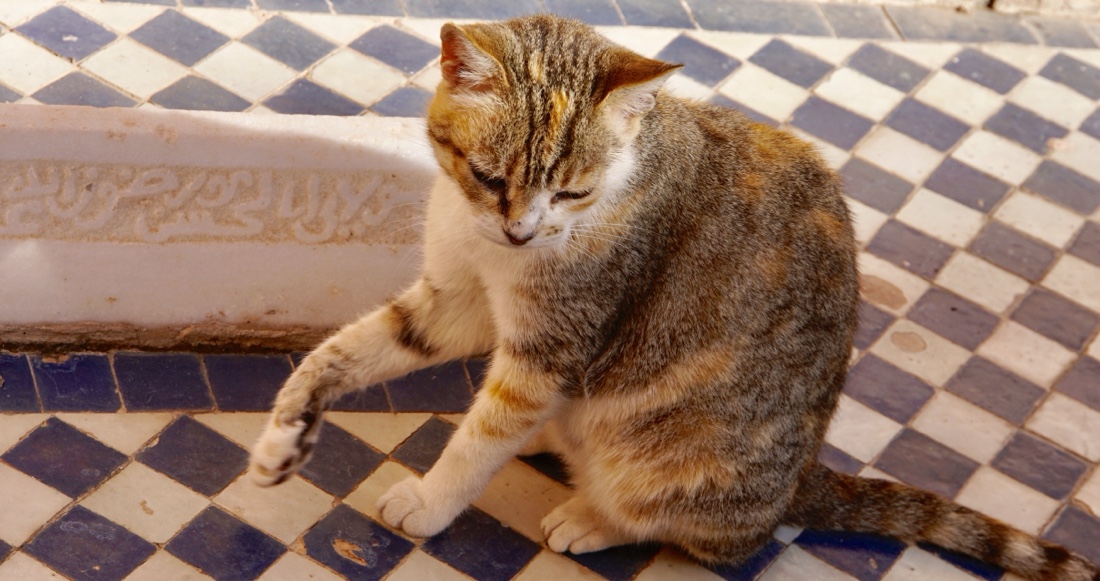 Carol’s fortuitous need to visit the ladies room allows me to capture one of my better photos of the trip. Carol’s fortuitous need to visit the ladies room allows me to capture one of my better photos of the trip.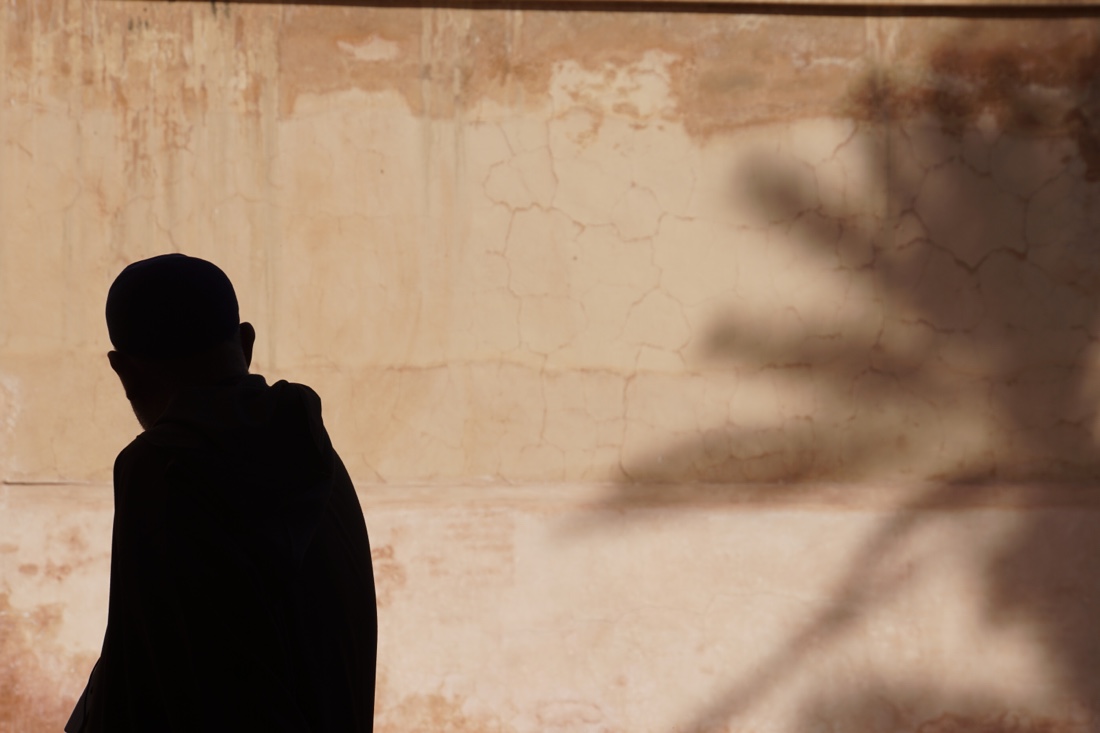
Younes explains the history of the tombs, which amounts to something of a historical orientation tour of Marrakech. Marrakech is a city of immense energy and history and one of the most compelling of all African/Arab cities. Sitting in the shadows of the snow-clad peaks of the Atlas Mountains, Marrakech is not only one of Morocco’s most aesthetic cities, but also one of its most lively and exciting. Founded almost 1000 years ago, Marrakech is a feast for the senses and has remained at the heart of Moroccan life ever since, acting as Sultanate capital on occasions, but now undoubtedly as the country’s cultural (or at least its tourist) center.
After the tombs we visit the outside of the large 12th century mosque and minaret that we’ve seen before from a distance. Younes explains more about the history of the construction of the mosque and minaret.
After lunch at a nearby restaurant we ride through the city in a horse drawn carriage arriving in style at Les Jardins Majorelle. 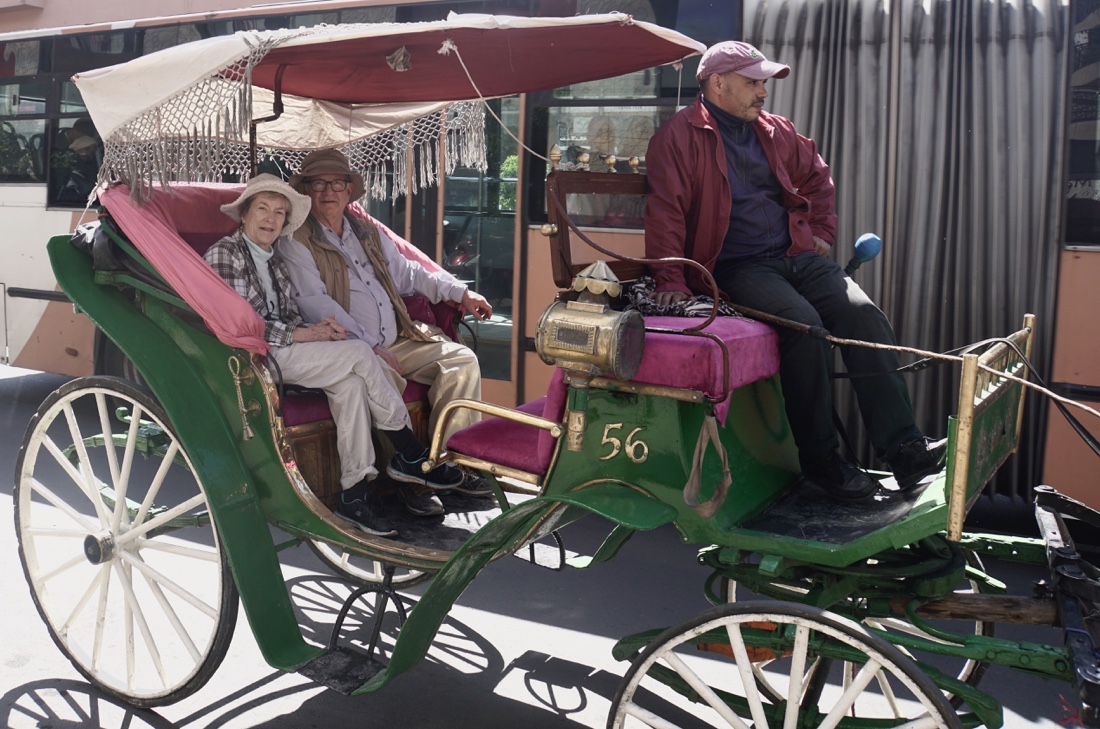 (The “Younes twins”, Younes the driver on the left and Younes the guide on the right, pose for a photo in front of the horses.) (The “Younes twins”, Younes the driver on the left and Younes the guide on the right, pose for a photo in front of the horses.)
The French painter Jacques Majorelle (1886 – 1962) dedicated forty years of his life to the creation of the luxurious gardens and Berber museum. An amateur botanist, Majorelle included plants from all five continents in the gardens.
The garden covers two and a half acres, and was opened to the public in 1947. In 1980 the garden was purchased by Yves Saint-Laurent and his partner, Pierre Bergé. After his death in 2008, Saint-Laurent’s ashes were scattered in the gardens.
Marjorelle’s studio in the gardens, a Cubist style villa constructed by architect Paul Sinoir, has since been transformed into the Berber museum, and is painted a vibrant blue. The museum houses an excellent and interesting collection of Berber tools, jewelry, costumes, pottery, weapons and the like.
A Museum of Love in the gardens houses the posters Saint-Laurent created annually for friends and clients, all of which include the word “love.” We skip the pricey Saint-Laurent store.
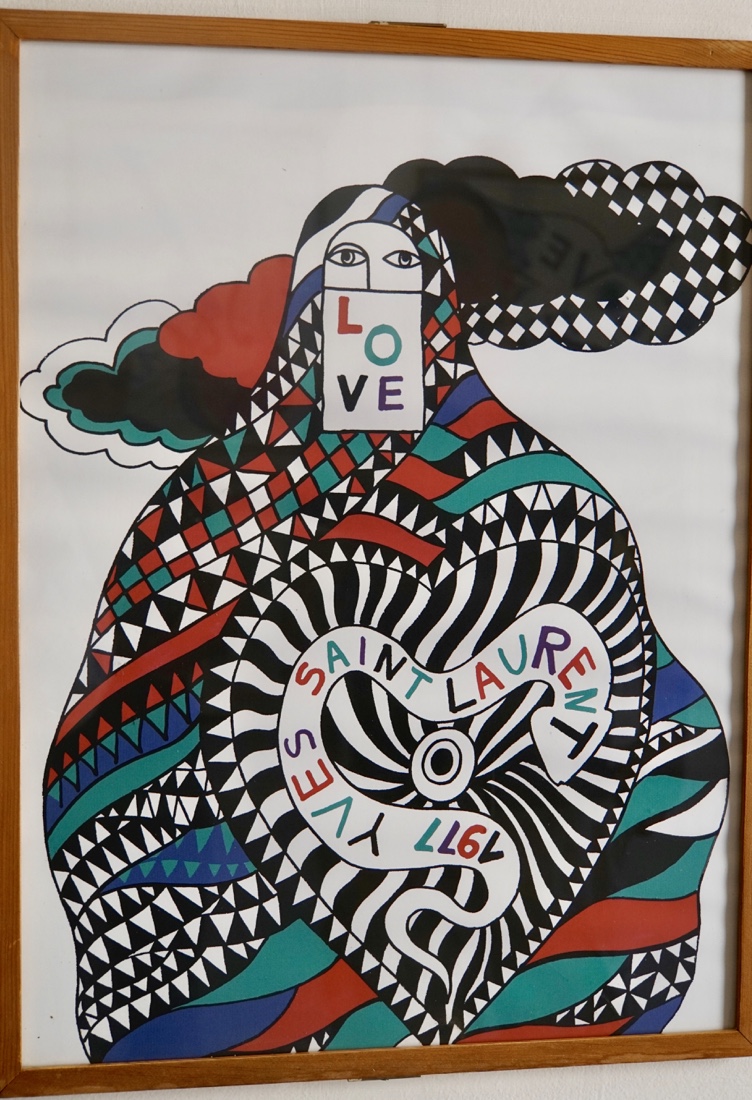
Younes squeezes in one last activity, a visit to a very large art and antiquities gallery that has art work and artifacts of all kinds. We are escorted around the two large floors by a man who tells us about what we are seeing. The contents are quite exquisite and we’re happy to have seen it, though we don’t have nearly enough time to explore and have no interest in buying. The gallery man tries to get Carol to make a counter offer for a beautiful, metal cane with inlaid gems the he’s told her would be $500. When he finally gets her to name a number the conversation ends quickly when she offers $50. We did both get to use the bathroom at the gallery, though. Very nice.
Late this afternoon, we are transferred to the airport, bidding farewell to the Youneses, for our flight from Marrakech to Ouarzazate (40 minute flight, but over two hours spent at the Marrakech airport). Happily, they don’t enforce the carry-on bag limitations, which would have created a serious problem for us. Upon arrival, we are met by a driver from Dar Ahlam, who transfers us to Skoura (1 hour) to the hotel.
Dar Ahlam is secluded by palm groves and almond trees at the edge of the Moroccan desert, this two hundred year old rammed earth Kasbah the color of Champagne is the original ‘maison des rêves’. It is located at the gateway to the Southern Moroccan desert, 40km east of Ouarzazate, in a palm grove named Skoura. You can only access the property by 4×4.
With all modern comforts and the necessary technology, this singular fourteen room hideaway overlooks the Atlas Mountains, with a palm shaded swimming pool, hammam and candle-lit massage room. Meals are customized and served among a selection of distinct, private settings such as the flourishing gardens by Louis Benech, the gifted designer of the Jardin des Tuileries in Paris and the Bosquet du Théâtre d’Eau at Versailles.
We’ve arrived at this place, and it’s totally amazing. We’ll be having dinner at a private spot on the property. We don’t know where yet. There is no restaurant; just private spots around. No menu, the chef works to do something to your taste. There’s art work from around the world. Right now we’re having drinks in the Grand Salon, and Indian music played by musicians outside is wafting in.
Okay, here’s our dinner spot.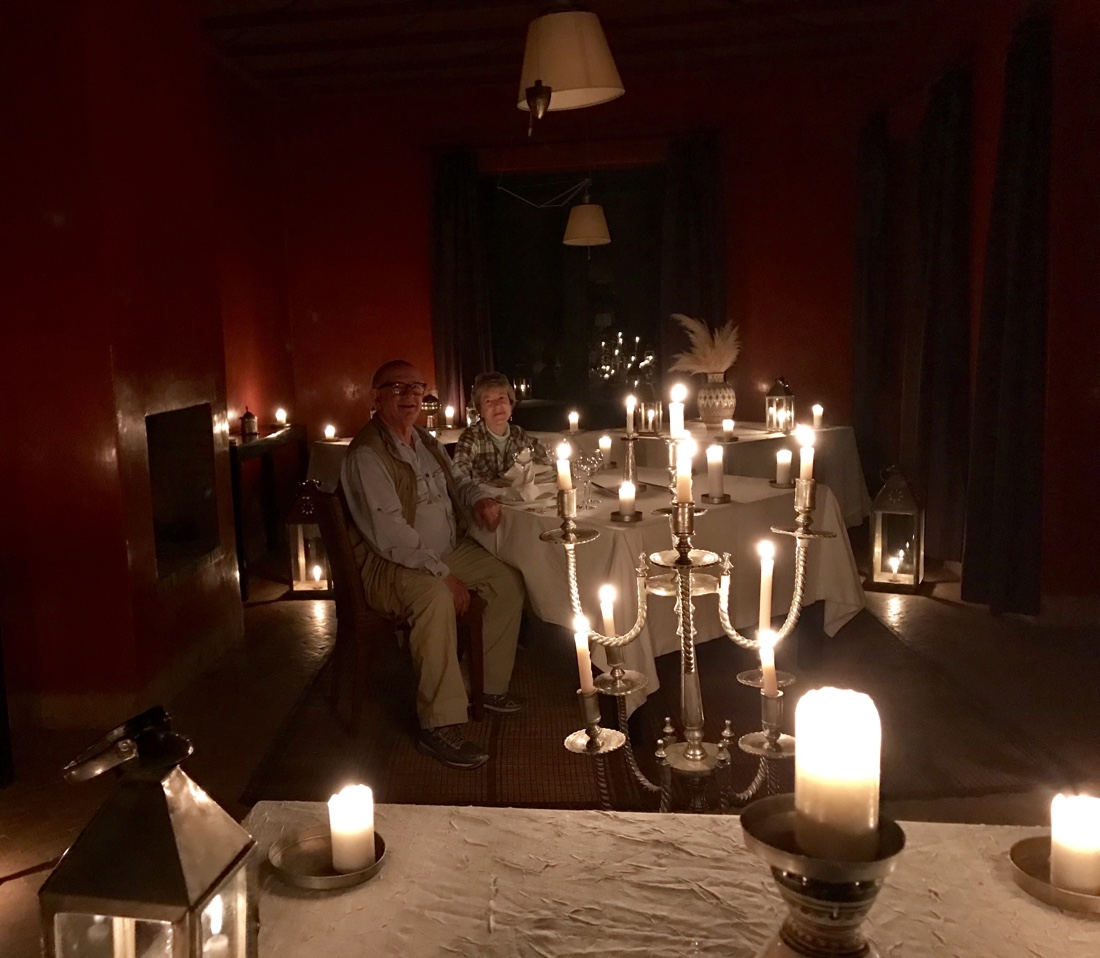
Tomorrow we head for a day/night in the desert. Stay tuned.
We’re off the grid in the desert, so no post tomorrow. Try to deal with it; we’ll catch up day after tomorrow.
|
|









 While there are a few we like, we feel that we did enough rug buying in Fes. We’d actually made the choice to go with a more established and upscale places for rugs and ceramics, instead of opting for funkier individual places, as we certainly would have done fifty-one years ago. A part of me is a bit sad at this realization.
While there are a few we like, we feel that we did enough rug buying in Fes. We’d actually made the choice to go with a more established and upscale places for rugs and ceramics, instead of opting for funkier individual places, as we certainly would have done fifty-one years ago. A part of me is a bit sad at this realization.





 At around one we stop for lunch on the rooftop of a small hotel. When we finish, Jaouad asks whether we’d like to walk to more villages, but we demure. I offer to have Carol walk on and have our driver take me back to the hotel, but she says that she’s had enough walking. We return to the hotel, pick up a few small gifts in the lovely hotel gift shop and go up to the room, to read, blog, nap and start packing.
At around one we stop for lunch on the rooftop of a small hotel. When we finish, Jaouad asks whether we’d like to walk to more villages, but we demure. I offer to have Carol walk on and have our driver take me back to the hotel, but she says that she’s had enough walking. We return to the hotel, pick up a few small gifts in the lovely hotel gift shop and go up to the room, to read, blog, nap and start packing.


 We are invited in for tea and bread made that morning by a young woman and her cute 3-year old nephew.
We are invited in for tea and bread made that morning by a young woman and her cute 3-year old nephew.

 Afterwards, we run into a fellow who talks about old times in the area and tells us that Jewish people who have moved to Tel Aviv still come back to visit.
Afterwards, we run into a fellow who talks about old times in the area and tells us that Jewish people who have moved to Tel Aviv still come back to visit. 
































 Stargaze tonight and then rise with the first hints of the brilliant North African sun to enjoy a breakfast table poised on the rippling sands; tough, huh?
Stargaze tonight and then rise with the first hints of the brilliant North African sun to enjoy a breakfast table poised on the rippling sands; tough, huh?

 It’s Carol, wrapped in a blanket to protect herself from the chill morning air.
It’s Carol, wrapped in a blanket to protect herself from the chill morning air. We arrive at the fabulous Dar Ahlam Kasbah at which we are staying. Pictured below are the grand salon and a lunch they have set for us in the garden.
We arrive at the fabulous Dar Ahlam Kasbah at which we are staying. Pictured below are the grand salon and a lunch they have set for us in the garden.















 Carol’s fortuitous need to visit the ladies room allows me to capture one of my better photos of the trip.
Carol’s fortuitous need to visit the ladies room allows me to capture one of my better photos of the trip.
 (The “Younes twins”, Younes the driver on the left and Younes the guide on the right, pose for a photo in front of the horses.)
(The “Younes twins”, Younes the driver on the left and Younes the guide on the right, pose for a photo in front of the horses.)



